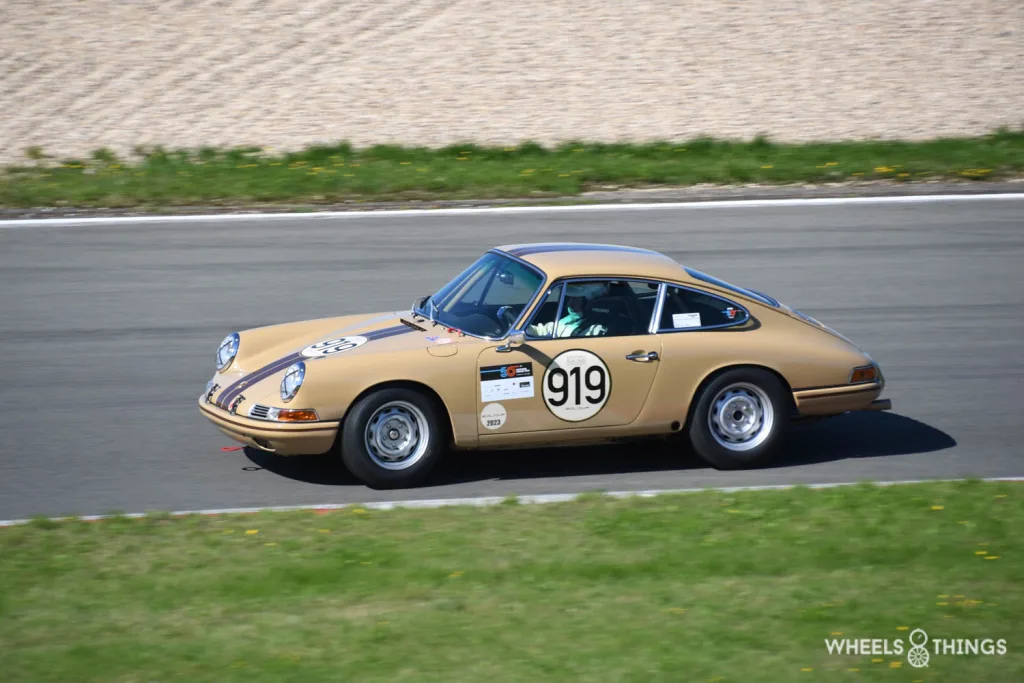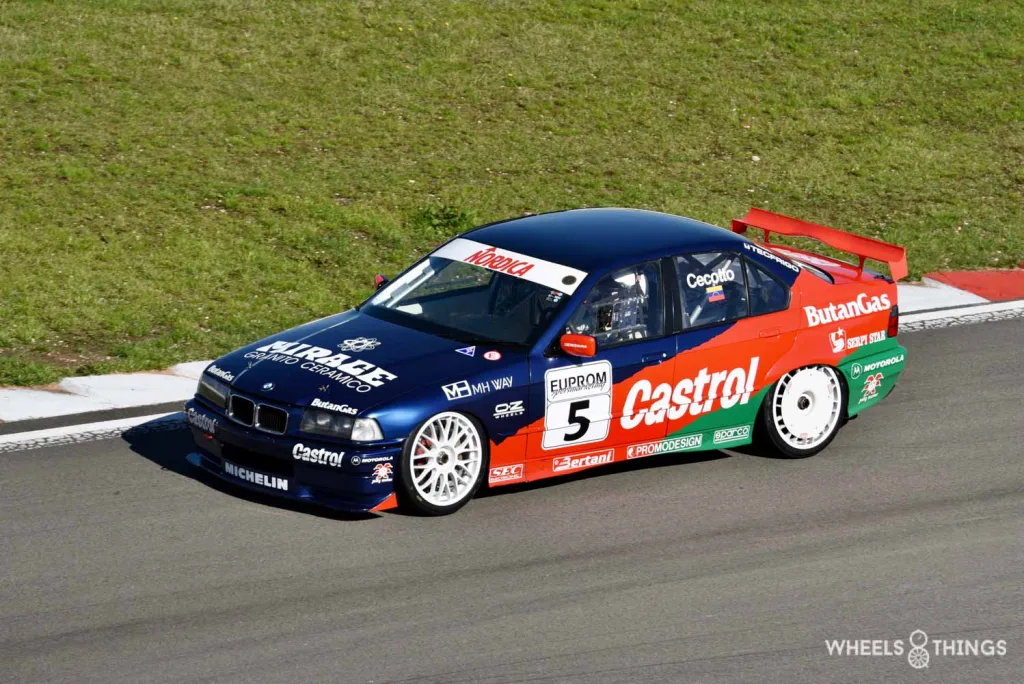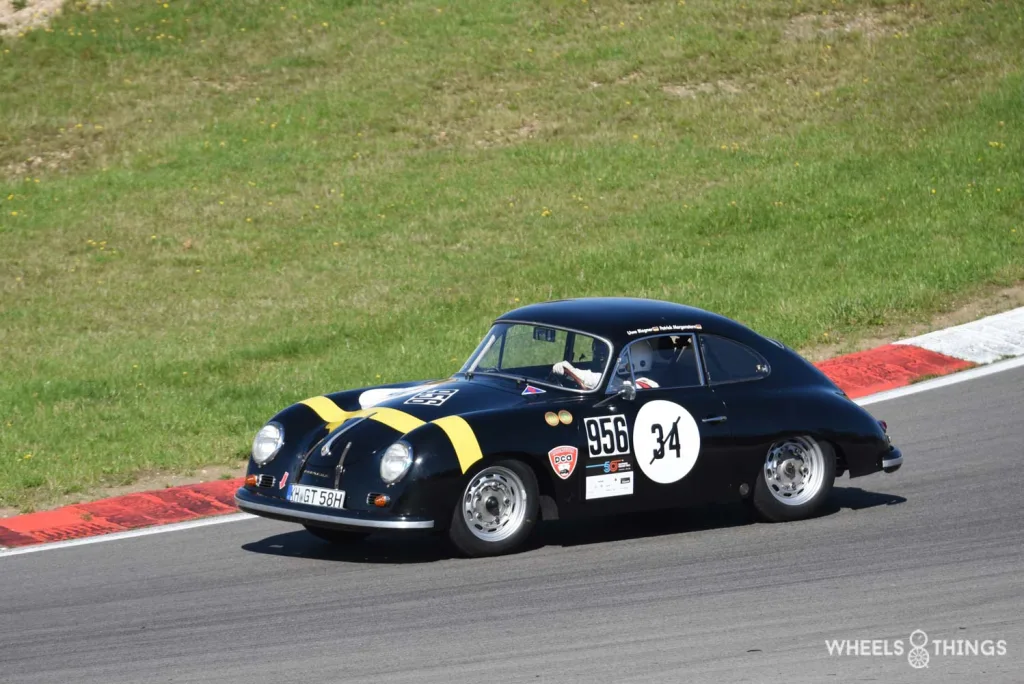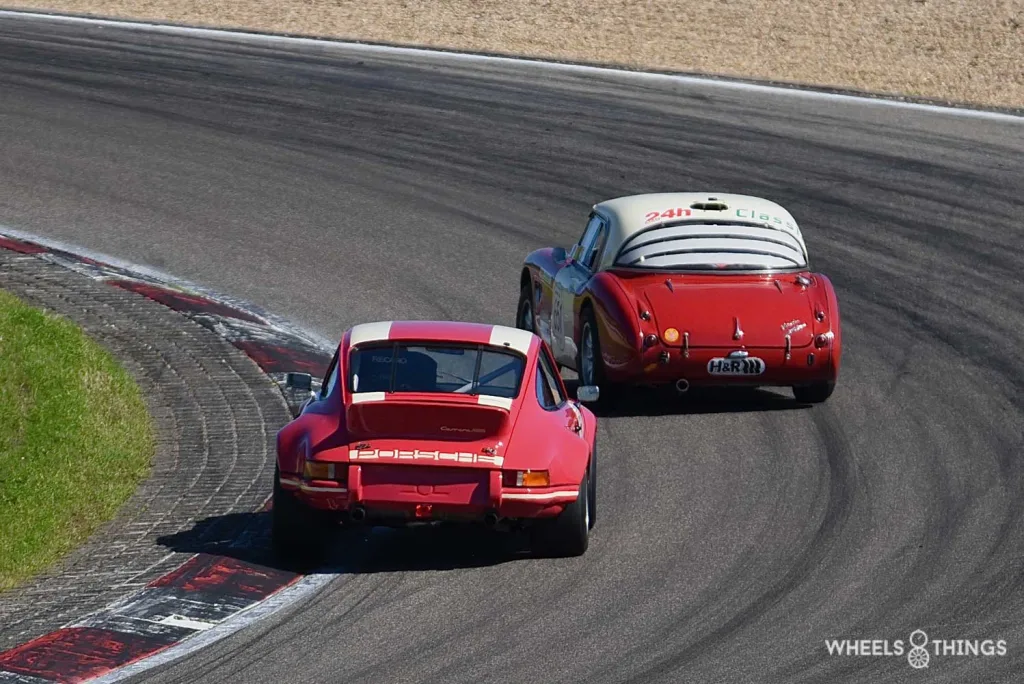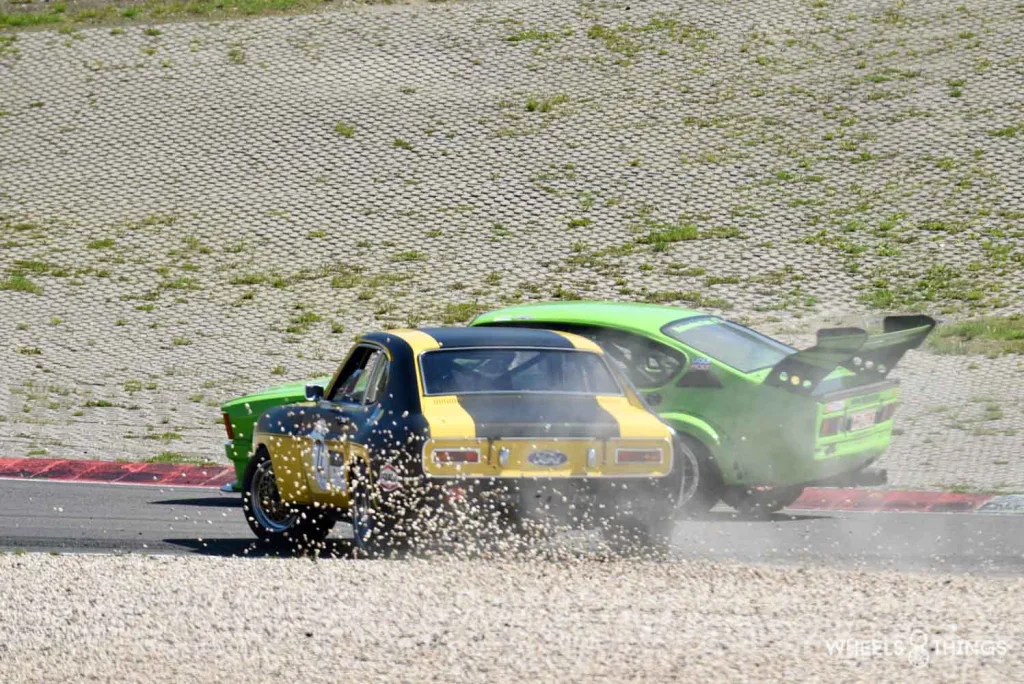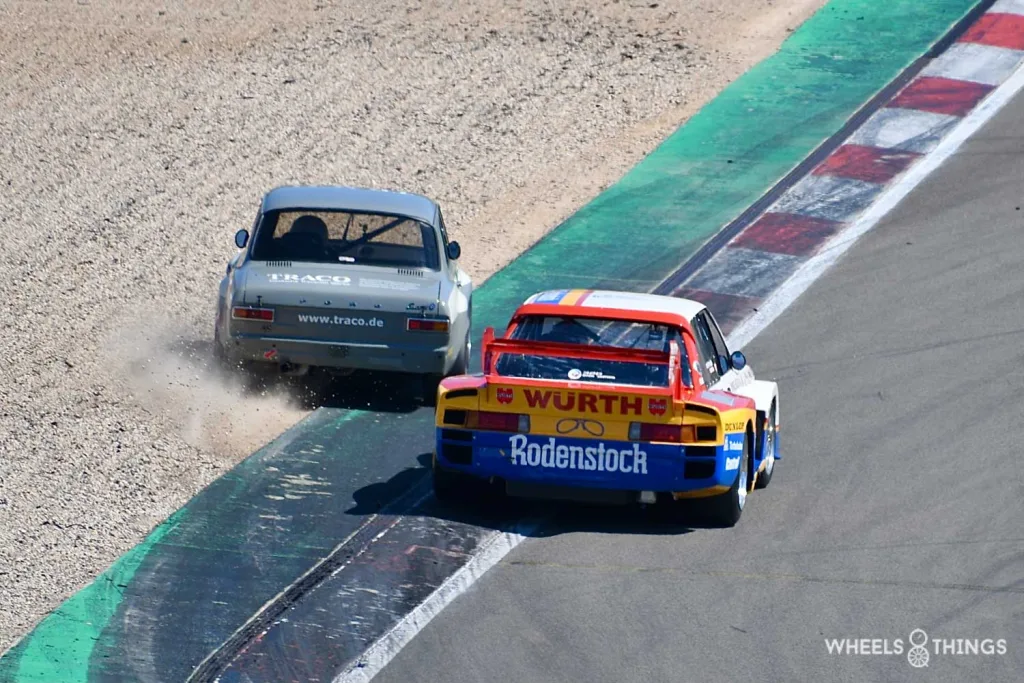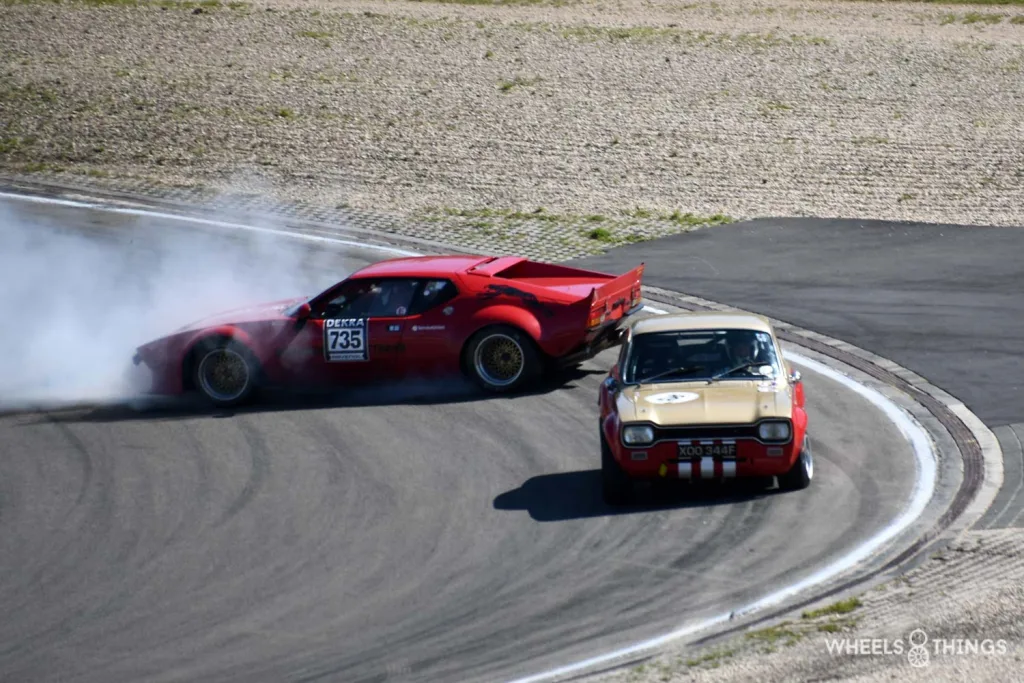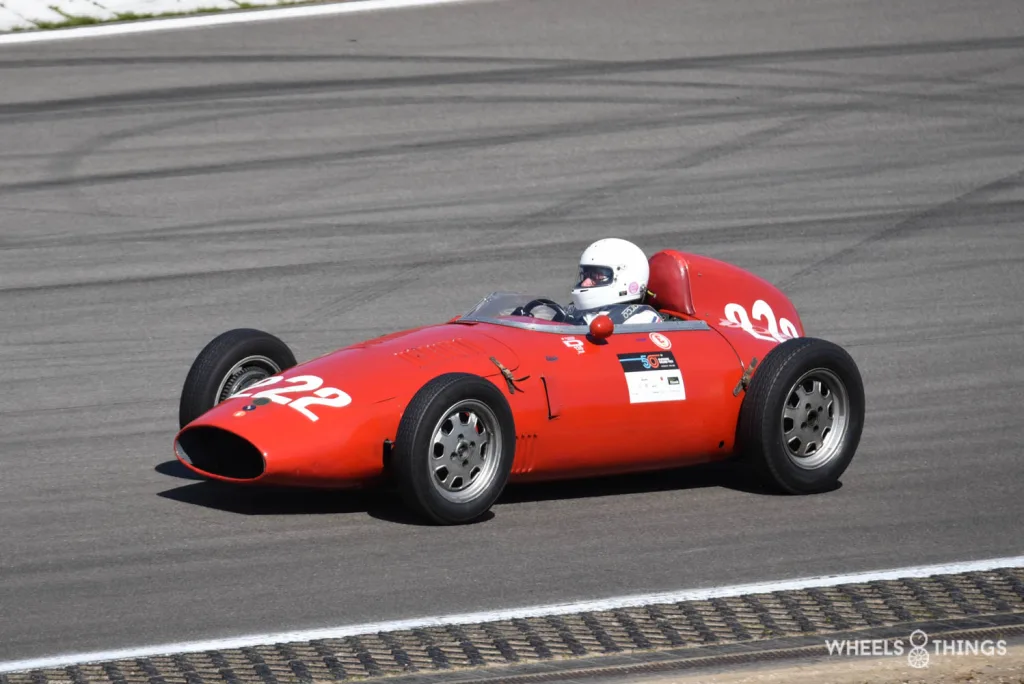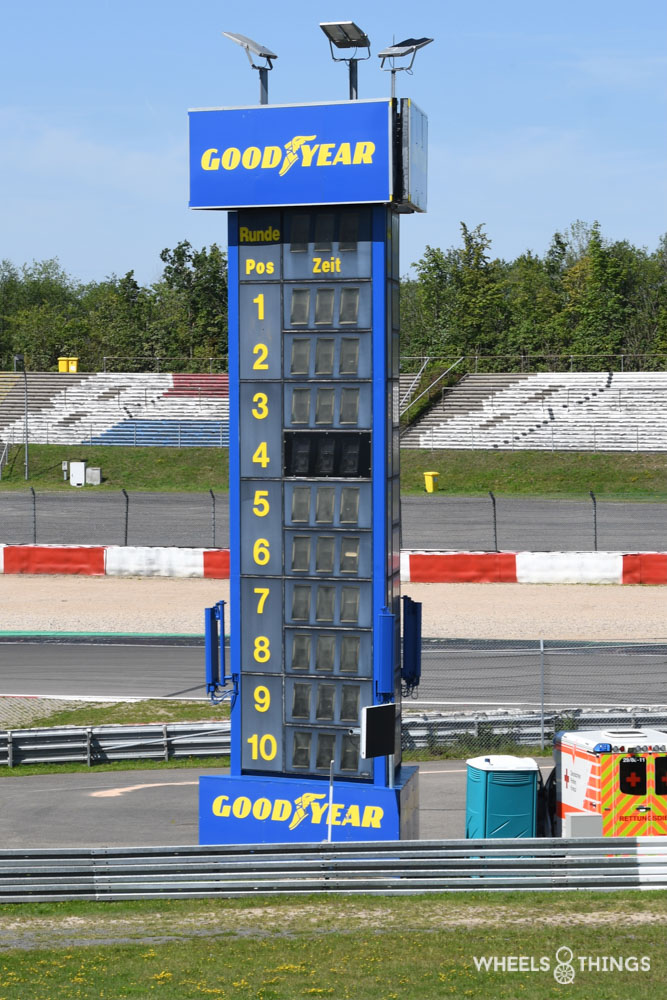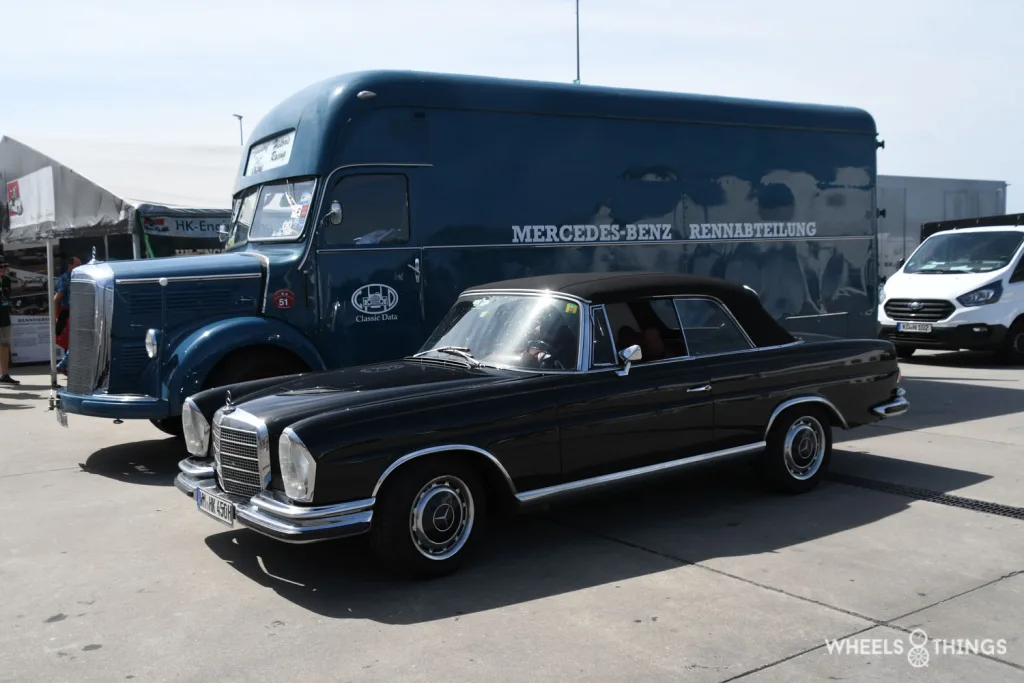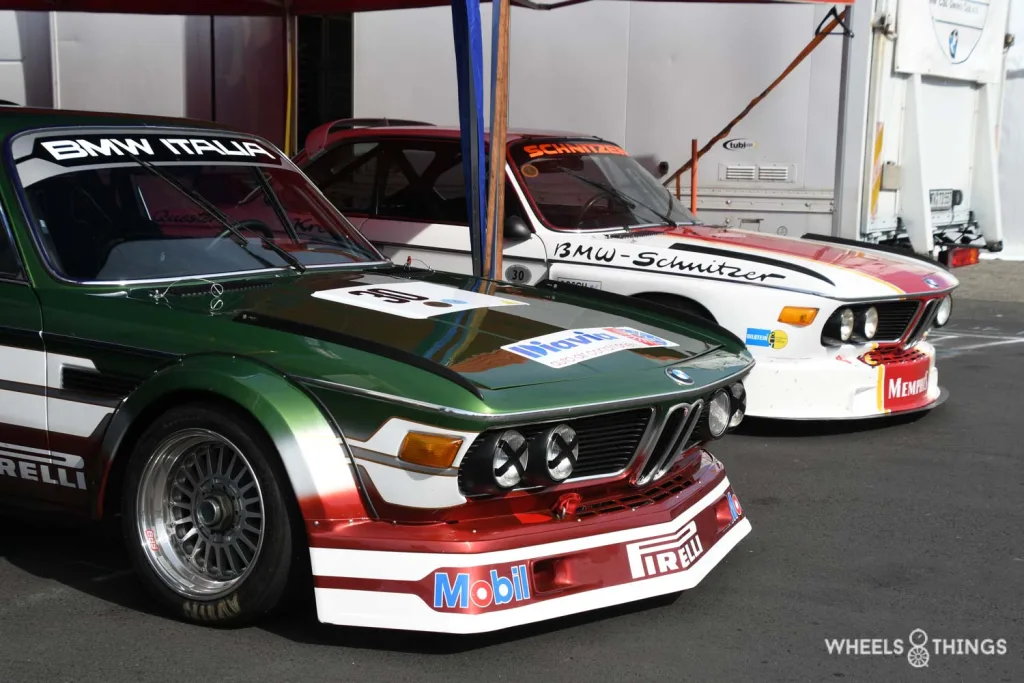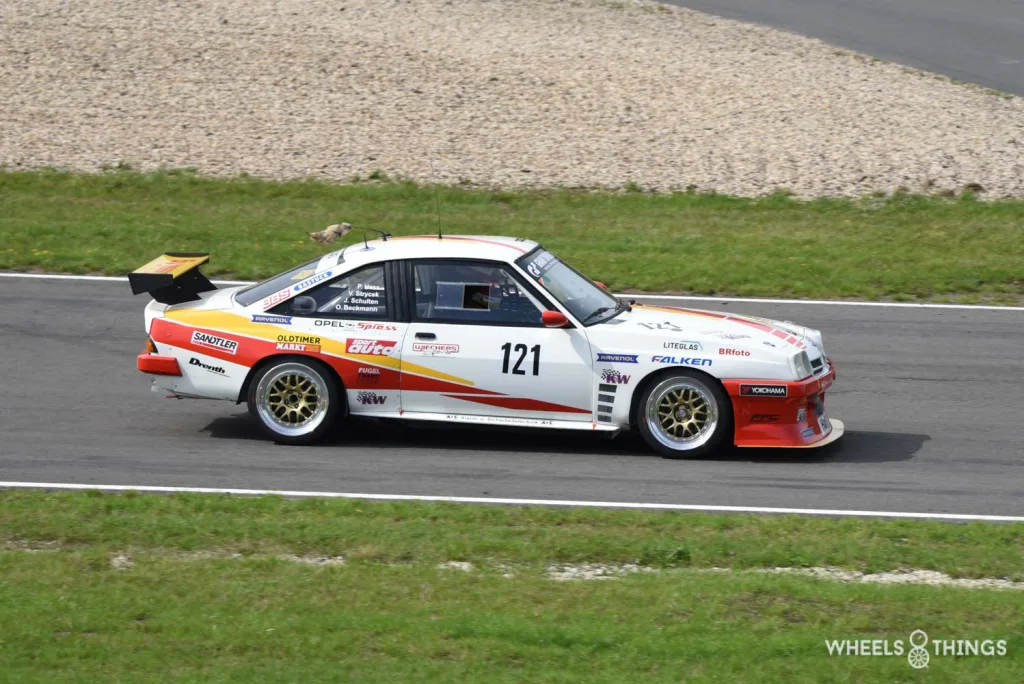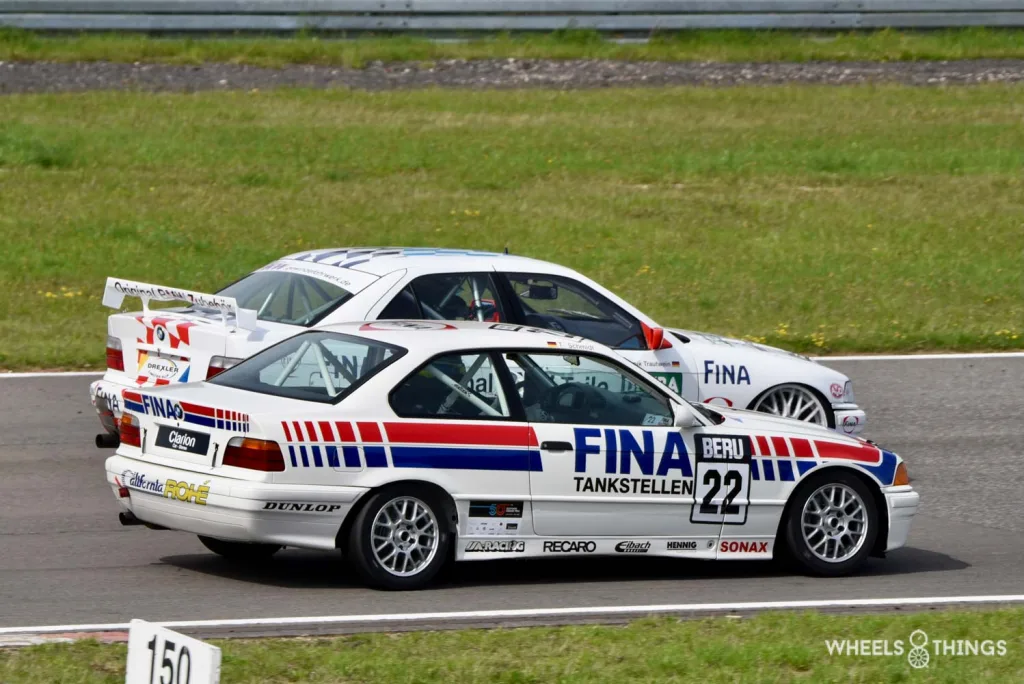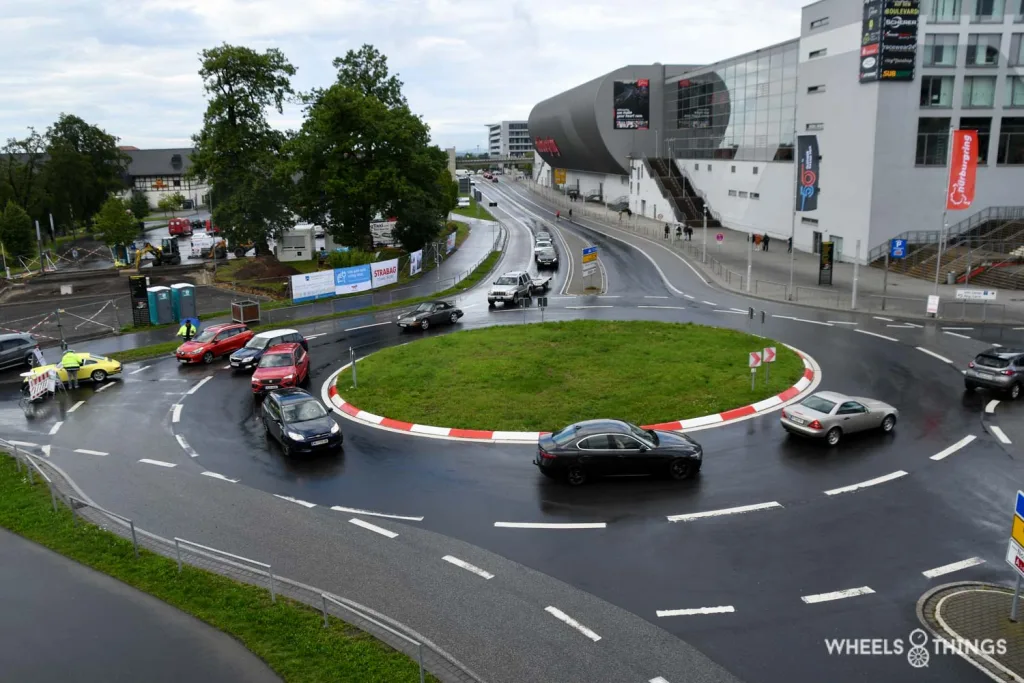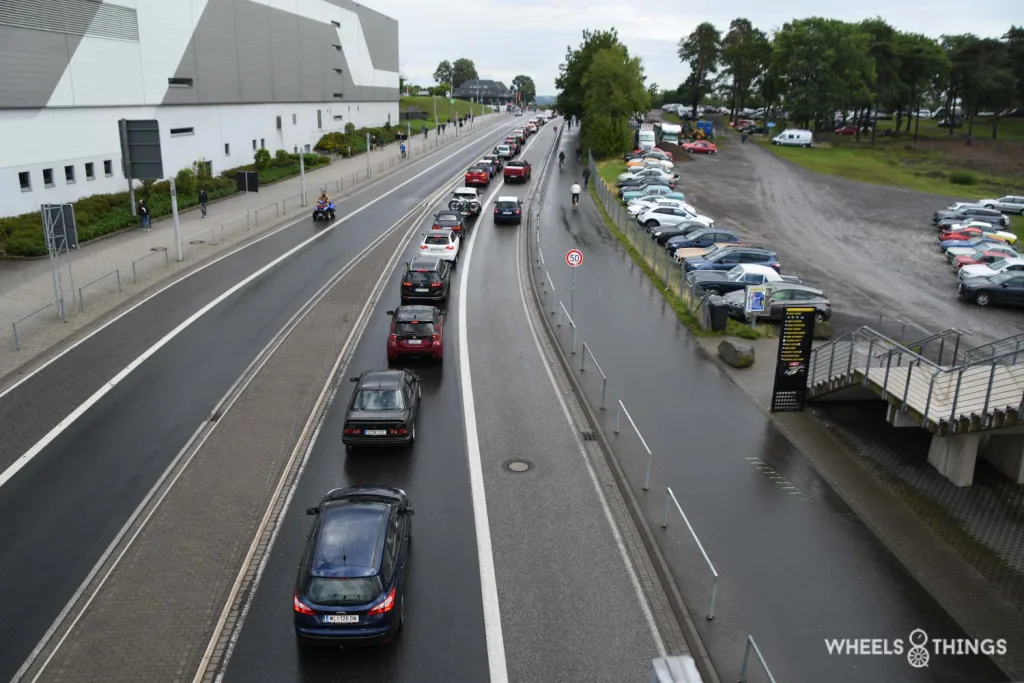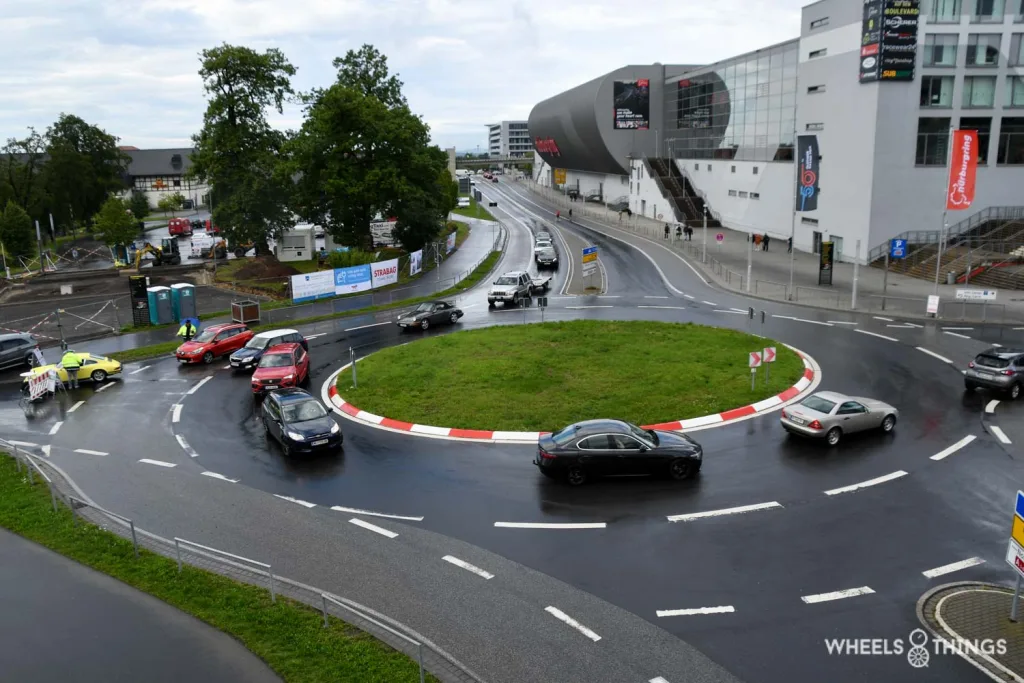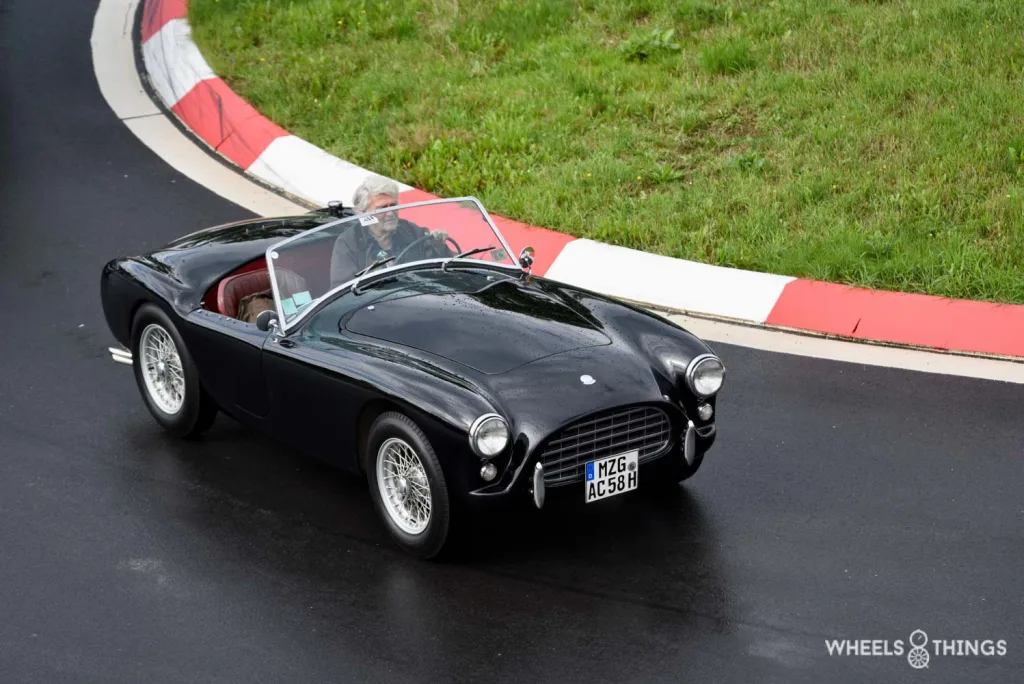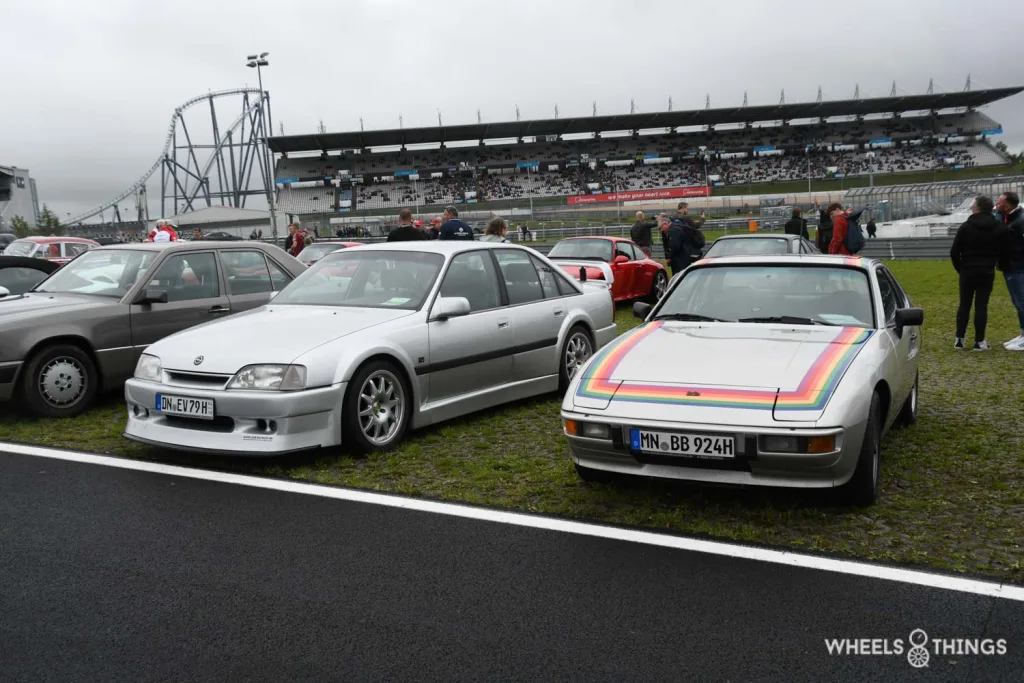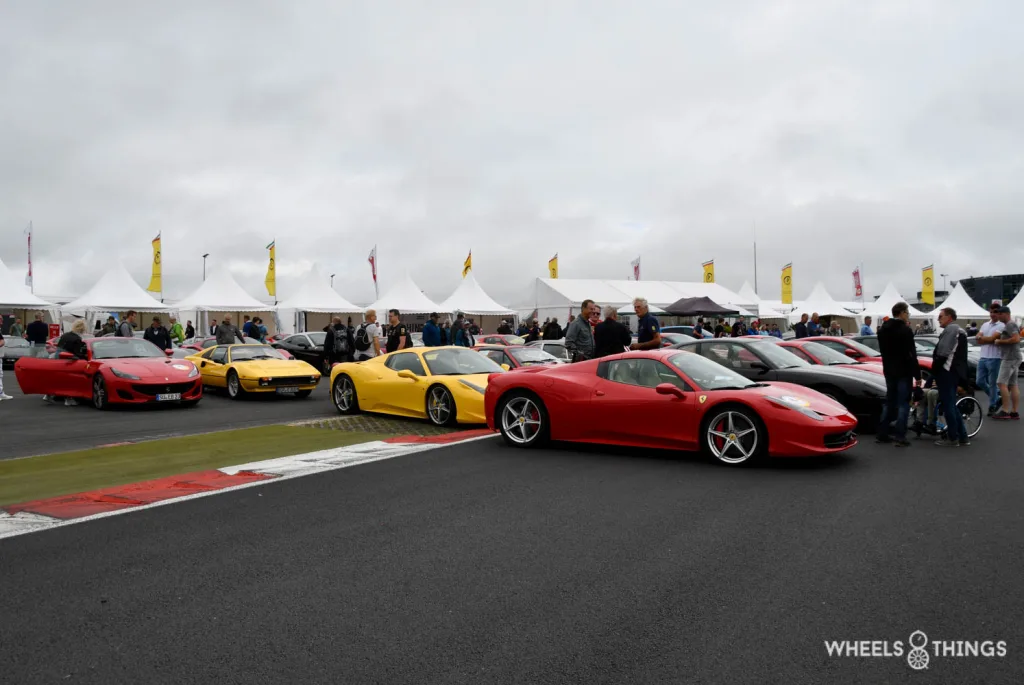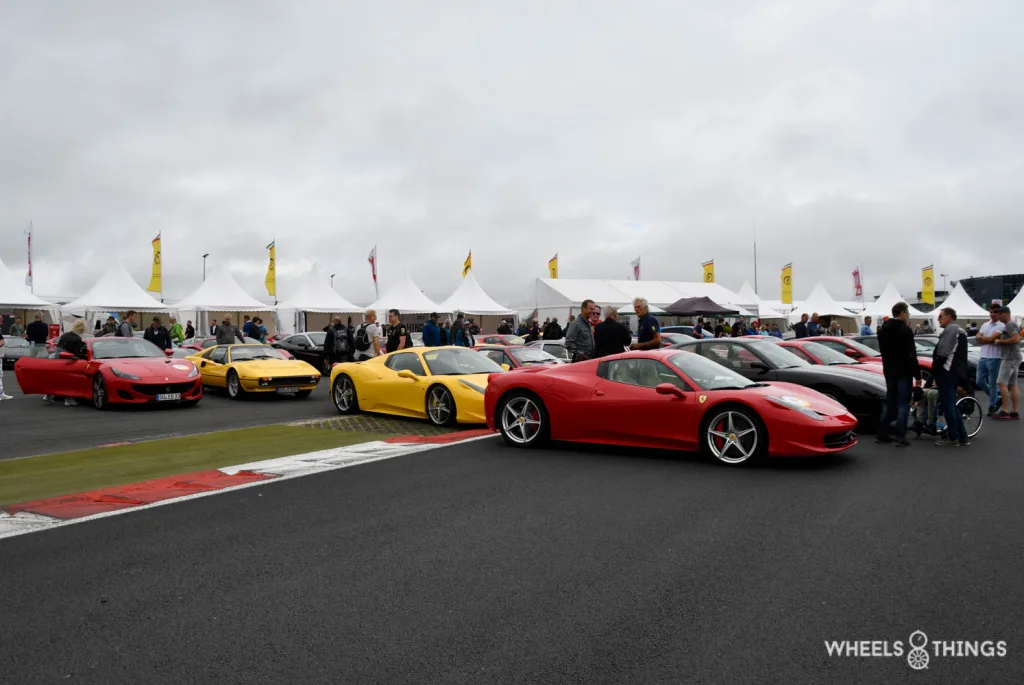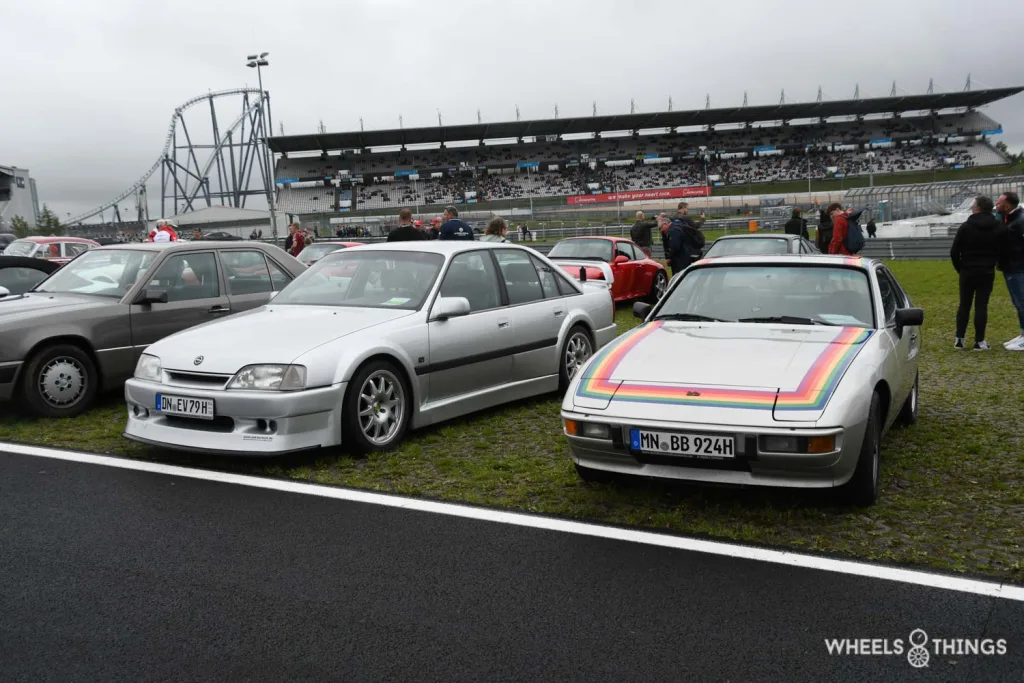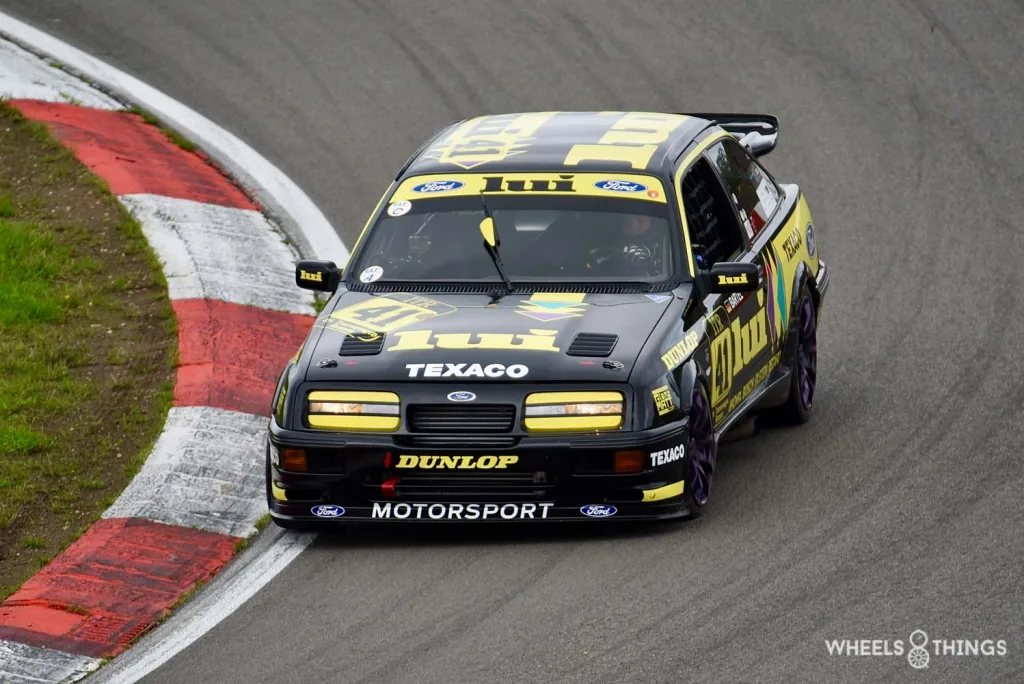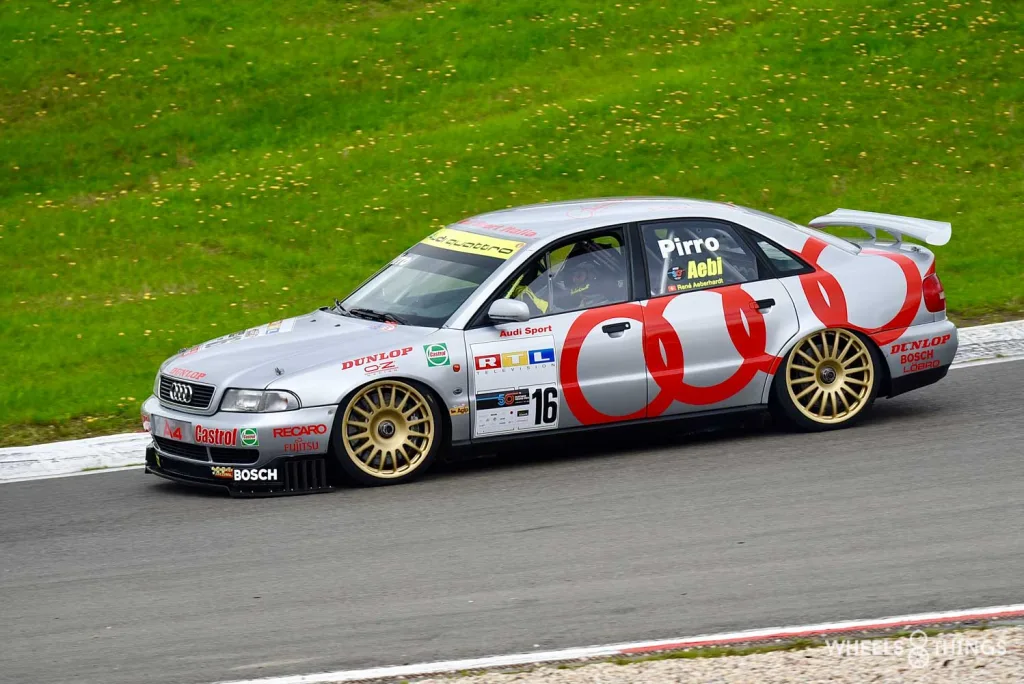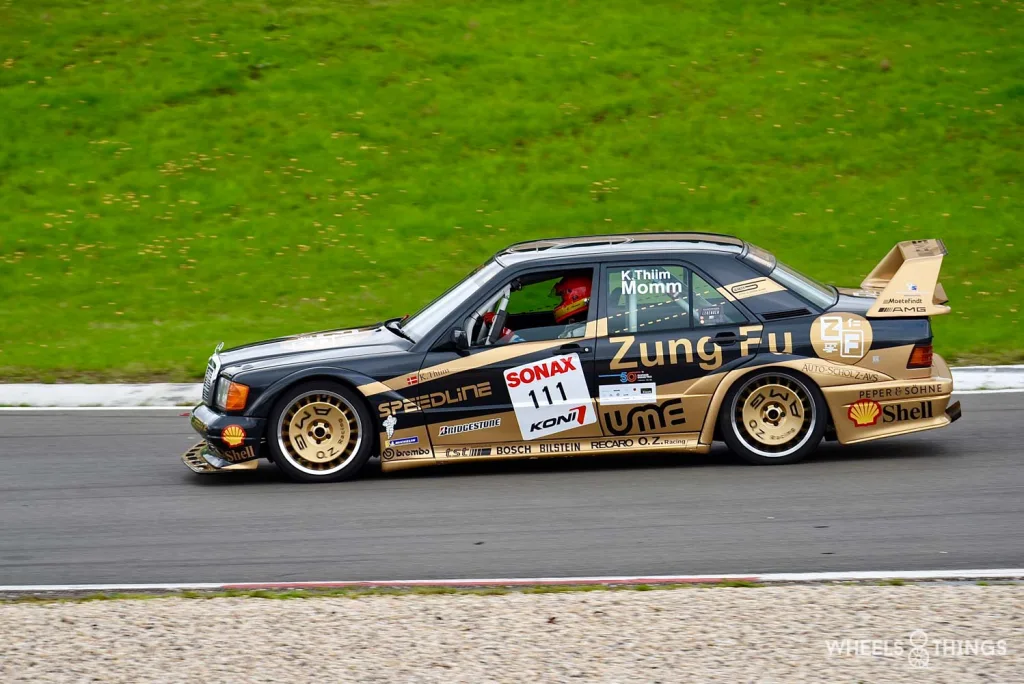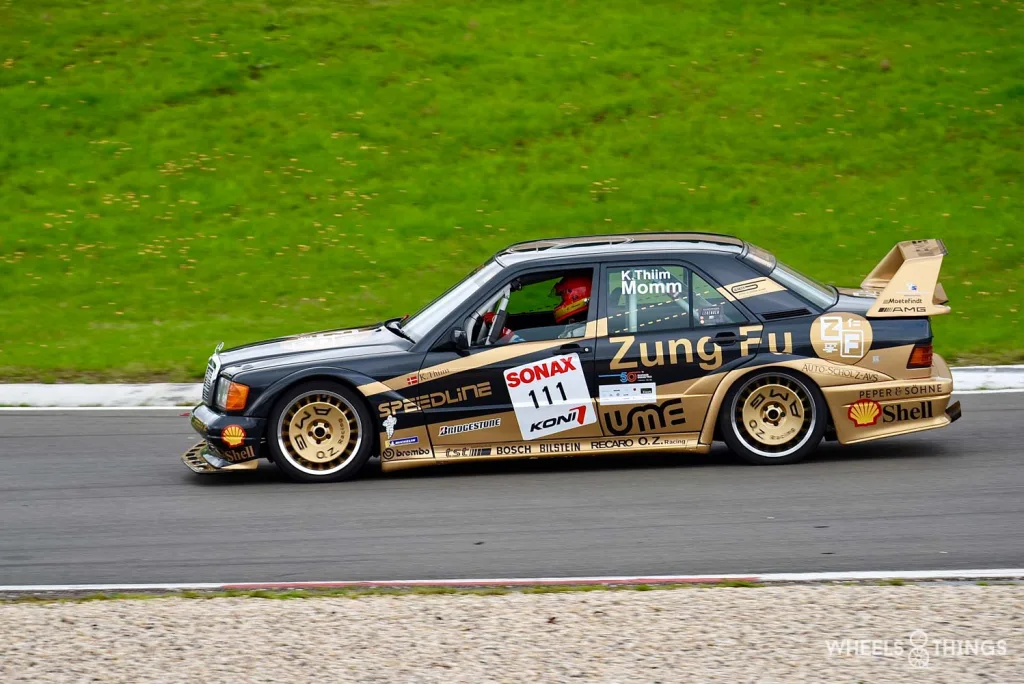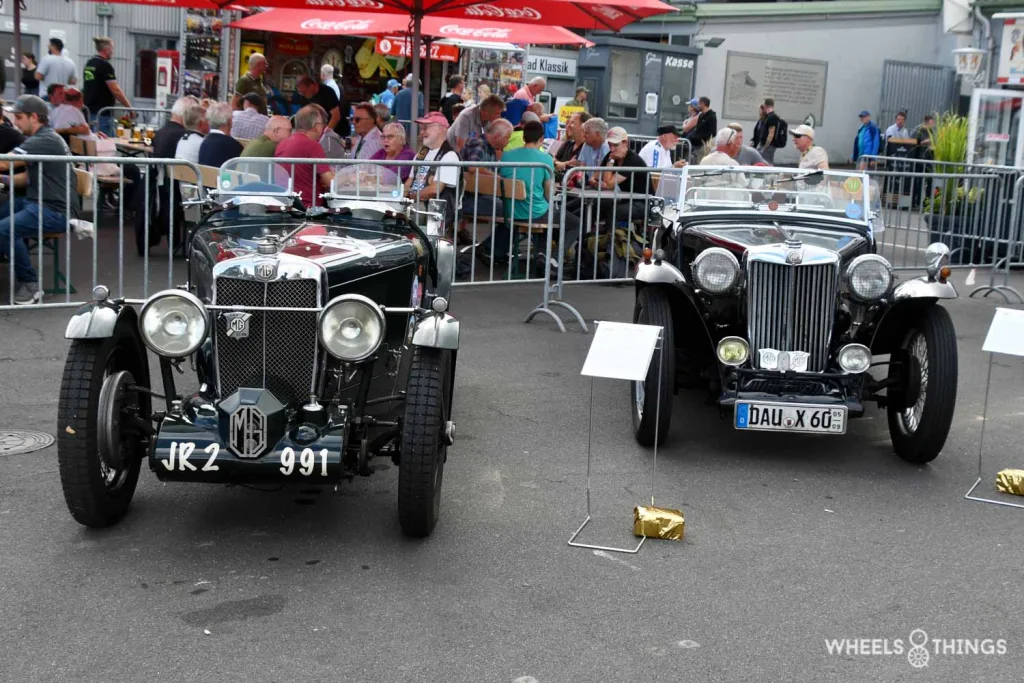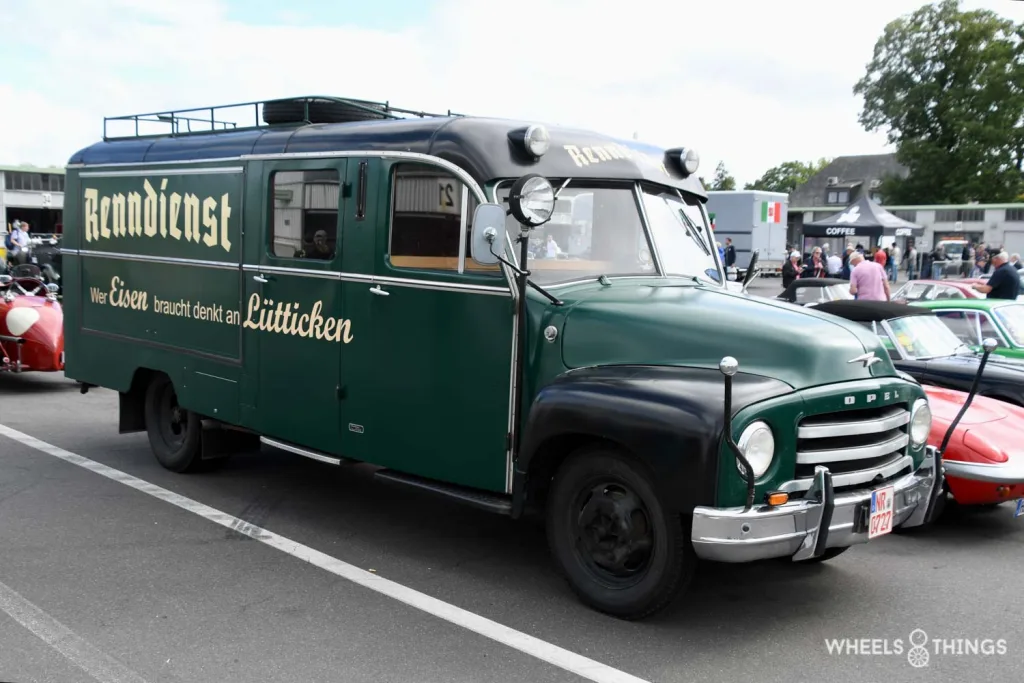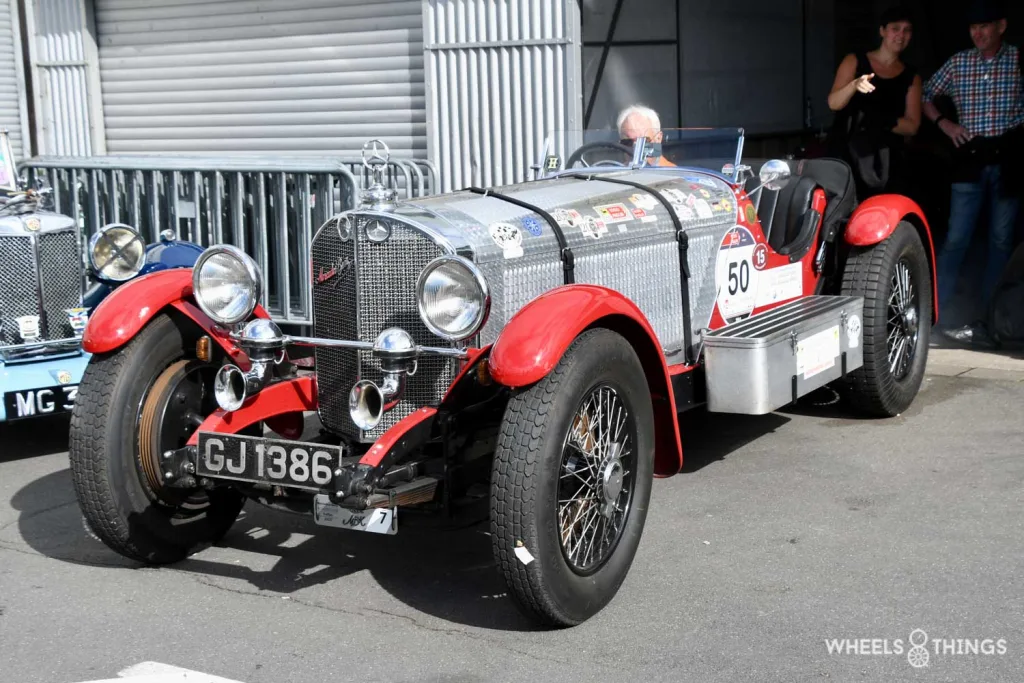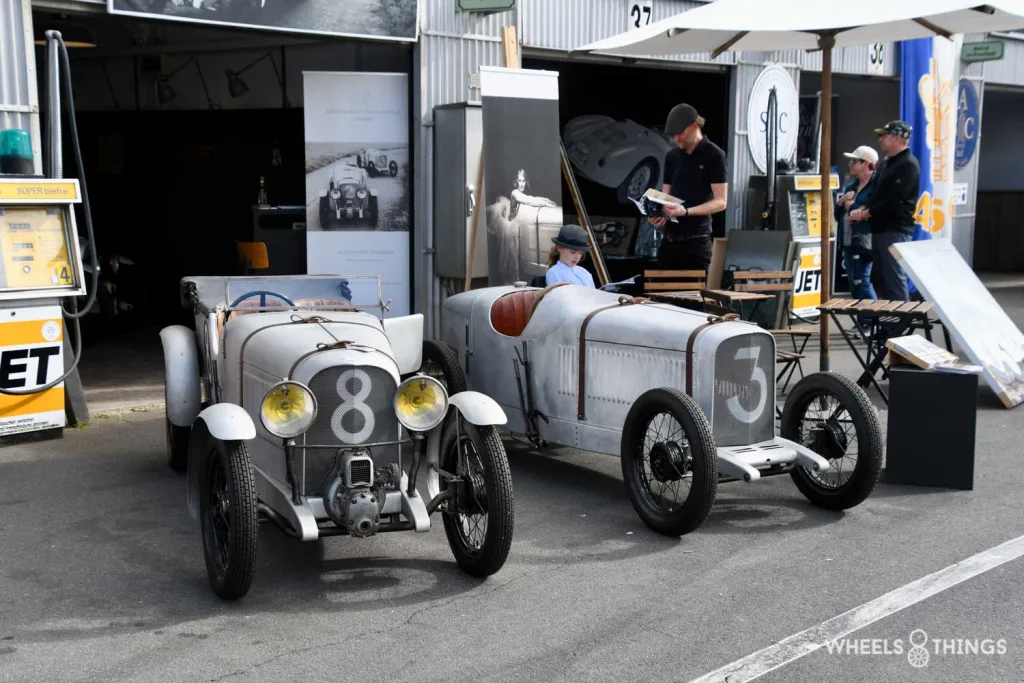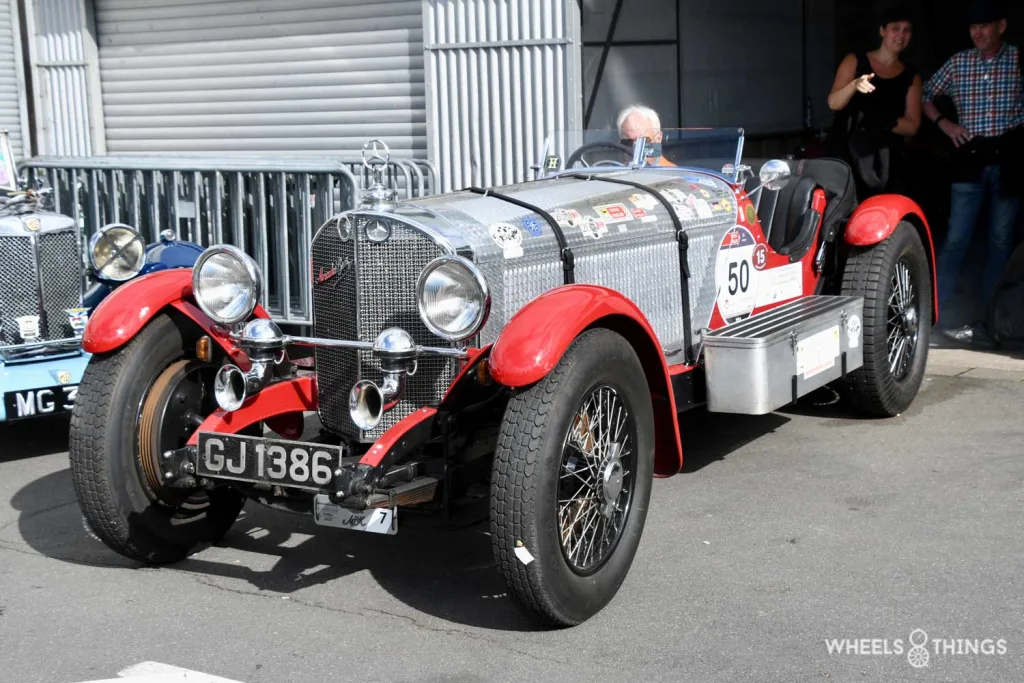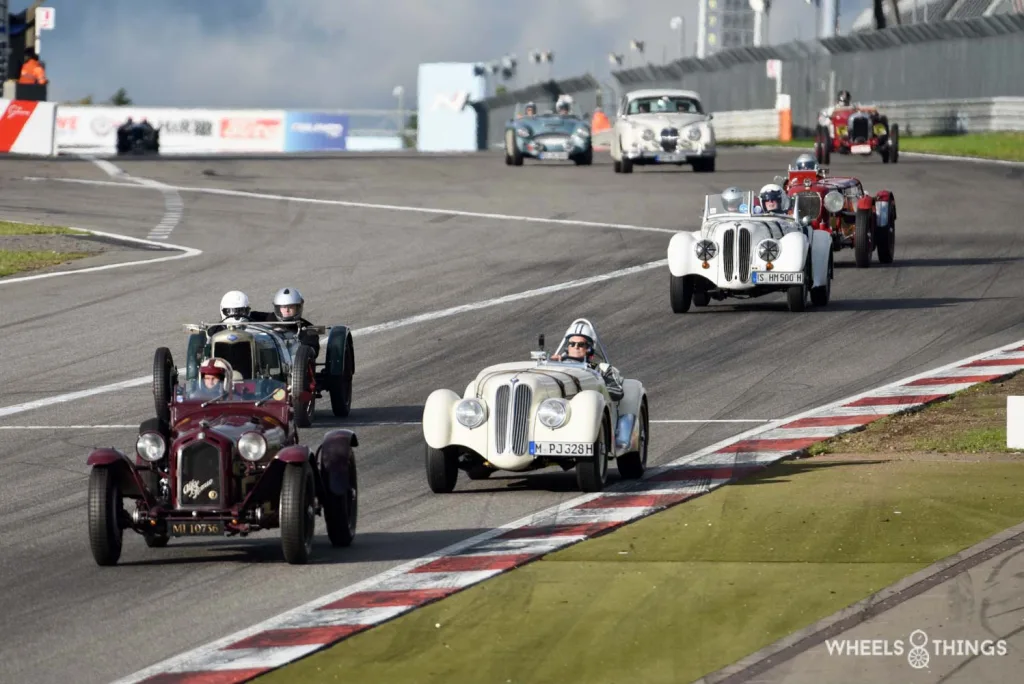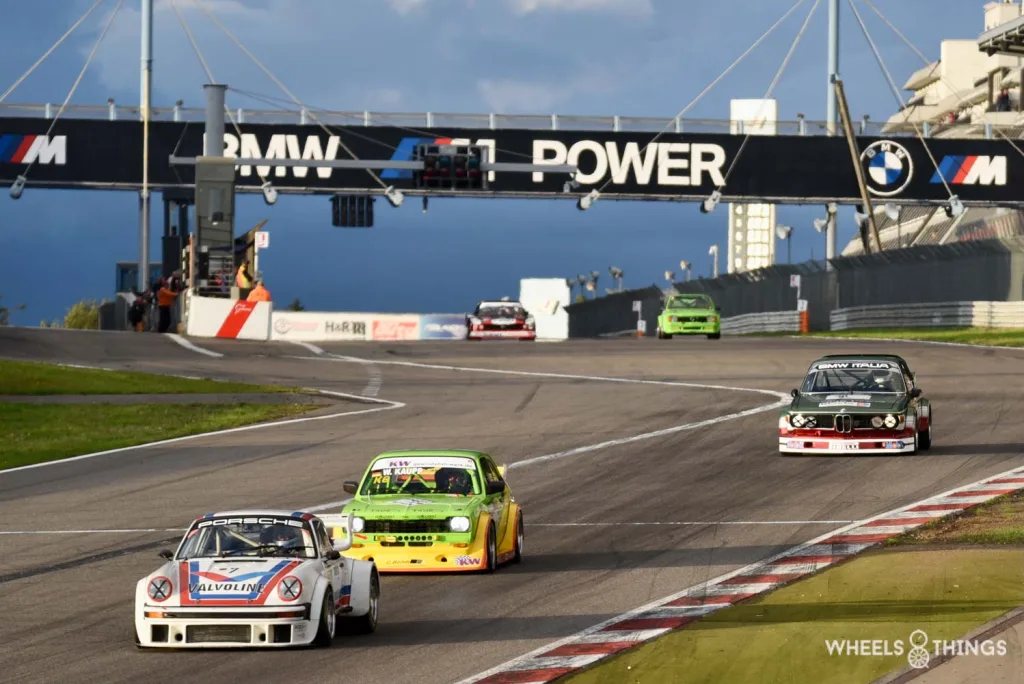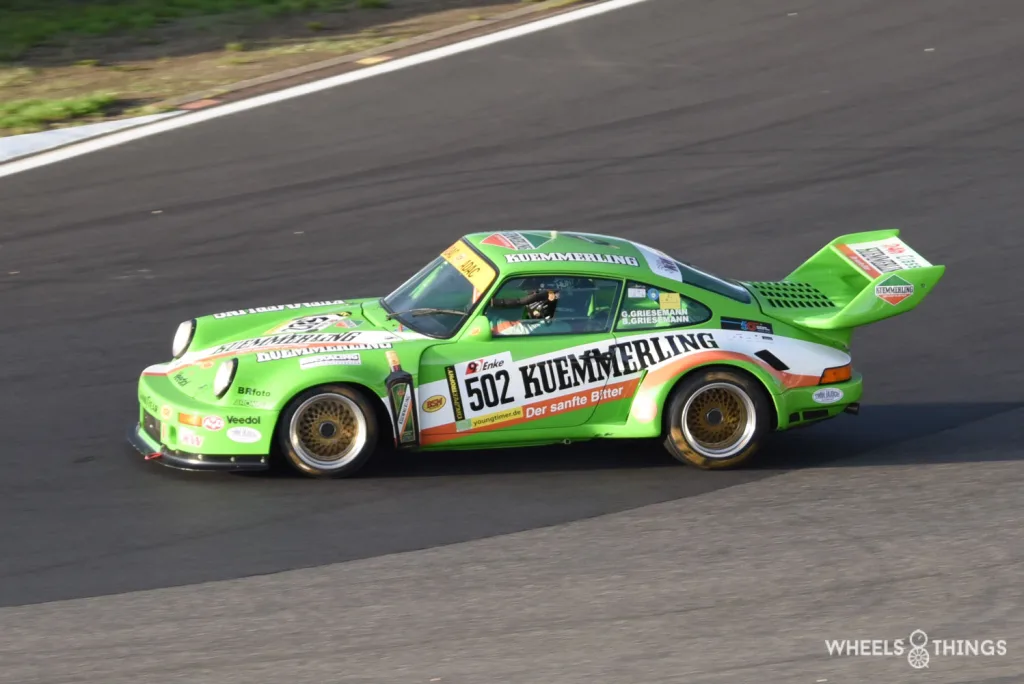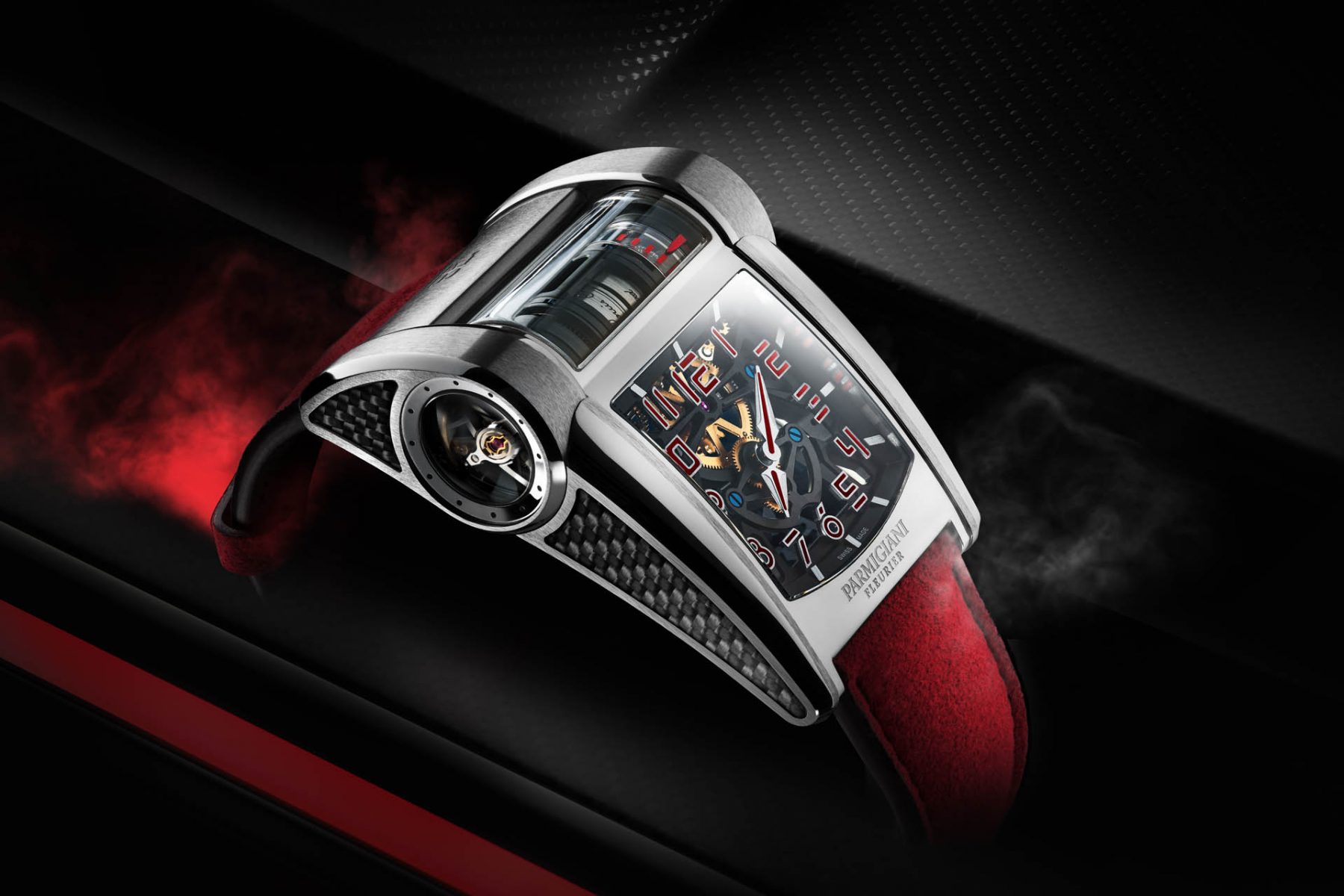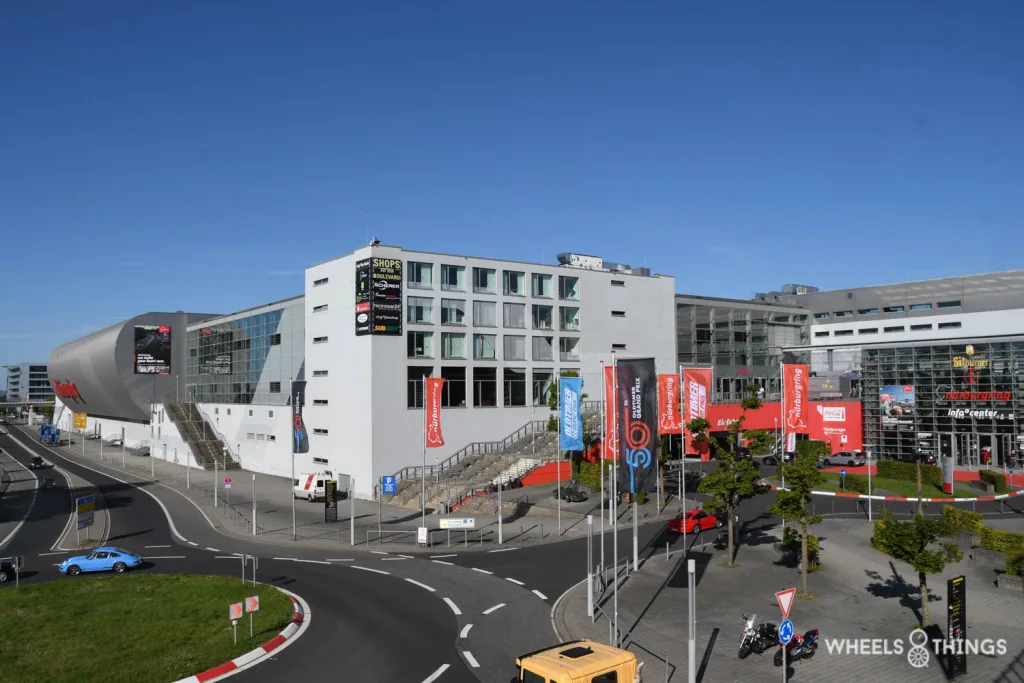
It is indeed half a century since the Oldtimer Grand Prix at the Nürburgring saw the light of day. It started small-scale as the “Nürburgring Show” and grew into one of the top classic events at European level. Over the years, it became a bit of a “Classic Among Classics” in terms of circuit-related organisations.
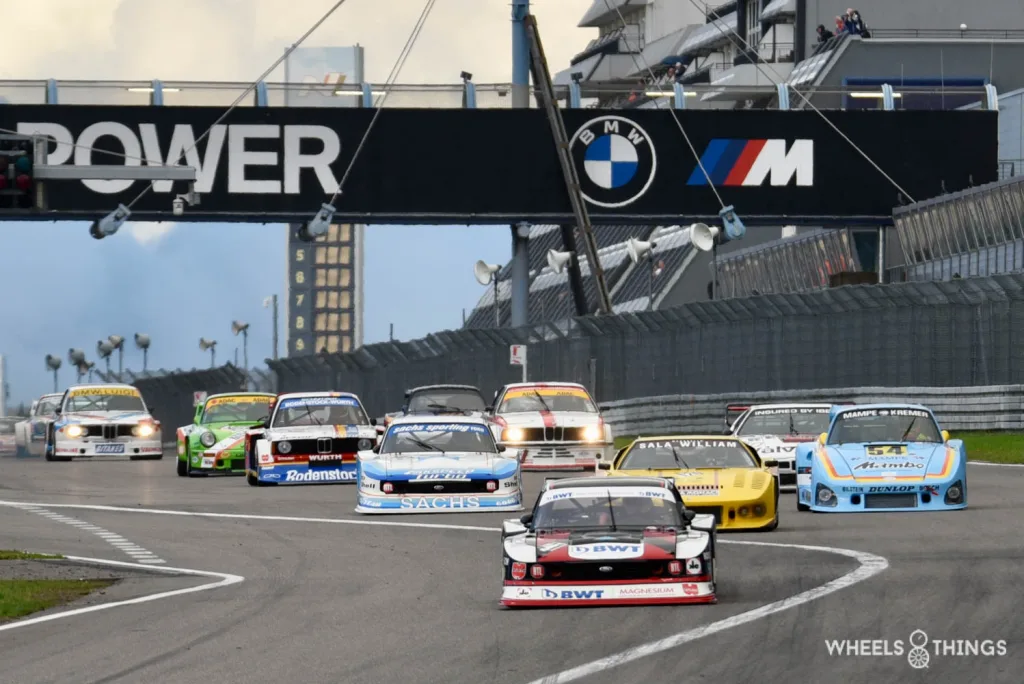
It is at the OGP that you should be for the typical “German” series such as the DRM and DTM. We have attended regularly in the past and you can find our reports via our search engine by entering Nurburging and editions 44/45/46/47 and 49 will pop up automatically.
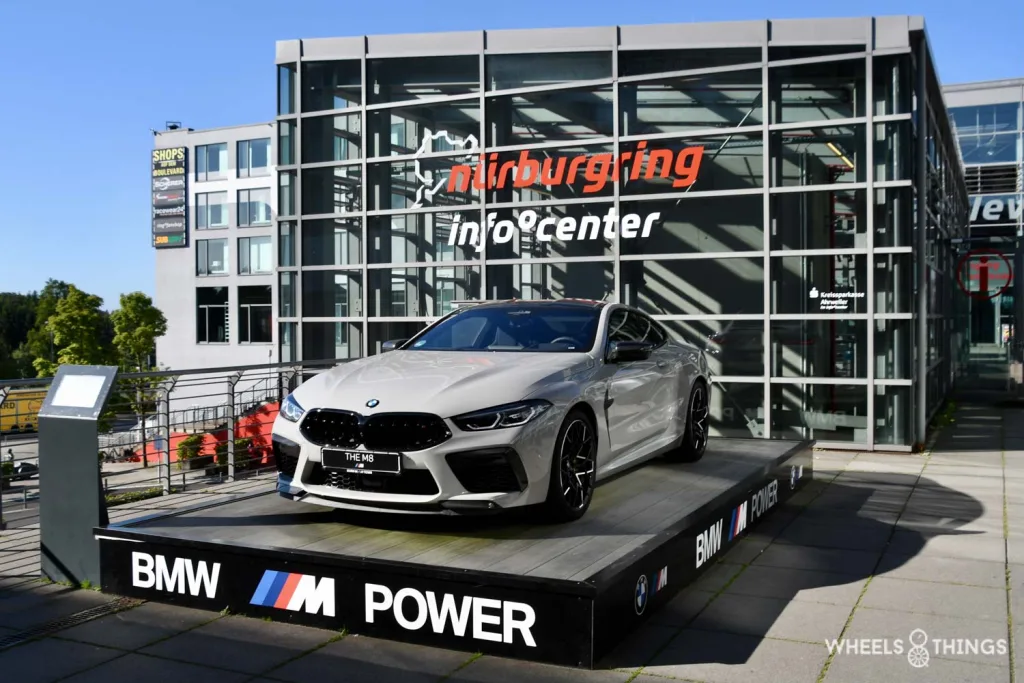
The 50th anniversary did start somewhat on a minor note. The English organiser of the Masters Series had opted not to include the OGP in its programme this year. They had chosen the Hockenheim circuit for their German outing at the beginning of May. A pity because this meant spectators could no longer enjoy the historic F1 and Sportscar races. Even the Masters Endurance Legends were no longer starting this way. A pity though because this was always a big part of the programme.
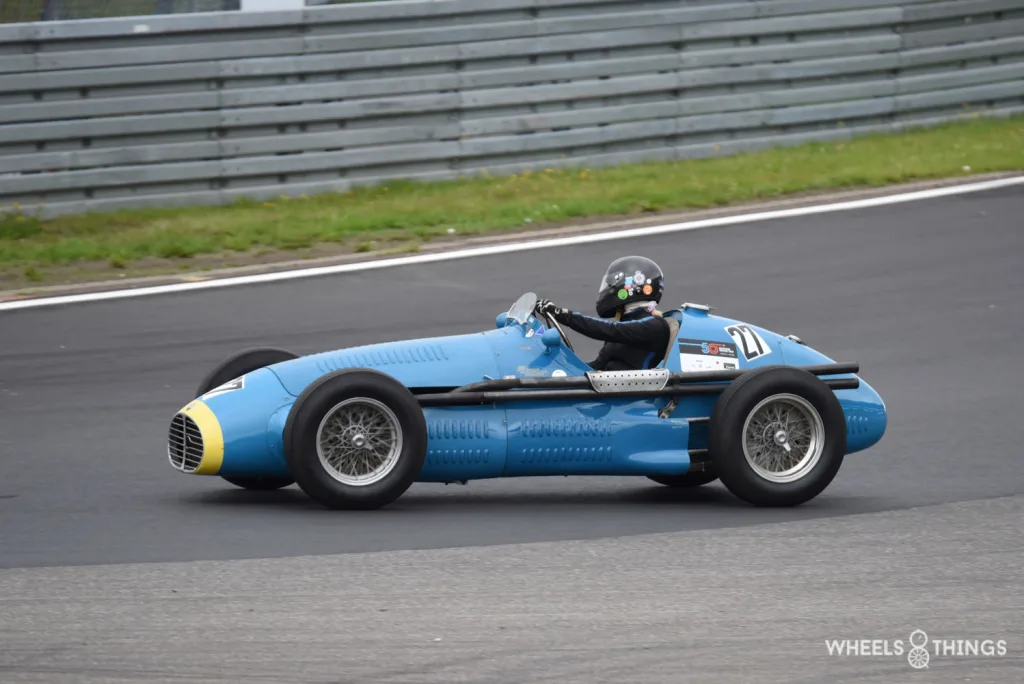
The Grand Prix Cars Association with cars up to 1965 and Formula Lurani did attend and additionally the organiser had arranged for a Formula 2 and 3 race. To compensate for the loss of F1, there was a demo with F1 cars.
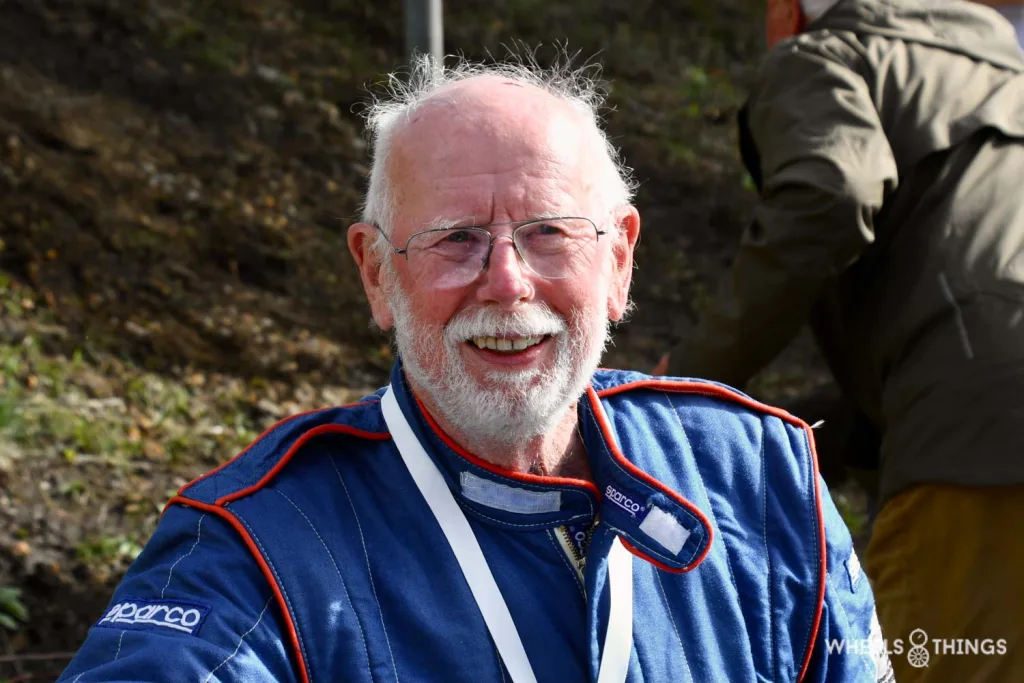
Besides the OGP, there was another person who got to blow out 50 candles. We had also reported this in previous coverage that Uli Sauer had participated in all the editions of the OGP with his BMW 328.
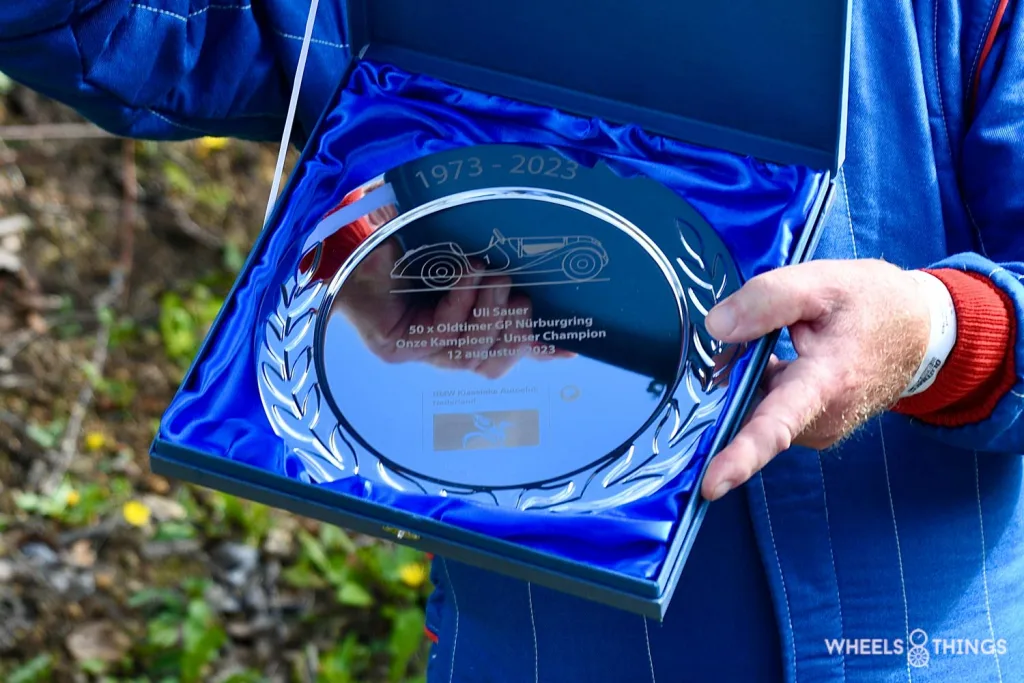
The now 81-year-old Uli was there again this year with his white BMW and was celebrated for his 50th participation.
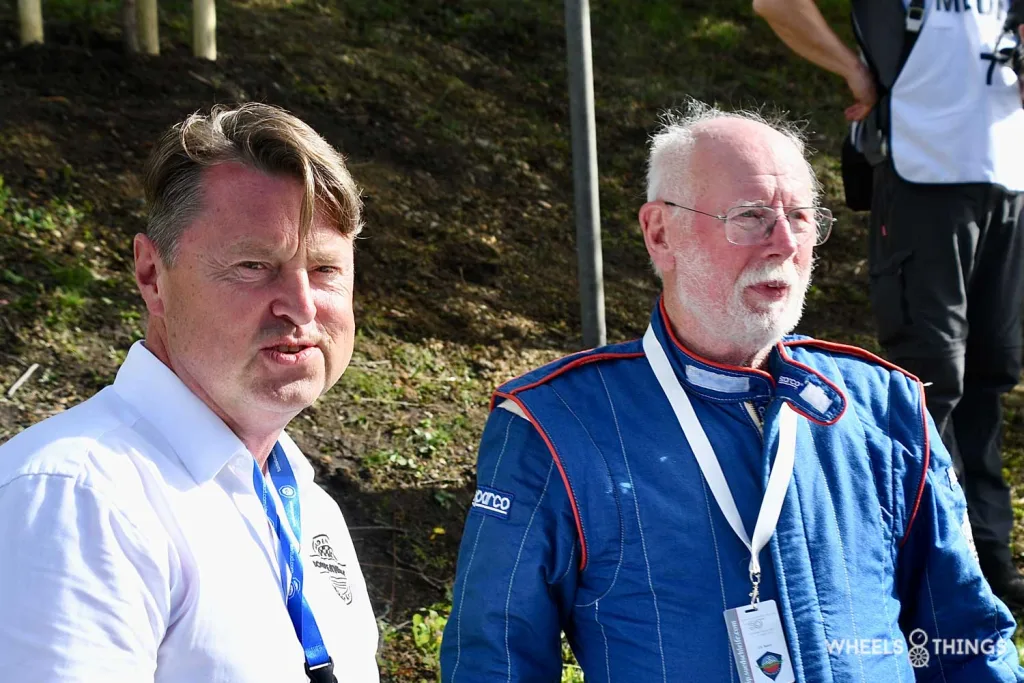
He was given a silver plate with the image of his 328 by the organiser. A maple tree was also planted at the same time. This is a great honour at the Nürburgring. Normally, only great champions like e.g. Michael Schumacher or Bernd Schneider get such a tree for their achievements.
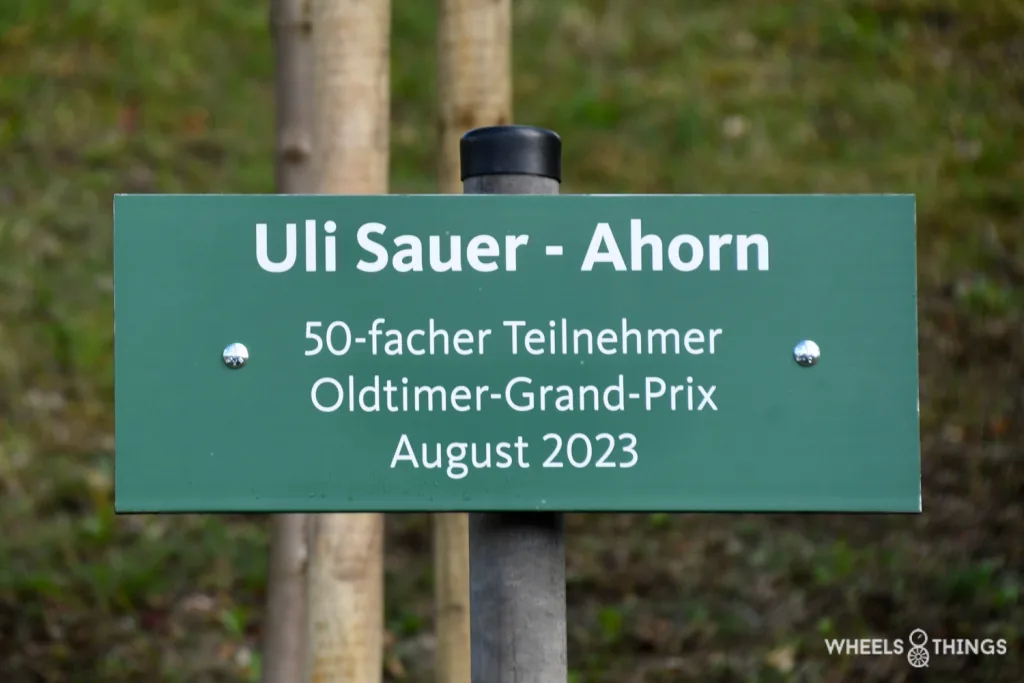
This maple tree was planted just in front of the entrance to the old historic paddock where Uli’s BMW finds its permanent place every time he participates.
DRM REVIVAL
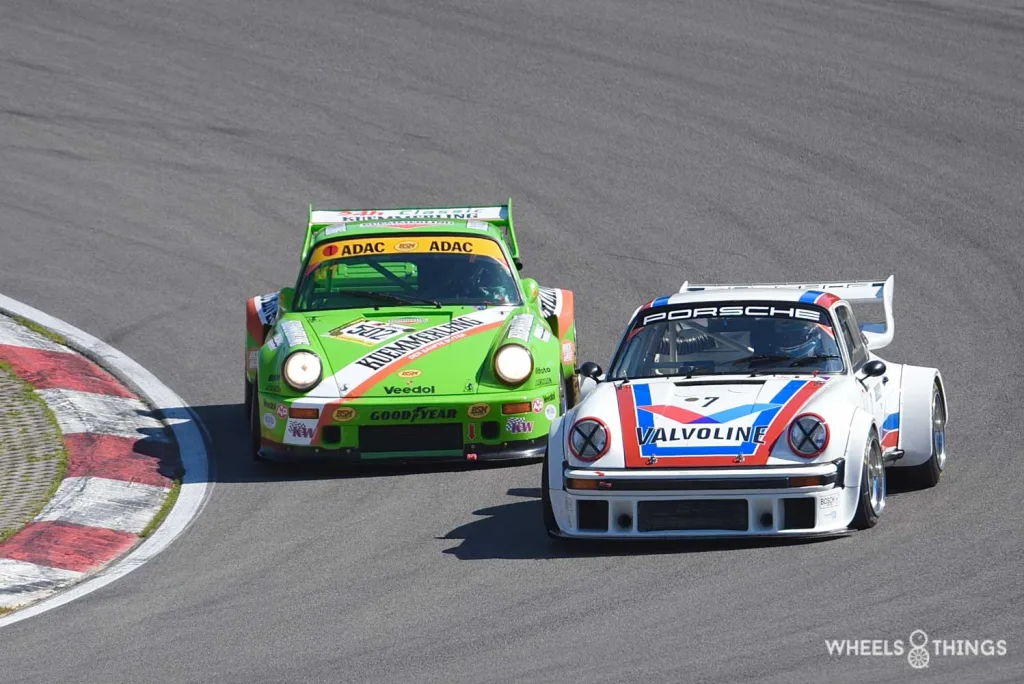
We had already mentioned it: it is for the typical German series that you have to visit the OGP. The DRM with its big, fat and predominantly German cars was undoubtedly the main event this year.
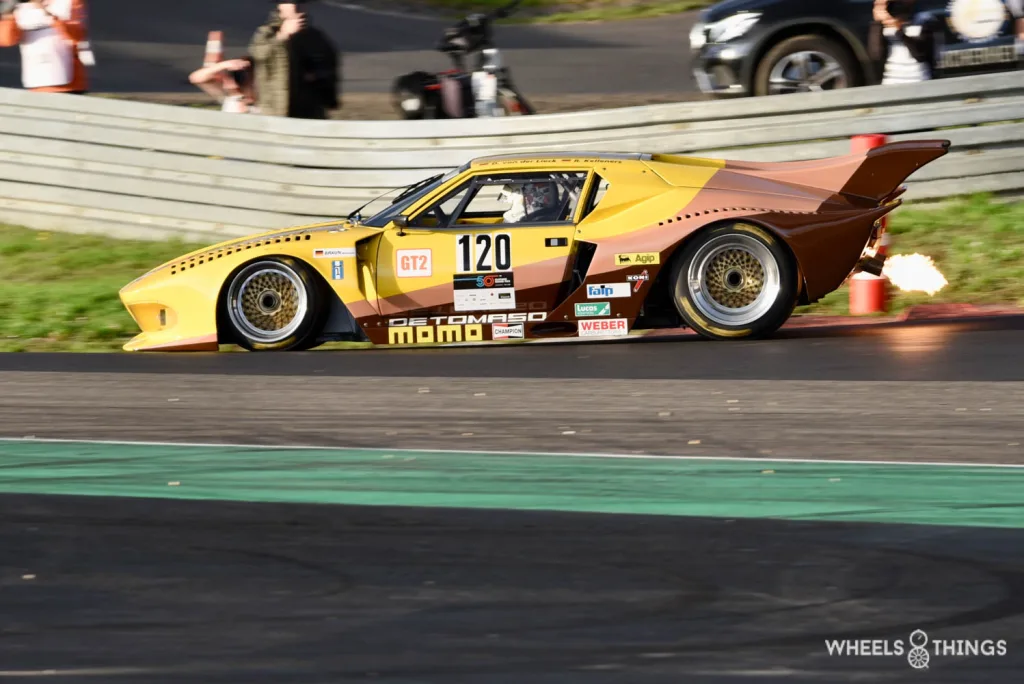
And owners of such cars were also present en masse which made for a completely sold-out starting field with cars from Porsche, BMW, Ford, Opel, Alfa Romeo and even a De Tomaso Pantera. It was the first time we saw this, surely quite impressive, Group 5 De Tomaso in action after a long time. The Italian once competed in the 1979 World Championship but was not really successful there.
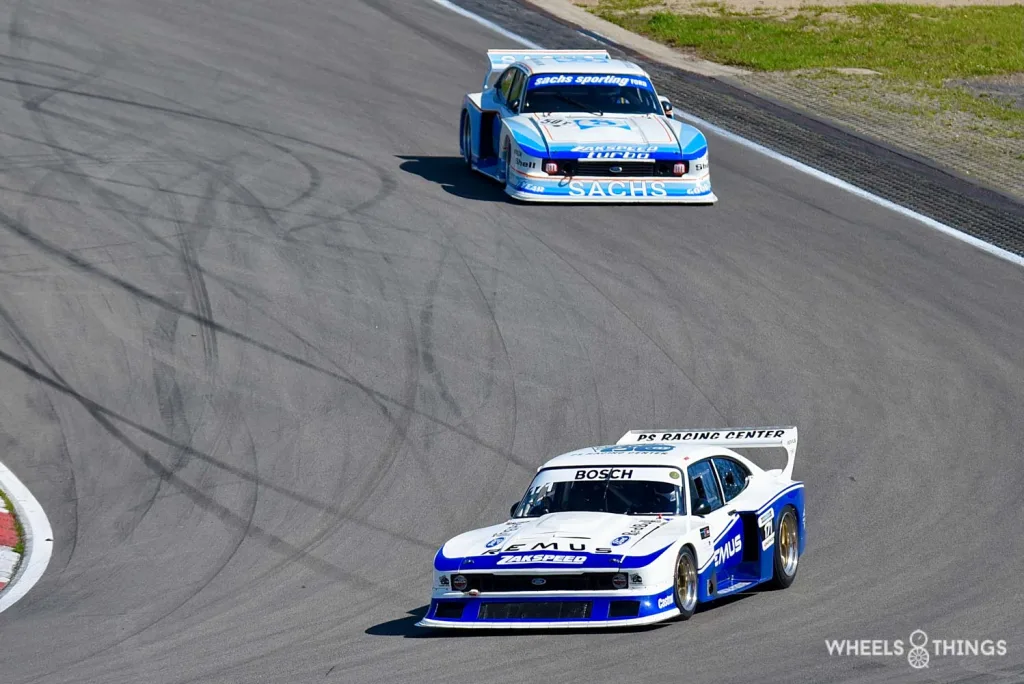
Besides this Pantera, we see three examples of the Ford Capri Zakspeed turbo on the appeal for the first time. Besides Mücke’s well-known black Wurth, there are two additional pieces in Sachs trim that were once driven by Harald Ertl. One is coming back from retirement after a long stay in a museum and the other had ended up in the hillclimb championship after its track career.
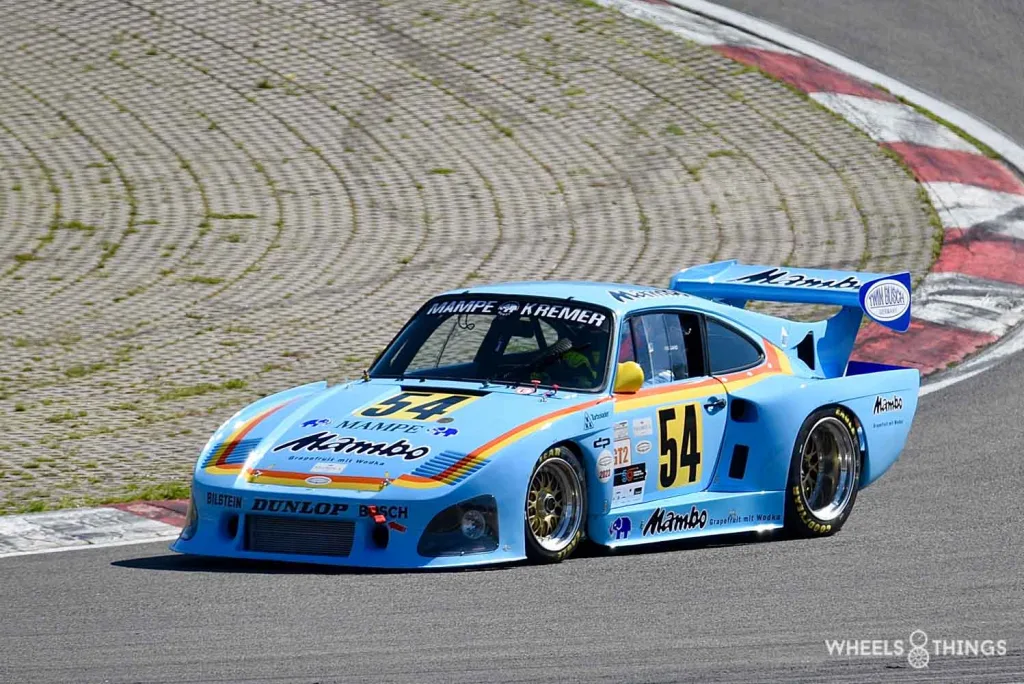
Also a newcomer is the Kremer Porsche 935 K3 in Mambo trim from the 1979 DRM. Klaus Ludwig drove this example for the two halves of the season and the K3 was unbeatable during that period.
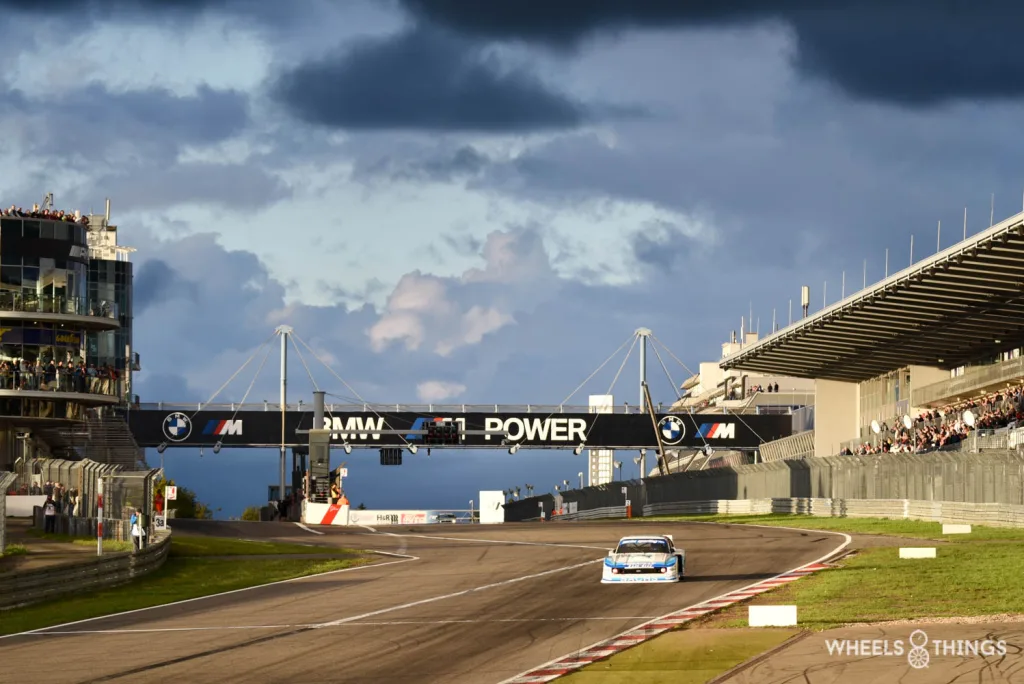
Two matches are scheduled. One on Saturday night and a second on Sunday morning. The Saturday race is one to lick thumbs and fingers off. It is fought as if it were a competition with a lot of prize money. However, this was definitely not the case.
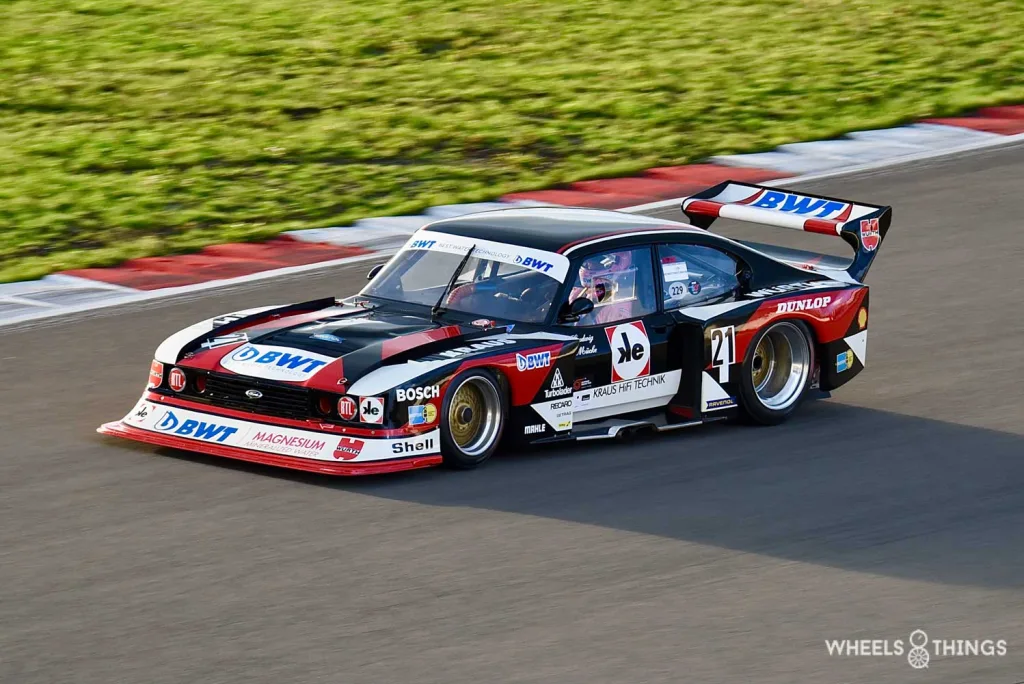
As always, Mücke’s Capri is a touch quicker than the rest. In the first laps, the Pantera and one of the Sachs copies can still follow but slowly but surely the distance widens. At the front, therefore, there is little excitement.
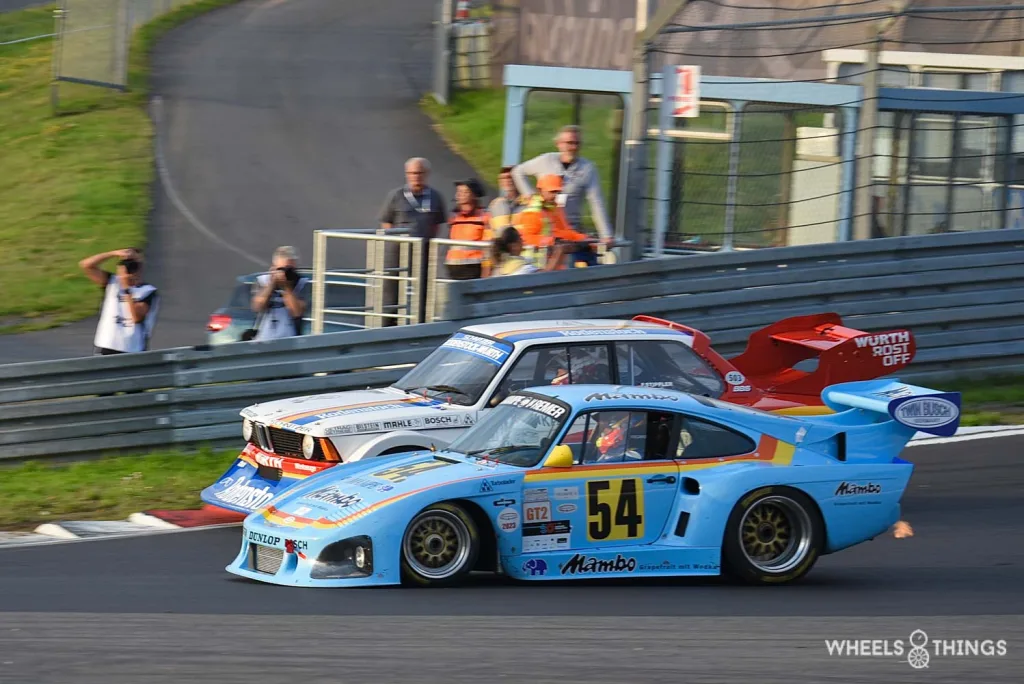
This did come from the Mampe Porsche 935 and the BMW 320i Schnitzer turbo of our compatriot Eric Qvick who teamed up with Audi factory driver Frank Stippler for the occasion. Stippler had the honour of finishing the first race. After some minor problems in qualifying, the BMW was slightly further down the grid. In no time, though, he had found the connection with the Porsche.
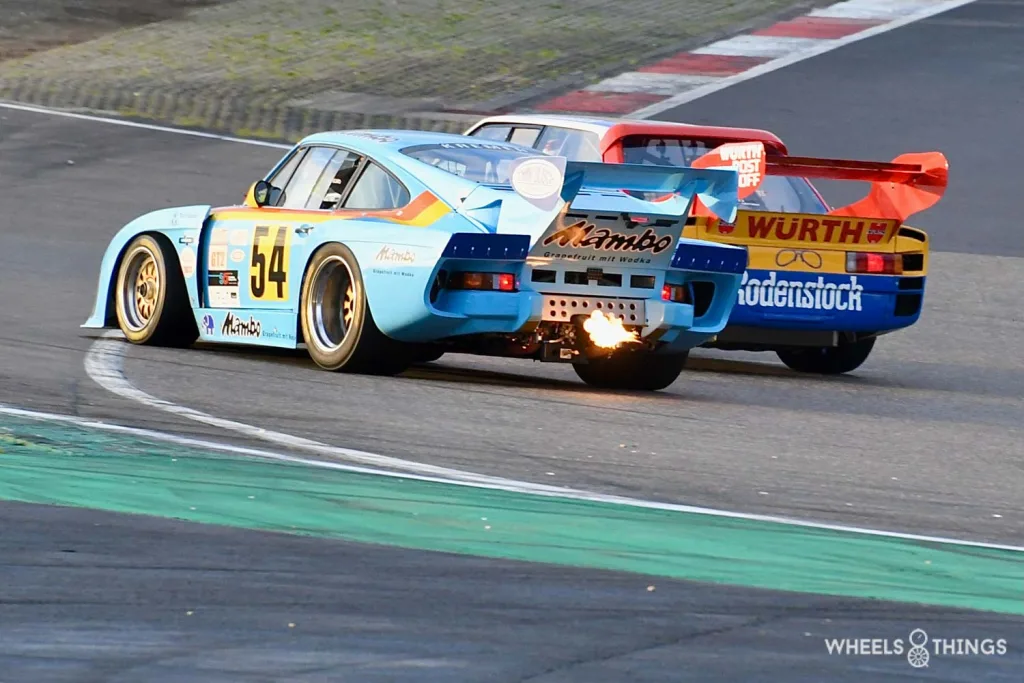
Both drivers delivered a fantastic duel in the light of a beautiful evening sun. On the straights, the Porsche was faster, but in the corners the BMW was always right next to it. With lots of fireworks (figuratively and literally) they entertained the many spectators still present in the stands.
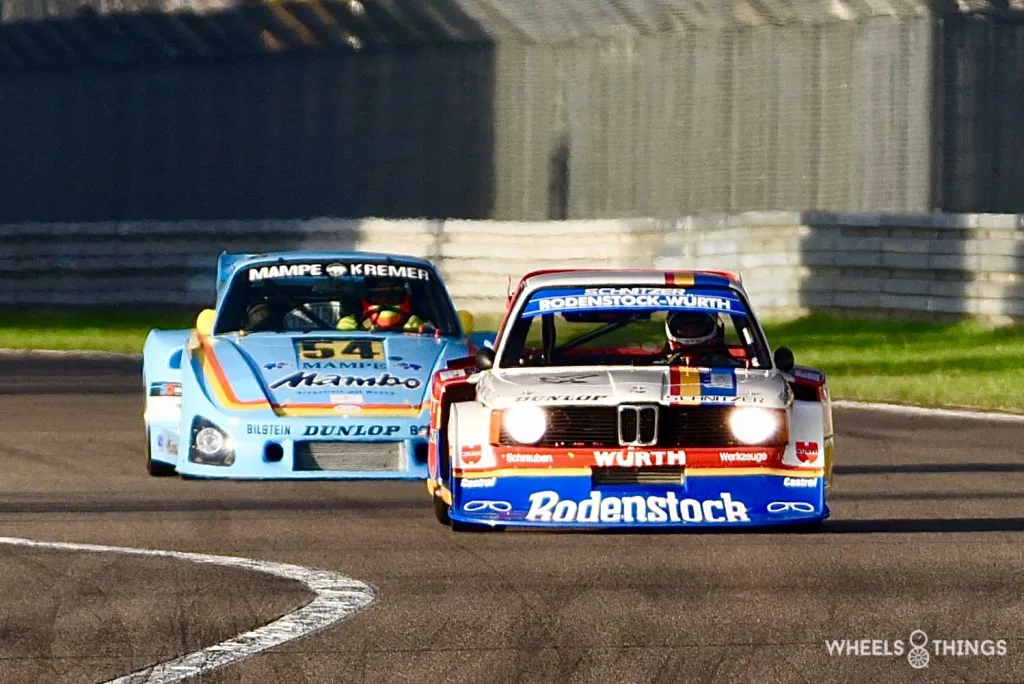
Busch’s Porsche was clearly faster but then again the pilot in the BMW was clearly better and so it went on for nine laps.
Four laps before the end of the race, with technical problems, the Porsche had to throw in the towel. The Mambo will also not appear for the second race on Sunday.
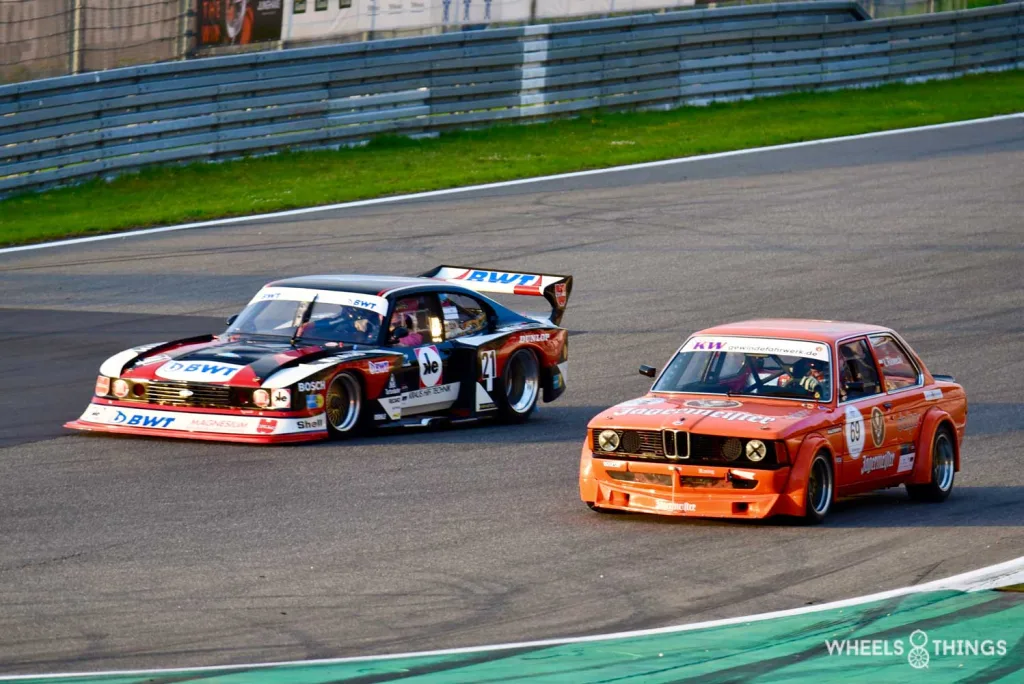
Without surprise, Mücke becomes winner and this somewhat surprisingly ahead of Kelleners’ De Tomaso Pantera. Third is the Sachs Capri of Stursberg finishing just ahead of the Qvick BMW of Stippler.
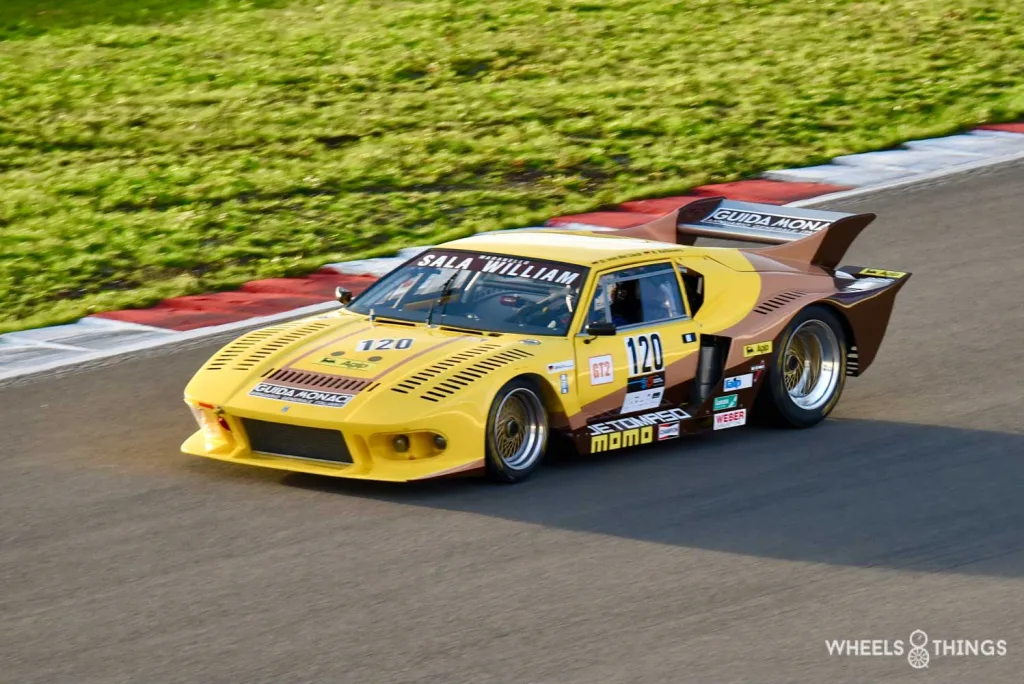
For the Sunday race, the men have to get up early. Once again, it is an exciting race. And this time it is the De Tomaso of Kelleners that can actually take the win with five seconds ahead of the Capri of Mücke. Third is the Sachs Capri of Schermsal.
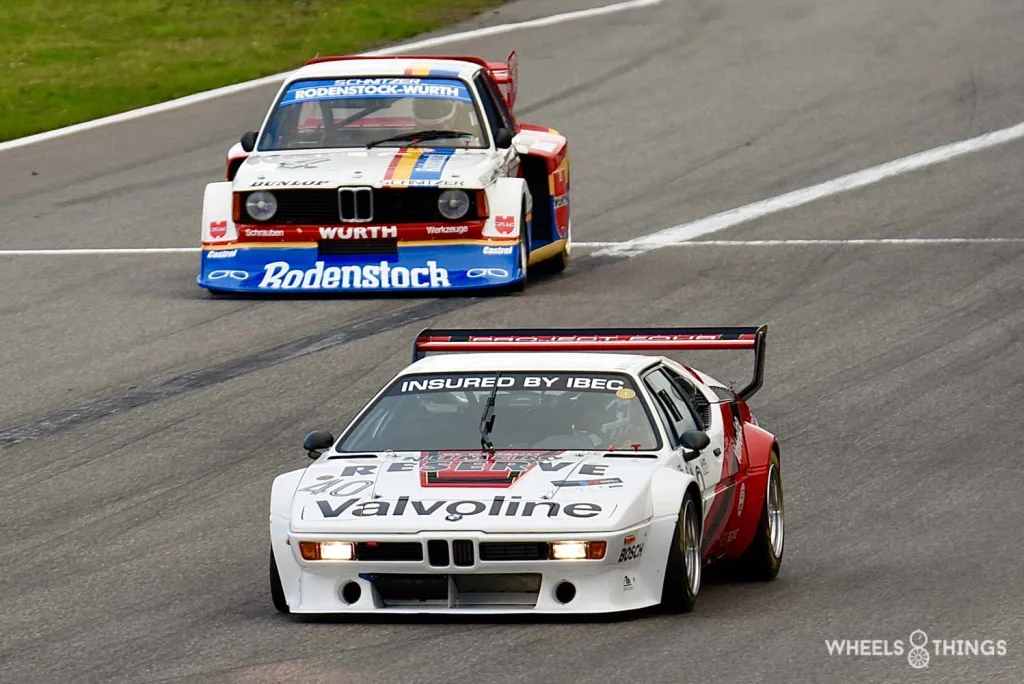
Qvick’s BMW 320i turbo finished P5 just behind Kammermann’s BMW M1. Both BMWs were battling each other for much of the race.
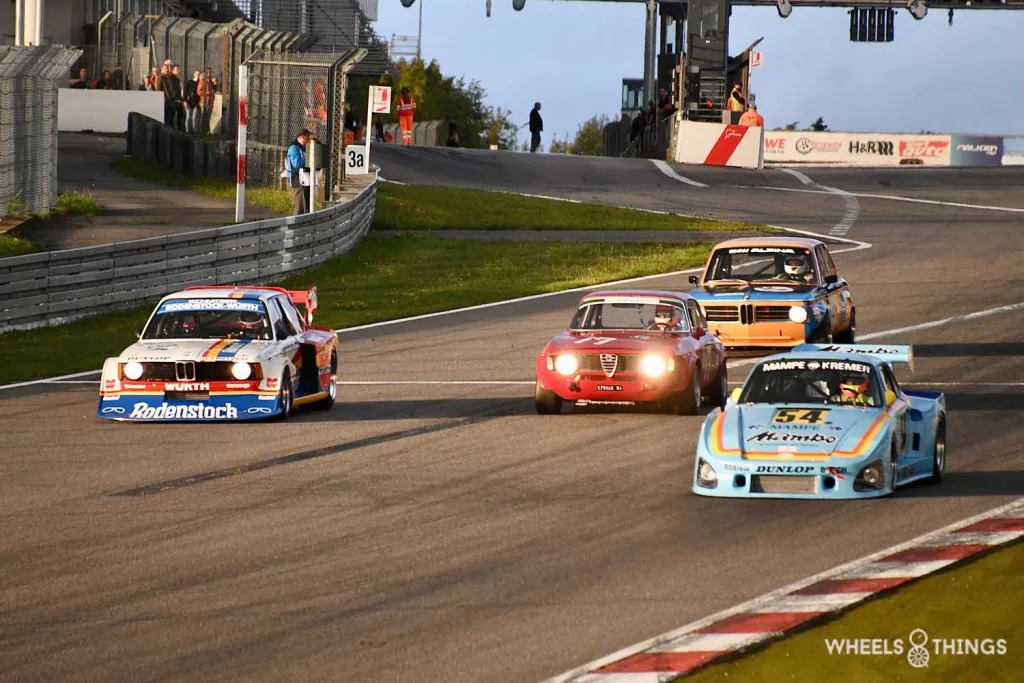
Both these DRM Revival races were without doubt the highlight of the weekend with beautiful and very diverse cars. They also provided plenty of spectacle and the spectators were very happy.
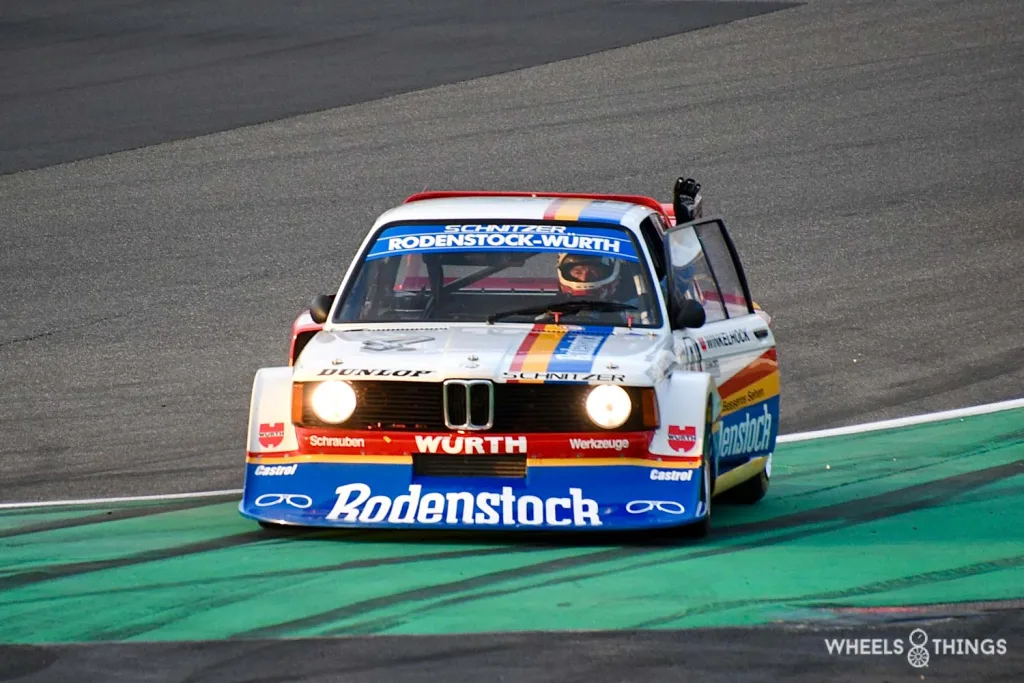
Frank Stippler even came to greet the audience present in the stands after the first game, as a thank you.
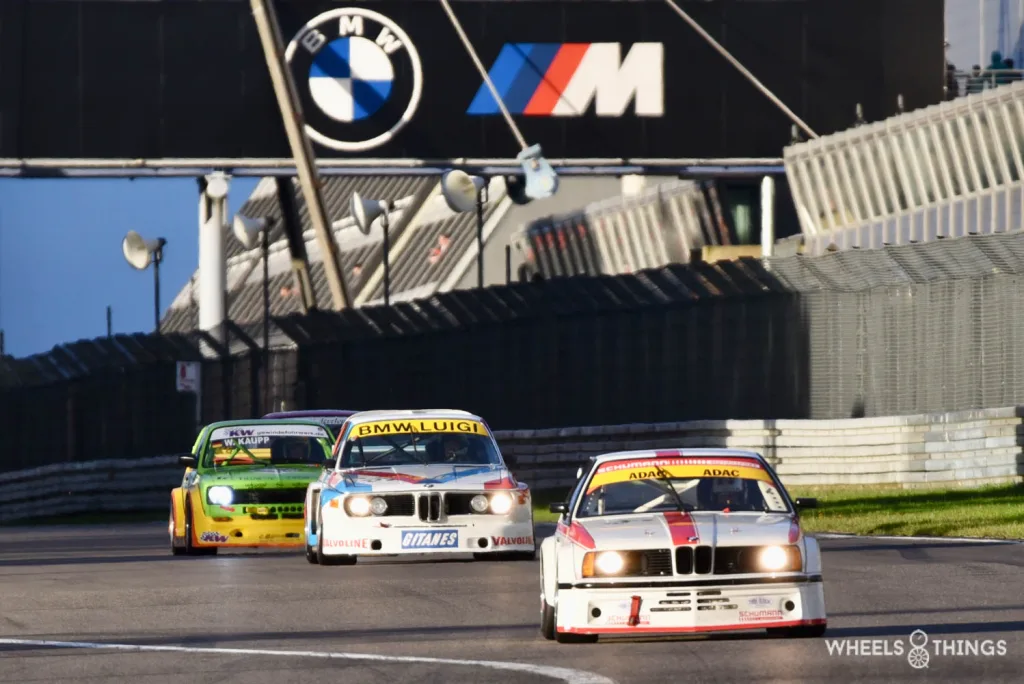
The many different cars, some of them surely unique, also provided many great moments.
JUNGHANS WATCH
Not really my speciality on our editorial staff but exceptionally we present you with a timepiece produced by sponsor Junghans on the occasion of the 50th AVD Oldtimer Grand Prix.
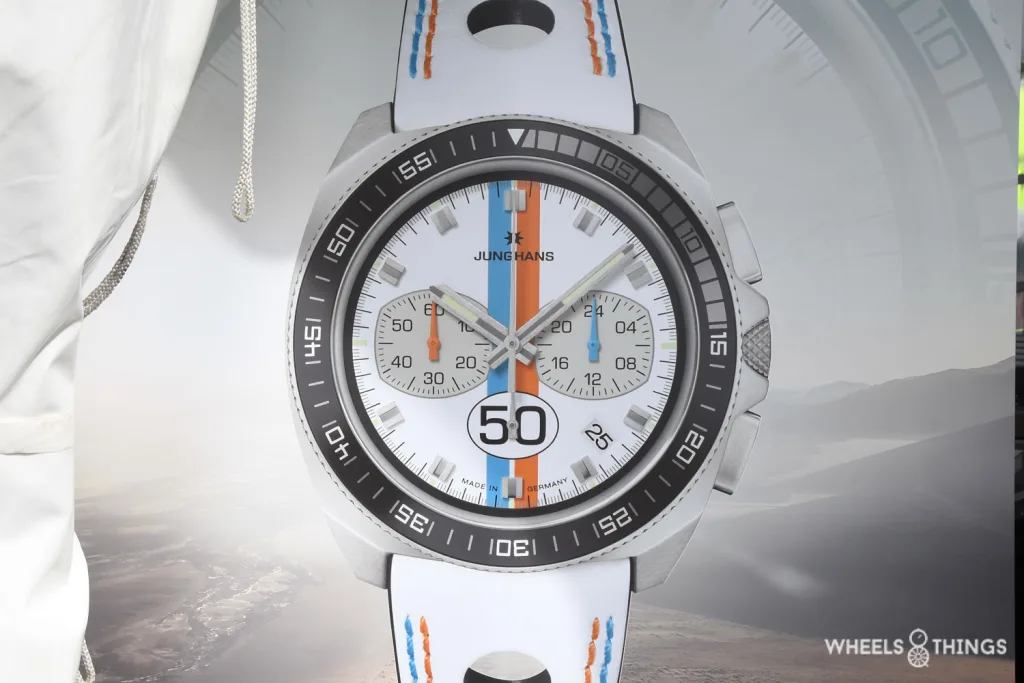
The model was released back in 1972 and for the 50th anniversary there was a new limited edition of 50 pieces. There was a choice between a white and black dial. The timepieces were sold on site at the Junghans stand. By Friday afternoon, they had all found new owners.
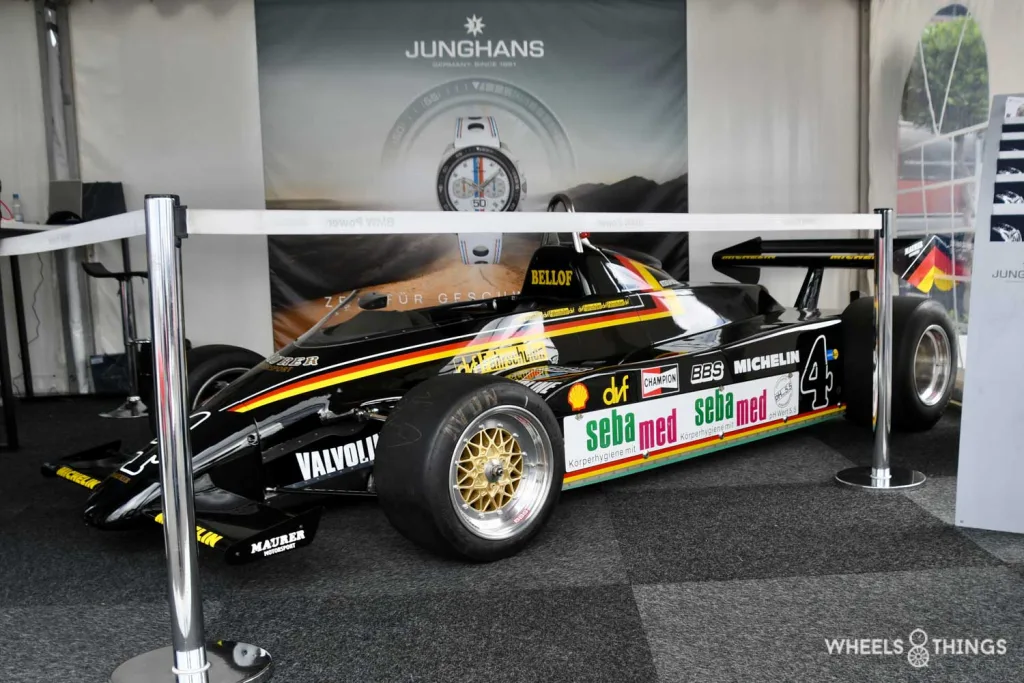
Also on the Junghans stand was a Maurer BMW Formula 2 from the Stein collection with which once upon a time, the far too young German super talent, Stefan Bellof earned his ticket to Formula 1.
FORMULE 2
A series that came in as a replacement for Formula 1 was supposed to be one of the meeting’s eye-catchers. But that was not really the case with only eight starters. This Formula 2 was the step-up class to Formula 1 in the 70s and 80s.
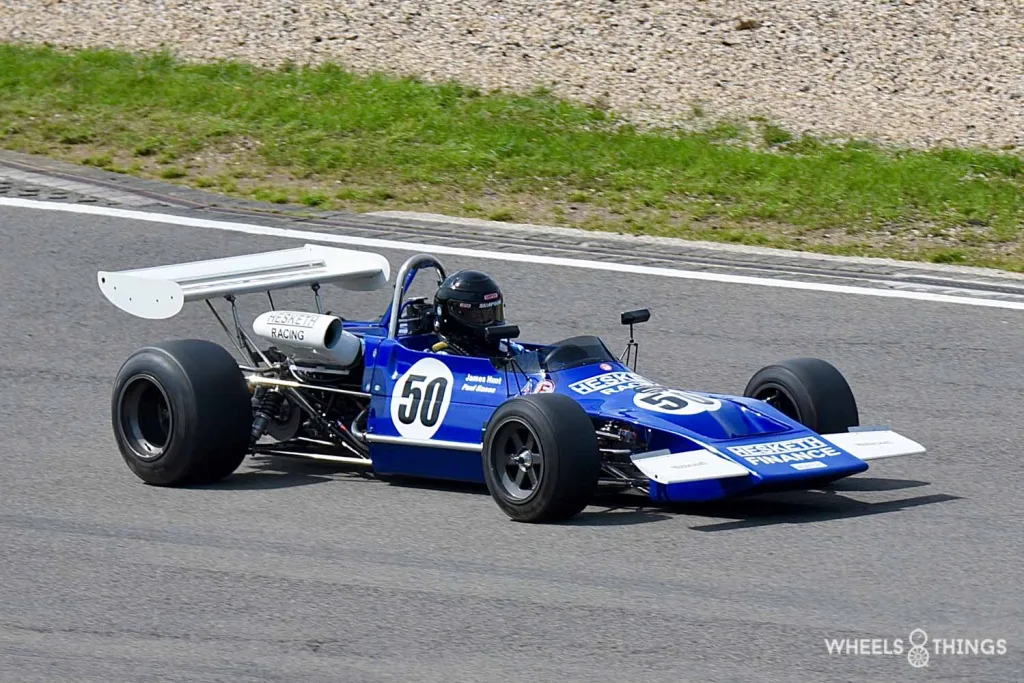
Among the few participants, we did find a 1971 ex Hesketh March 712 that James Hunt once drove. We recently introduced the book on the history of Hesketh. You can find all the info about this Porter Press edition here.
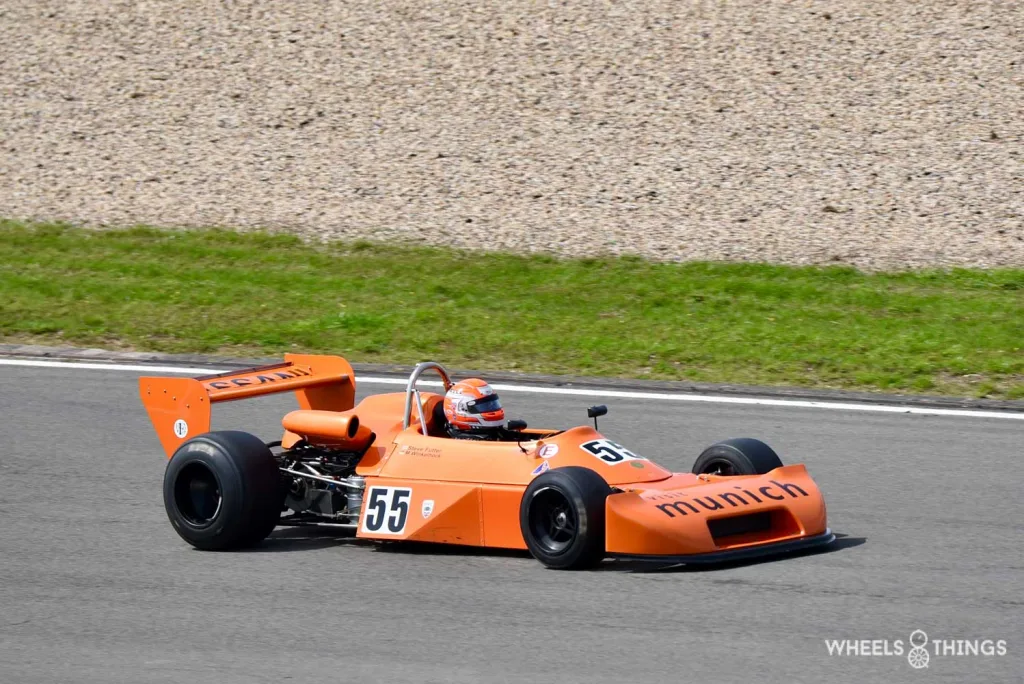
There was also a Ralt RT1 BMW belonging to the lamented Manfred Winkelhock. Unfortunately, this Ralt collided with the crash barriers on Sunday with quite a bit of damage.
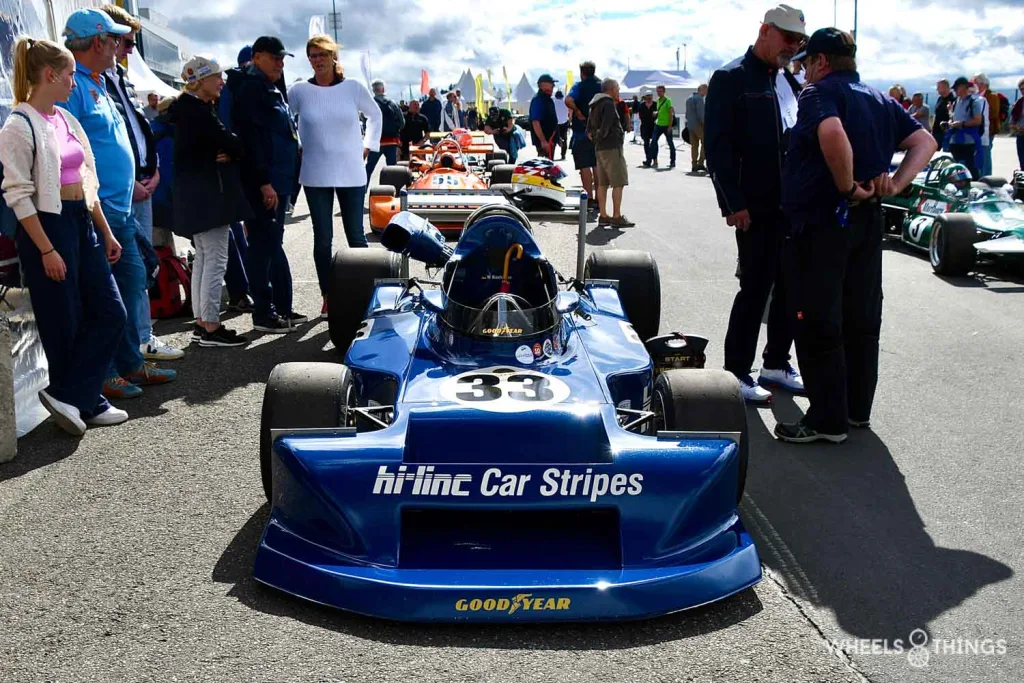
Nevertheless, the battle for first place is still exciting. Kaufmann wins at the wheel of his March 782 by 0.844 ahead of a 772 March copy of Watts.
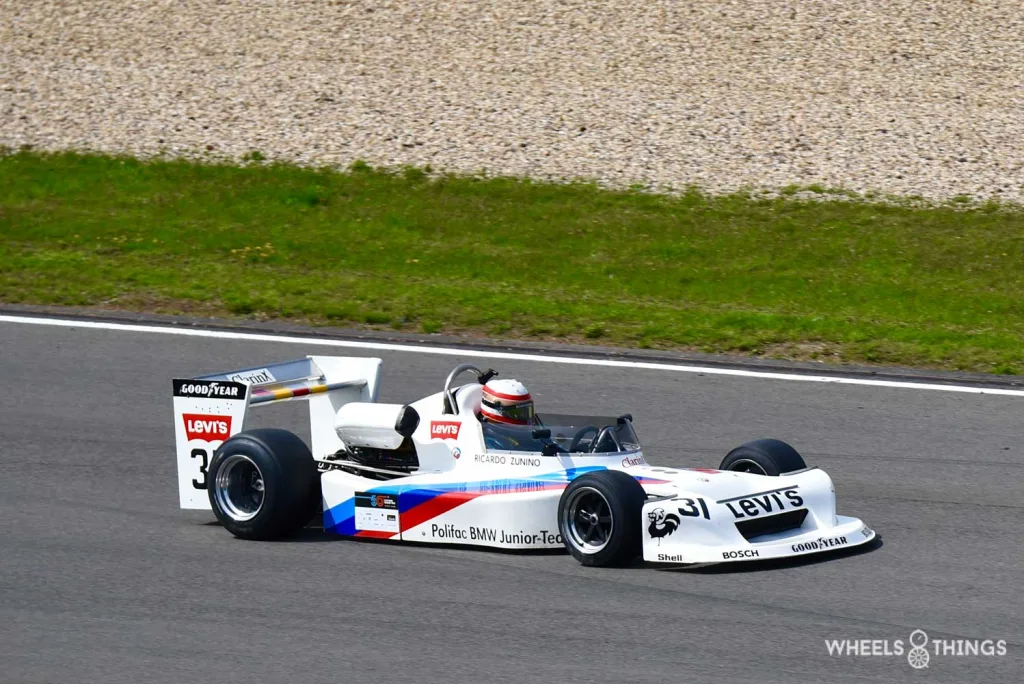
Our compatriot Marc Devis, with his March 782 BMW Junior Team, was third at 11 seconds.
FORMULA 1 AND FORMULA 2 DEMO
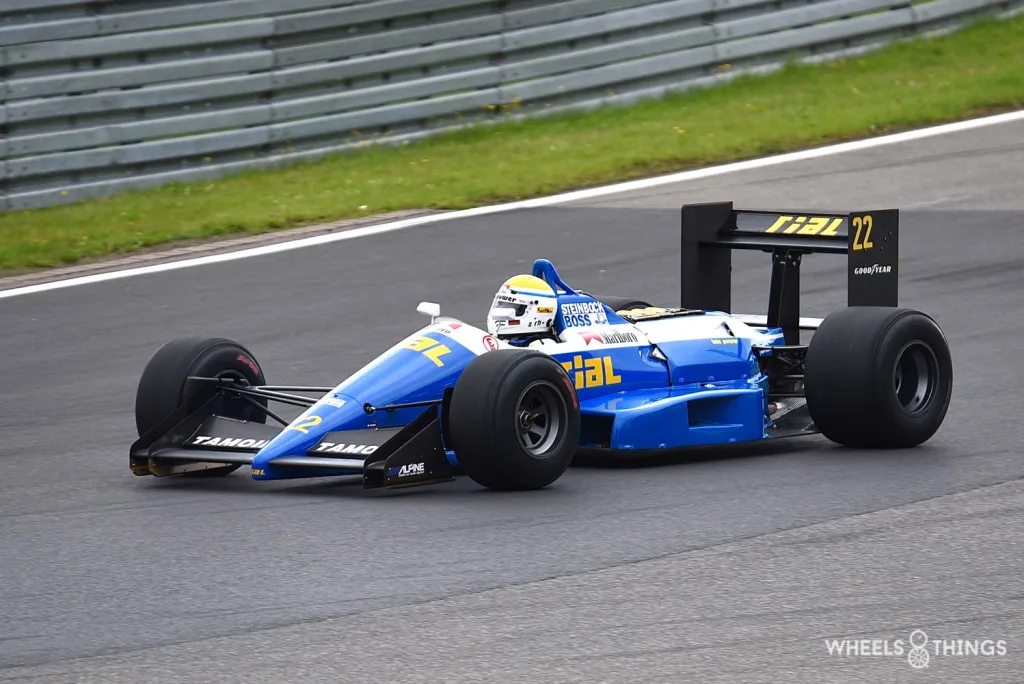
This demo was supposed to be the alternative to the absence of the Formula 1 cars. But this setup did not really succeed. There was only one F1 car with a rather unknown Rial from Gunther Schmid’s German team.
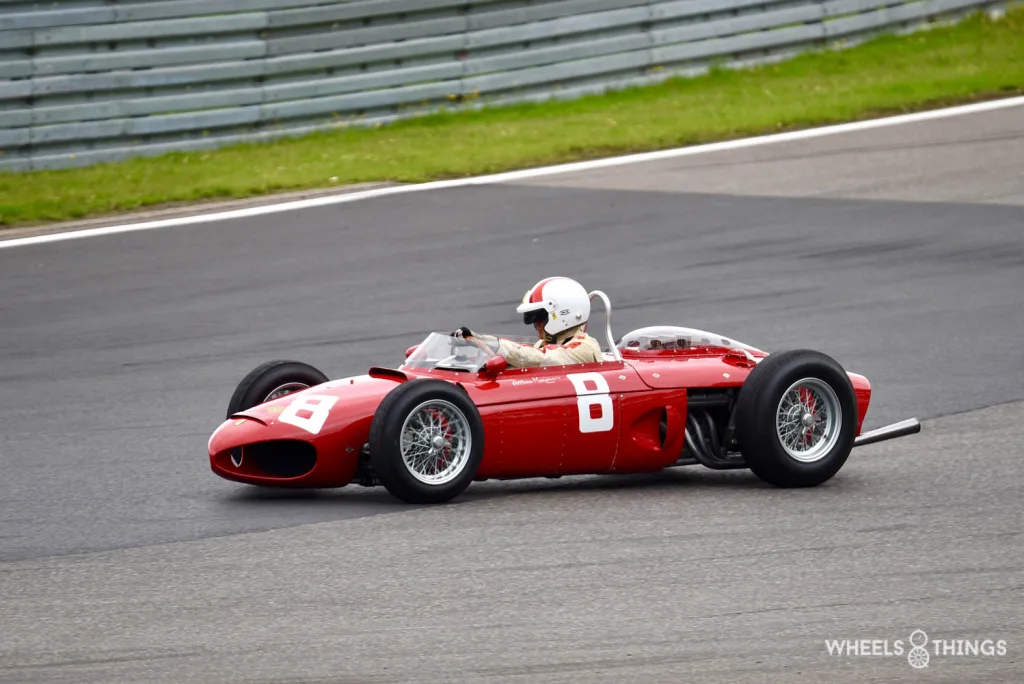
There was a Ferrari “Sharknose” replica but you find those everywhere these days and another Maurer BMW Formula 2. This demo was not really a worthy replacement for the absence of the Formula 1 Masters series. Surely they will have to come up with something better next year.
FORMULE 3
This was also a new series and the entry list was still fortunately a bit larger than for the Formula 2 colleagues but there was still room for an extra number of small protos, such as a Tiga or Swift, with an identical motorisation.
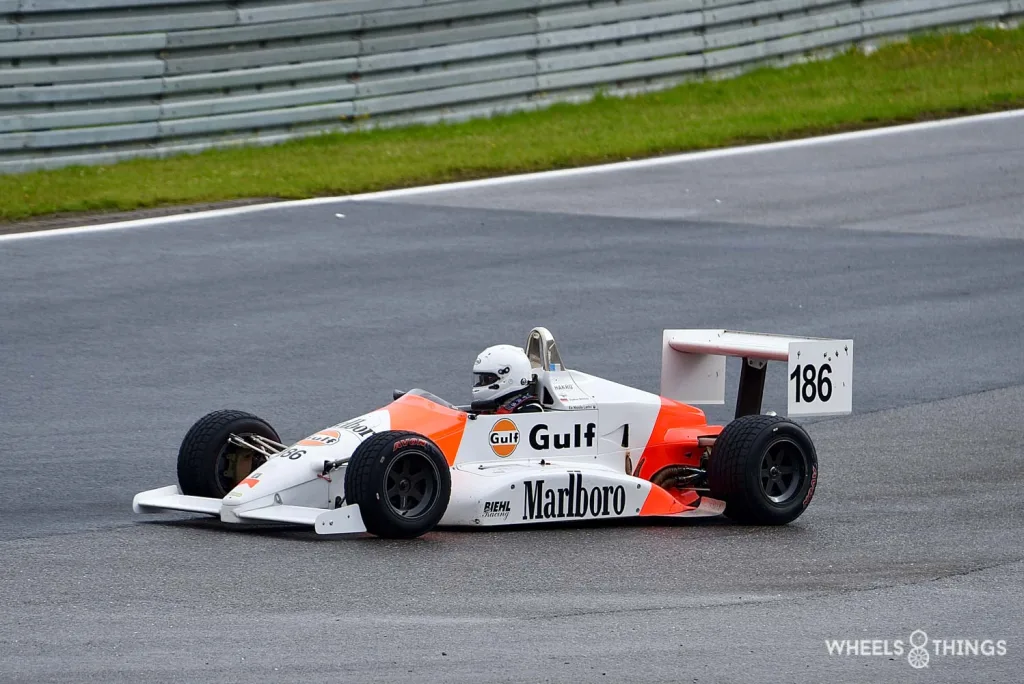
Surely the difference between the oldest competitor, a 1971 Lotus or a 1990 Dallara is impressive. On the programme are two 20-minute races.
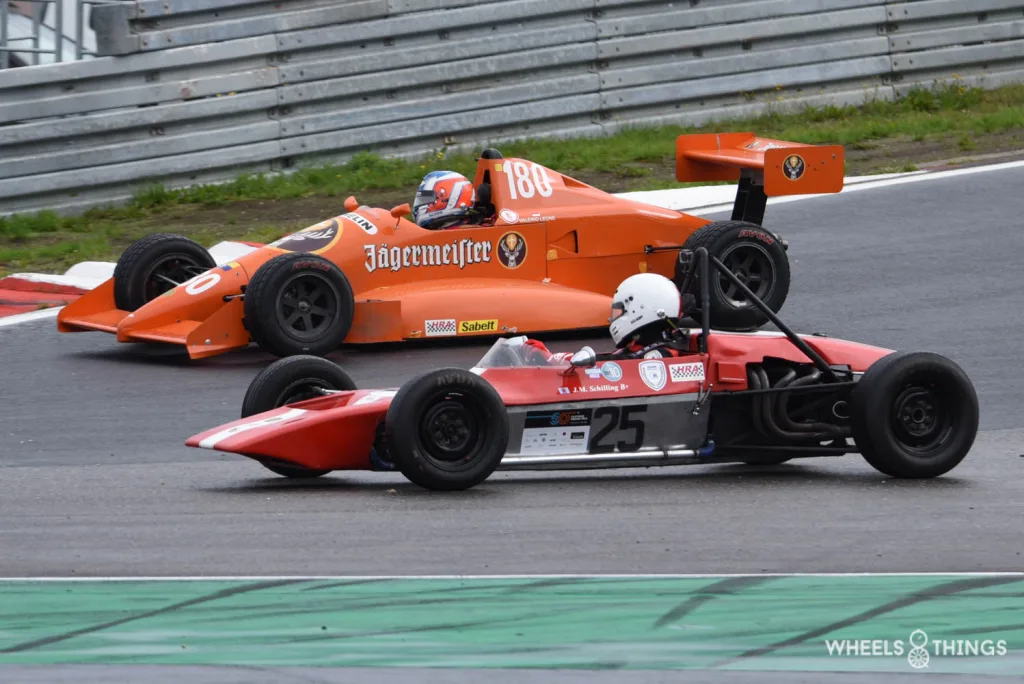
In the first heat, the win was for Alexander Weiss ( Reyard 873 Alfa ) ahead of Valerio Leone ( Dallara F 390 Alfa ) and Stephan Lechine ( Reynard F 389 VW ). Very exciting was the second race in which Weiss again took the win. He reached the finish flag ahead of Alberto Scilla’s Dallara Alfa by 0.753 sec. Volker Böhm took third place with the same car.
HISTORIC GRAND PRIX CARS
This pre-Formula 1 series has both older competitors where the engine is at the front like e.g. a Maserati 250F and cars that have the engine at the back like the Coopers, BRMs or Lotuses.
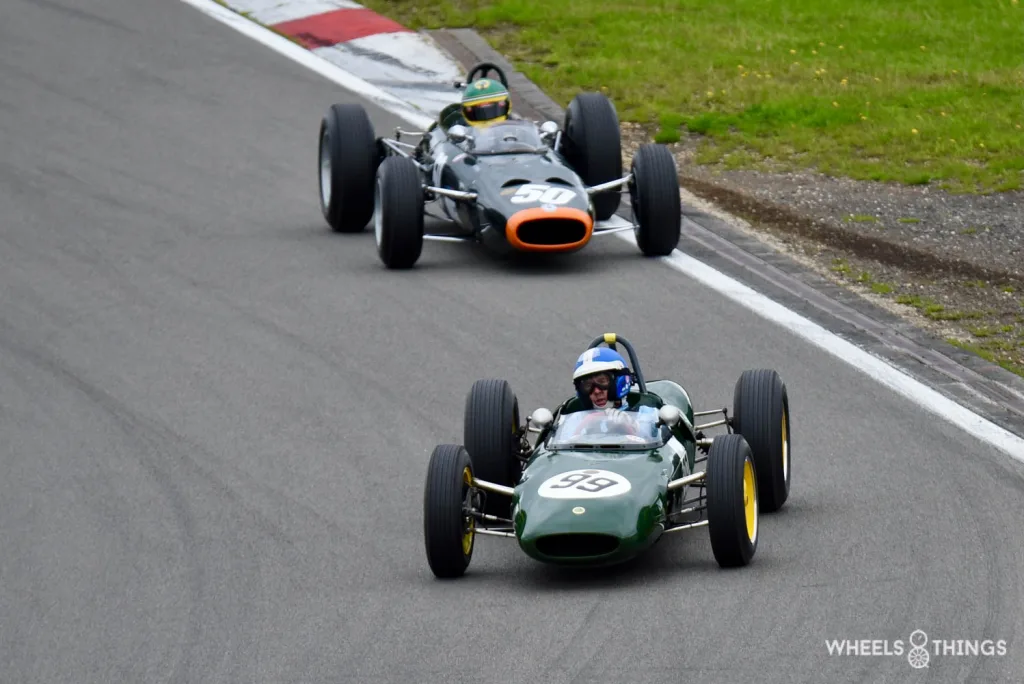
The organisers had decided this time to let these two categories each ride a separate race on Saturday. On Sunday, they were then allowed to ride together again.
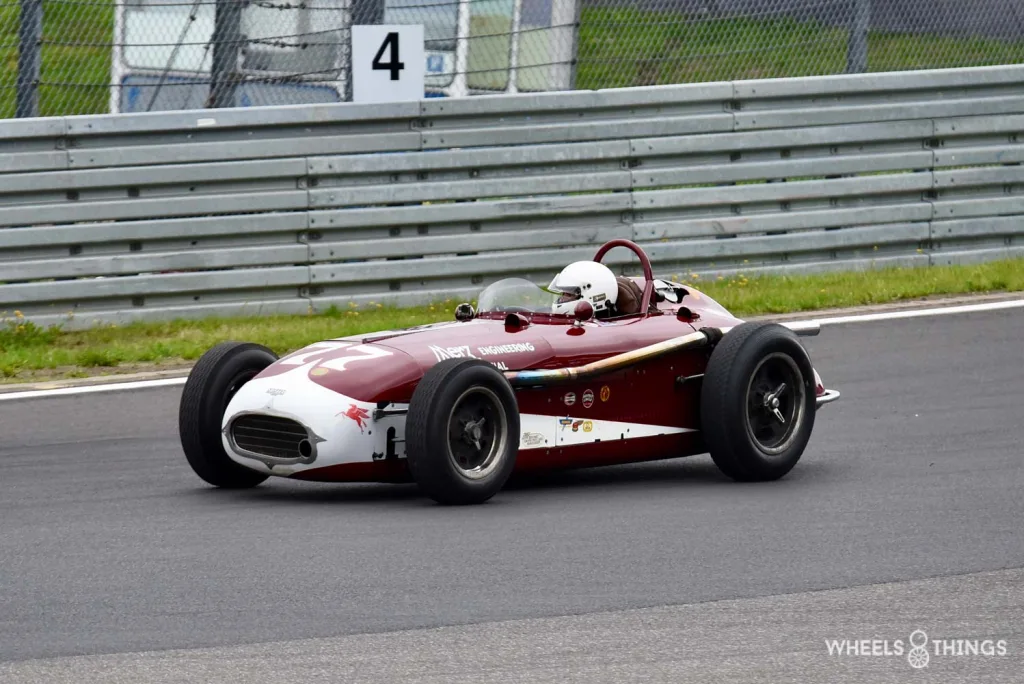
Mark Shaw’s American Scarab Offenhauser is faster than the two Maserati 250Fs of John Spiers and Josef Otto in the older models on Saturday. This is actually not a bad idea to split these series. That way, these cars that are normally usually at the back of the pack will come out positively for once.
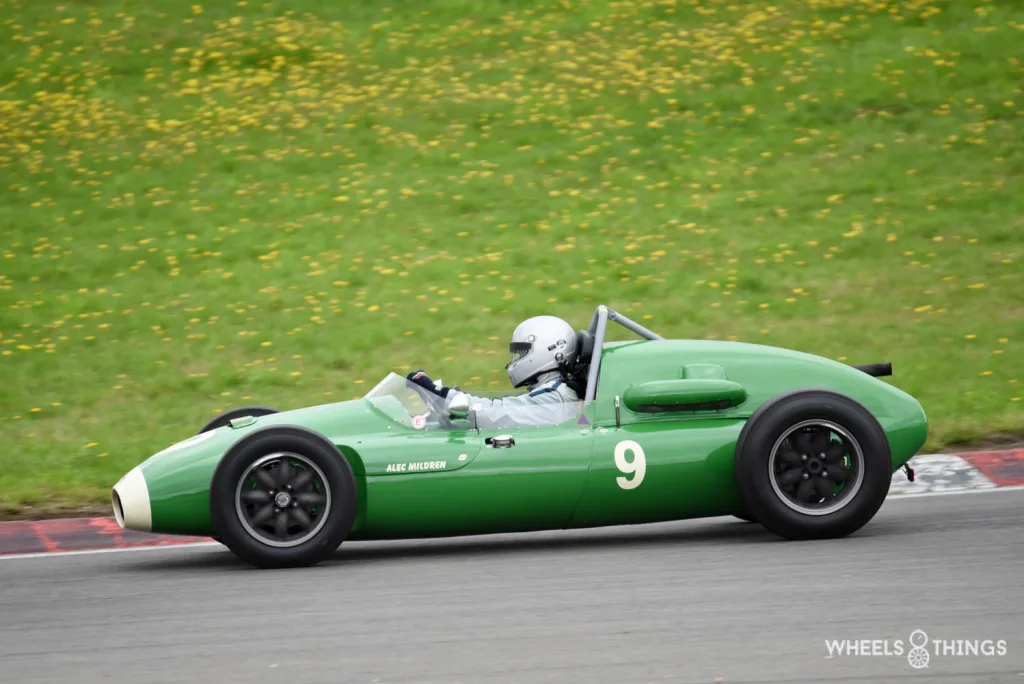
And Mark is on form as he actually wins the race for cars with the engine at the back as well. He does have to fight a bit more for it with his Lotus 21 and crosses the finishing line side and side next to Will Nuthal’s Cooper T53. Philipp Buhofer’s BRM P 261 finishes just behind both ruffians.
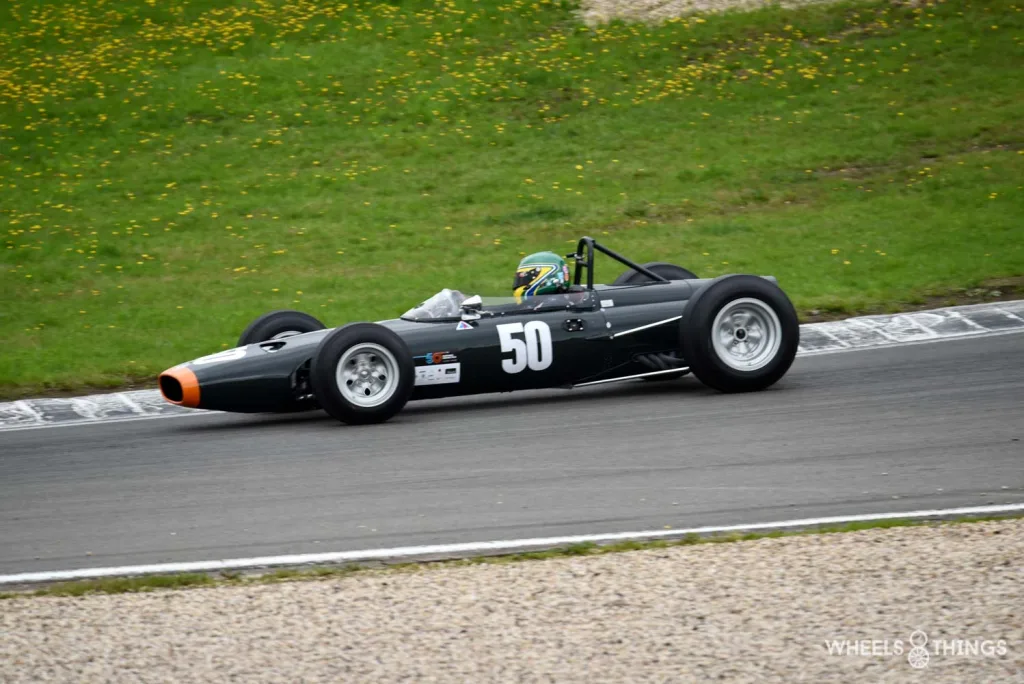
In the race on Sunday, Mark obviously has to choose between one of his two cars. He opts for the faster Lotus 21. Once again he is in contention for victory but this time he has to leave the win to Will Nuthall’s Cooper.
LURIANI TROPHY
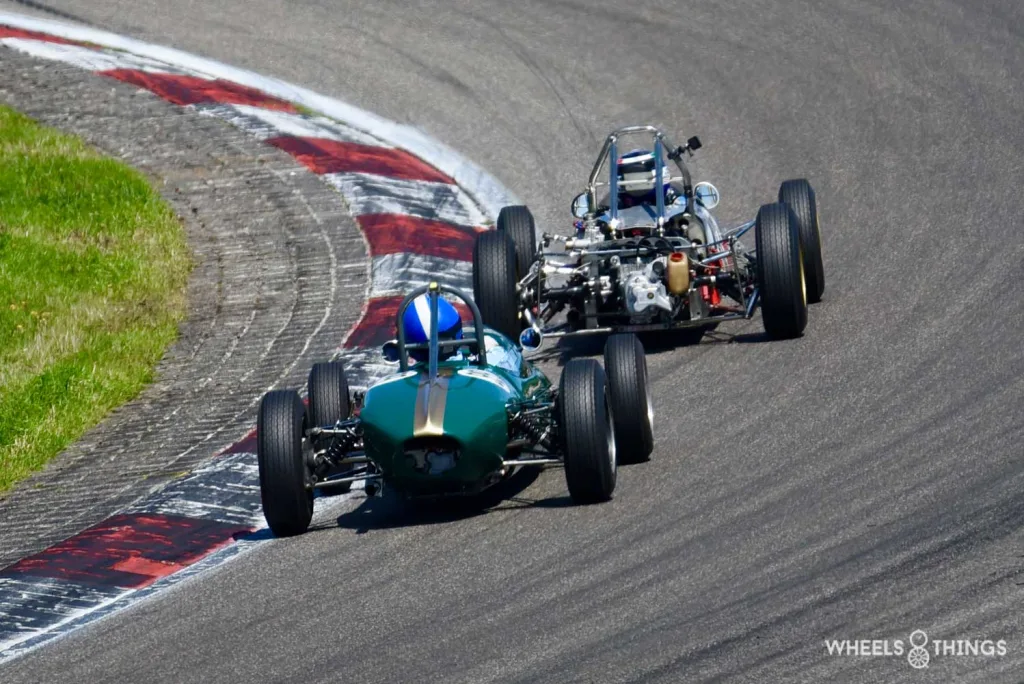
And Mark also has the Lurani Trophy on his programme. In this he takes part with a Brabham BT 26 but more than fifth place in the first race is not in the cards.
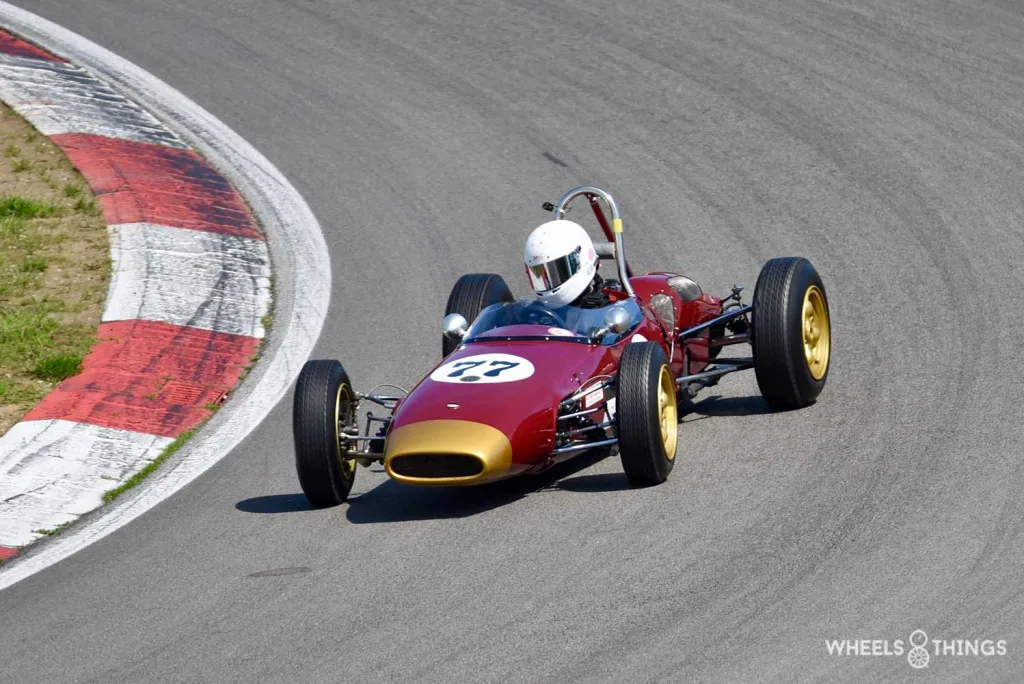
Both races are a Lotus affair with a full podium of cars from Hethel each time. Victory in both races goes to Horatio Fitz-Simon with his Model 22.
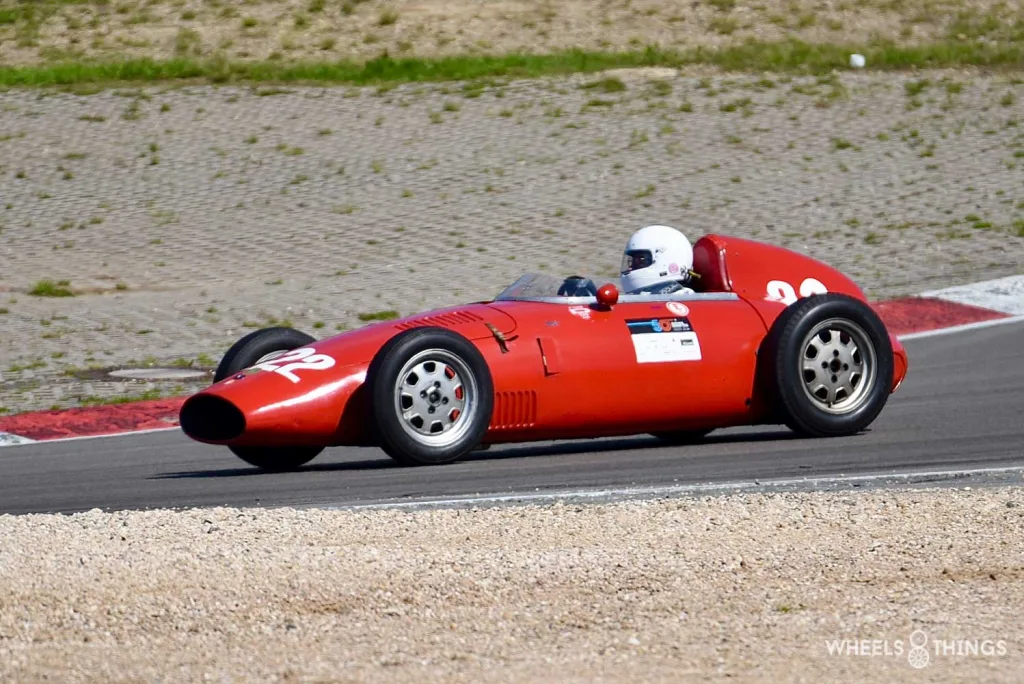
Among the participants we saw this Osca FJ, pretty much a “mini” Maserati 250F that only competed in the first race. A nice appearance though and the Osca/Maserati link is obviously very clear.
CANAM & SPORTSCARS
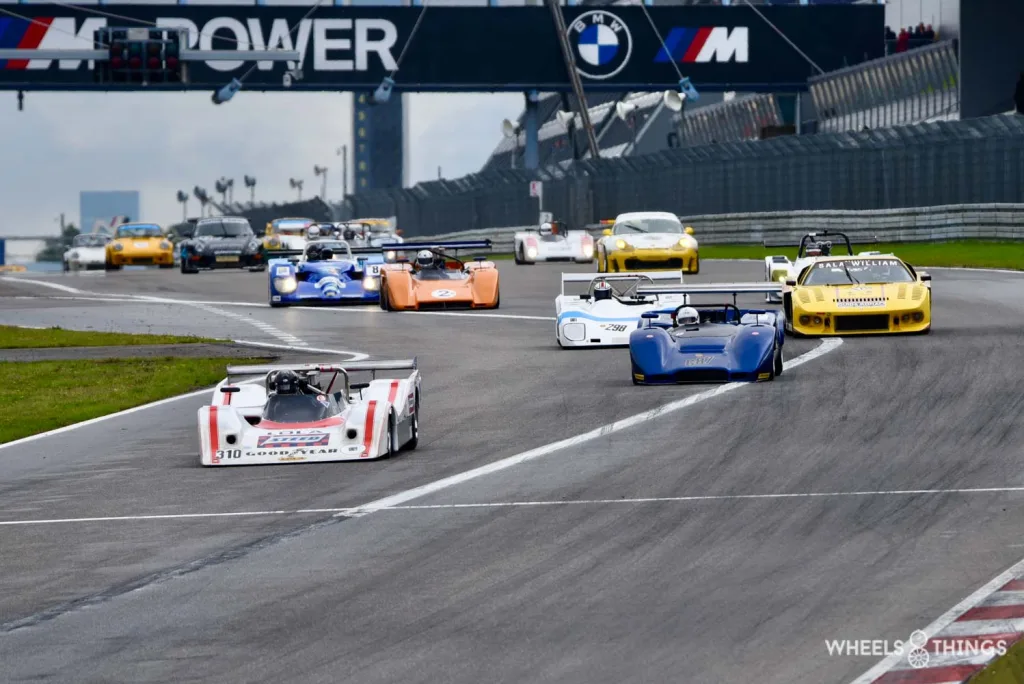
Last year, this was a top race of the programme with even the participation of a CanAm Porsche 917/10 turbo. You can watch this unique car again via this link This time, the starting field was a lot smaller with only 20 starters.
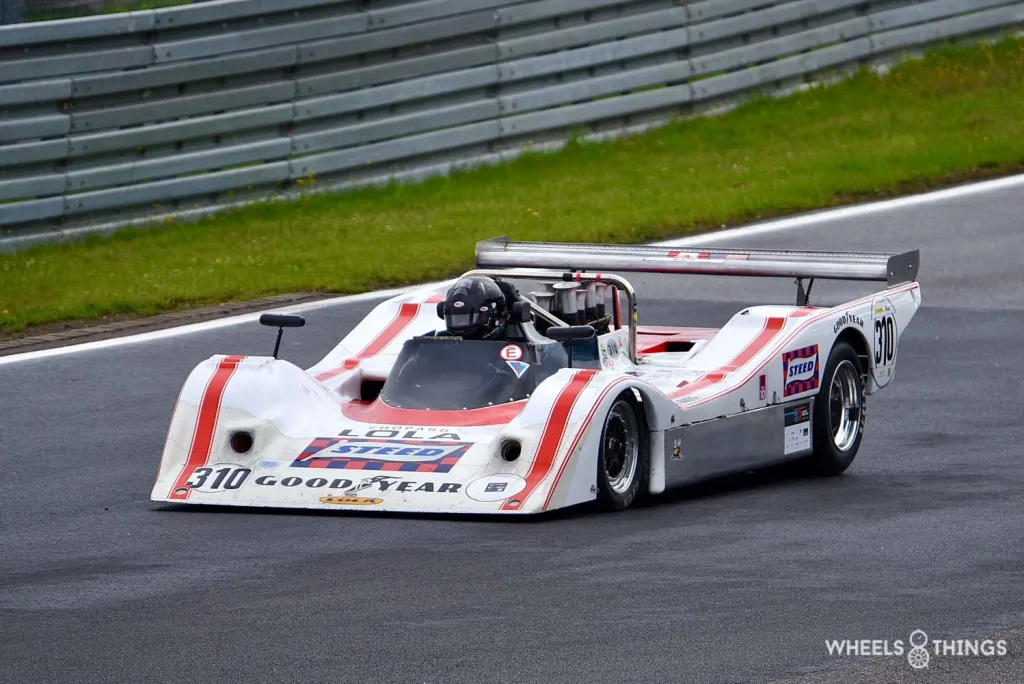
Still, these are two exciting races with the differences for the podium being very minimal. Georg Hallu did win them both in his Lola by less than a second ahead of Silvio Kalb and Gianluigi Candiani. Unlucky was Olaf Manthey who put his very first ever Manthey Porsche 997 into the wall of the pitlane after an evasive manoeuvre. Fortunately with no consequences for the pilot but his Porsche was badly damaged.
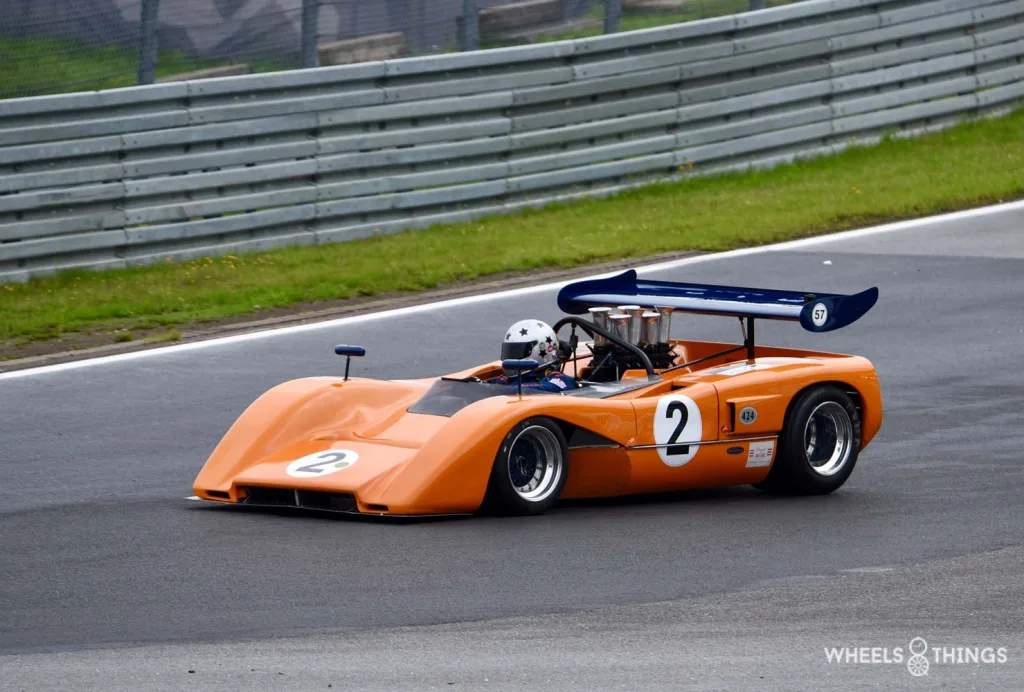
MOTOR KLASSIK READERS PARADE
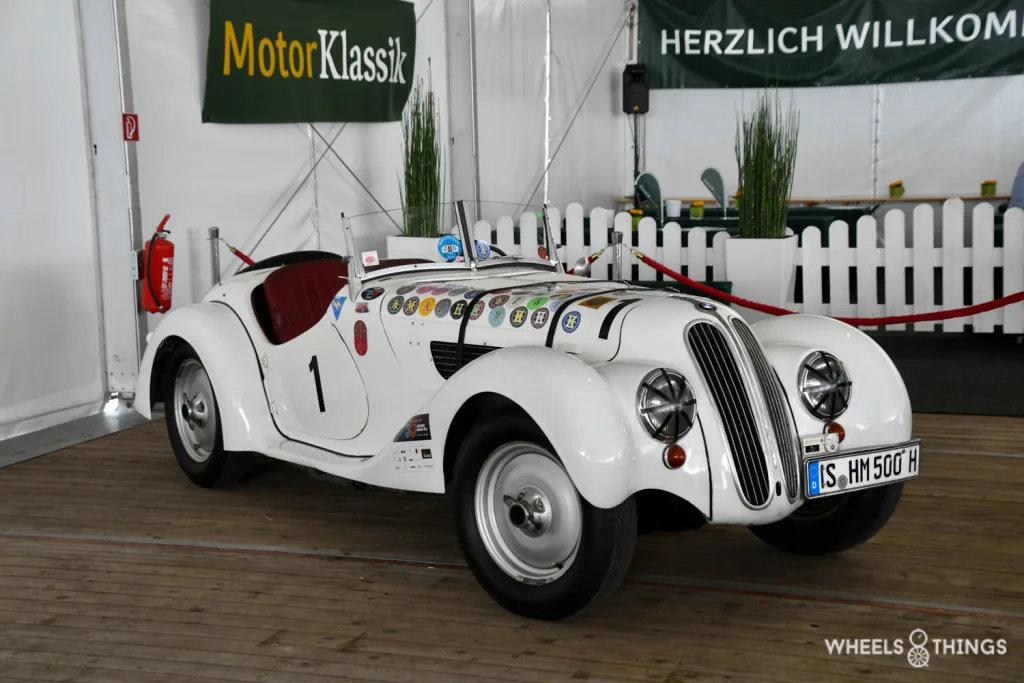
Main sponsor Motor Klassik is traditionally faithful on post with their big tent in which an expo normally takes place every year. This time there was no expo and only Uli Sauer’s BMW 328 was on display.
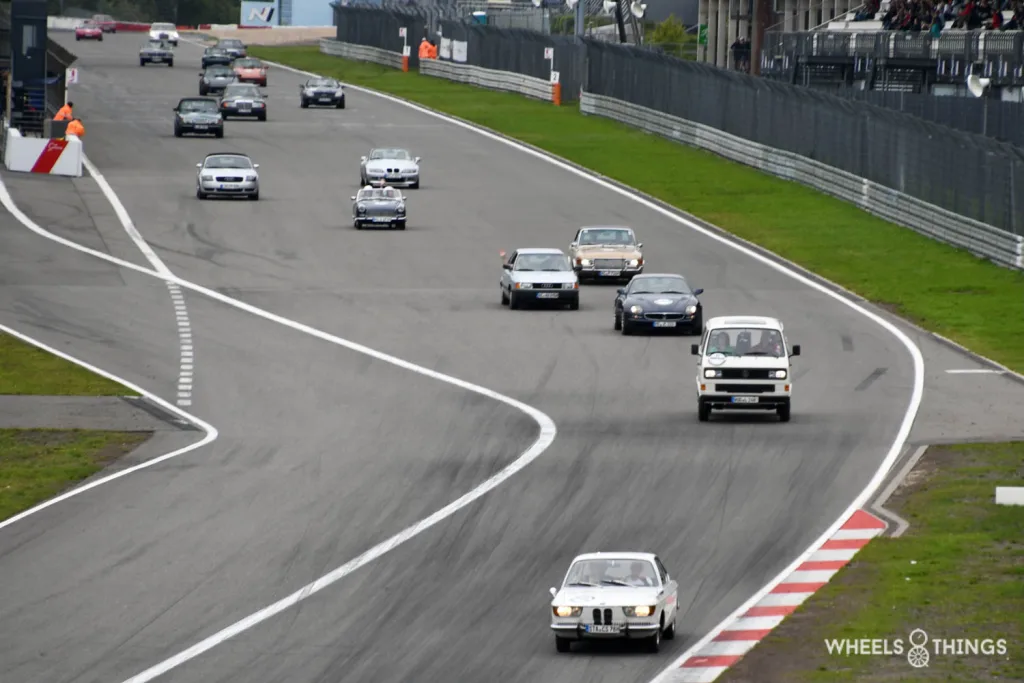
And as an established tradition, there was also their coffee with the edition 23 coffee bag. And also their many readers who had registered for the parade in which they could participate with their own old- or youngtimer.
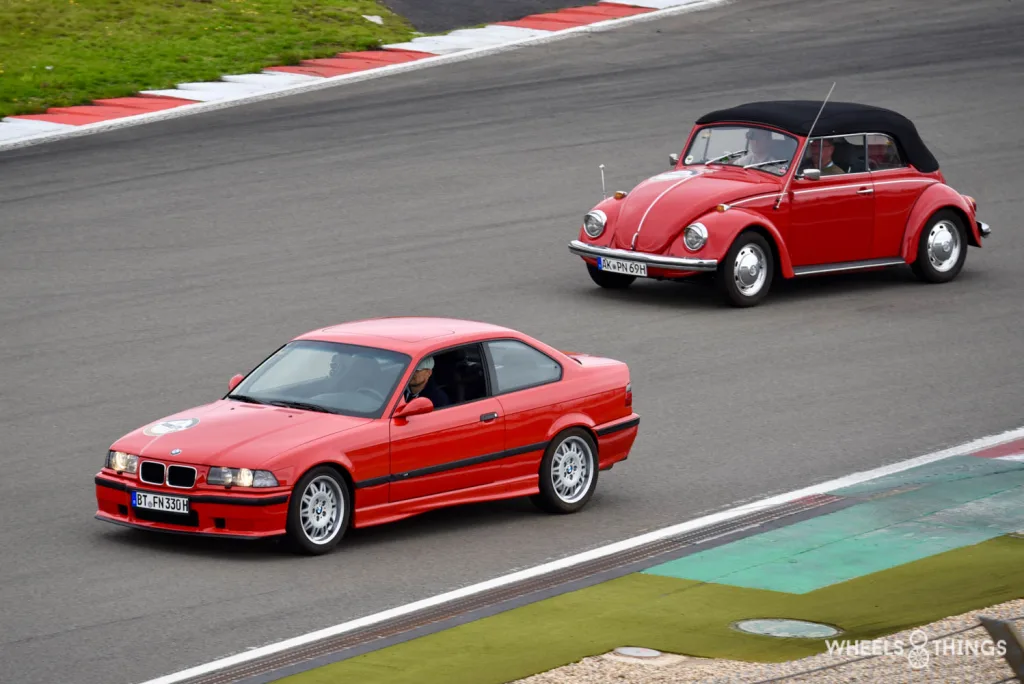
As every year, a very diverse and huge field of participants with great differences between the cars.
FERRARI CLUB GERMANY
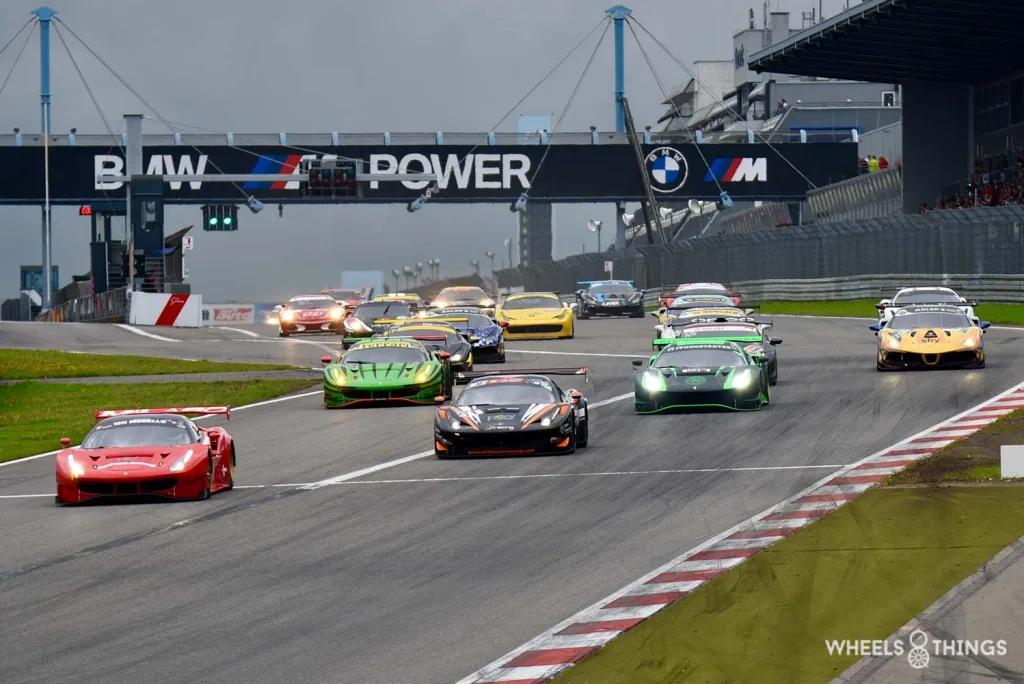
The German Ferrari club is still one of the regular participants in the OGP. Their competitions are reserved for Ferrari and Maserati products.
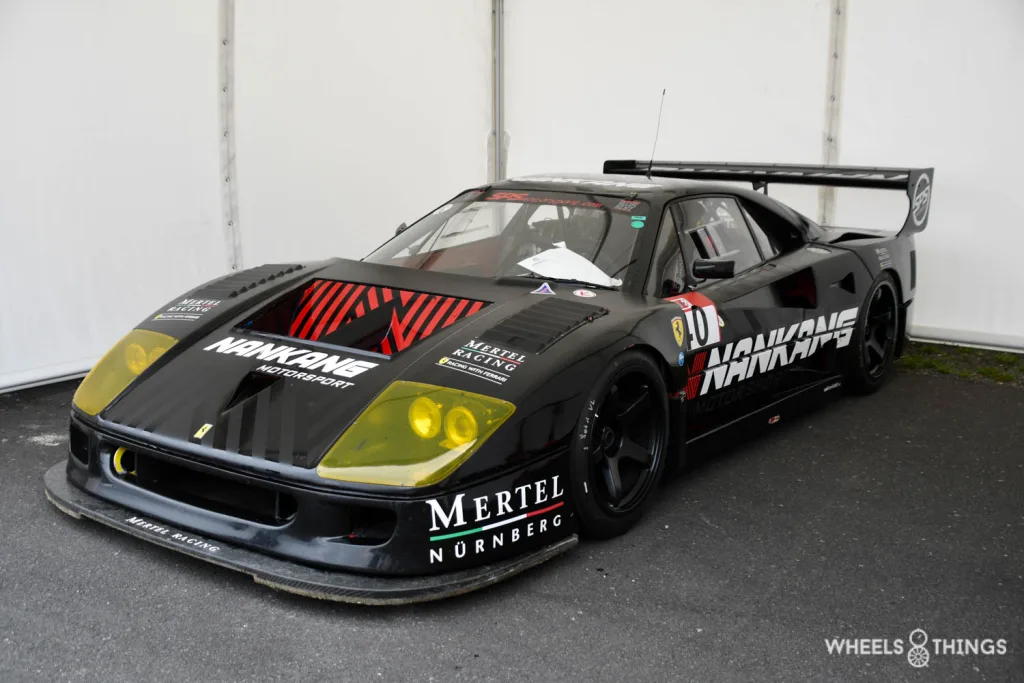
However, there were fewer participants than in previous editions. Among these, though, was one of the 19 F40 LM cars ever built by Michelotto. Definitely a unique piece but unfortunately it did not show up in action.
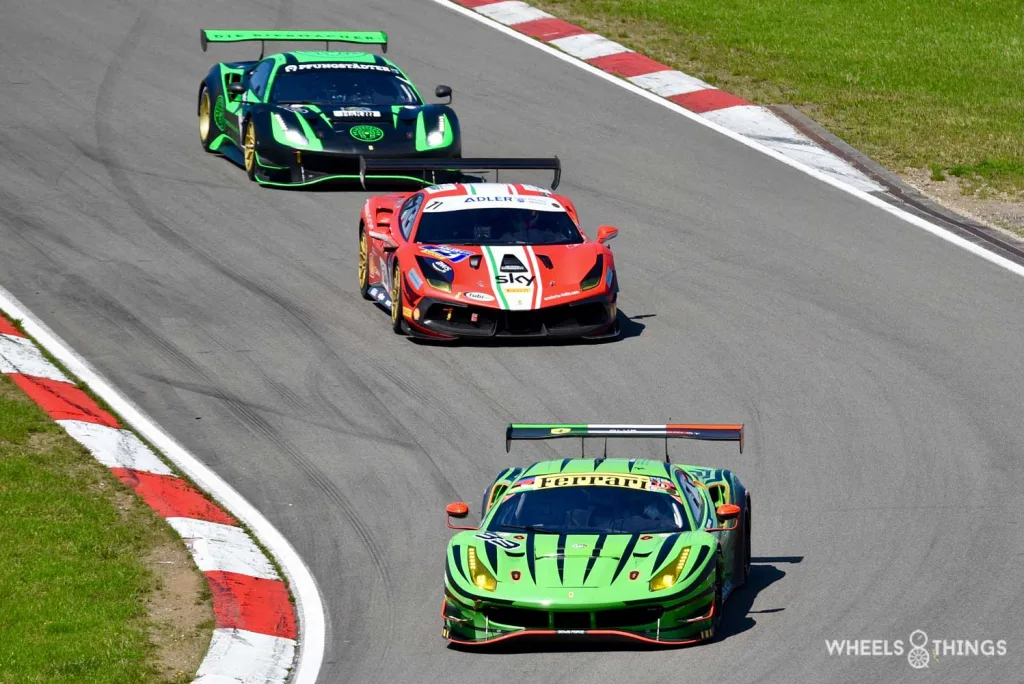
In this series, the GT3 models obviously rule and we only see GT3s on the podium. Victory goes to Axel Sartingen’s 488 GT3 Evo in both races.
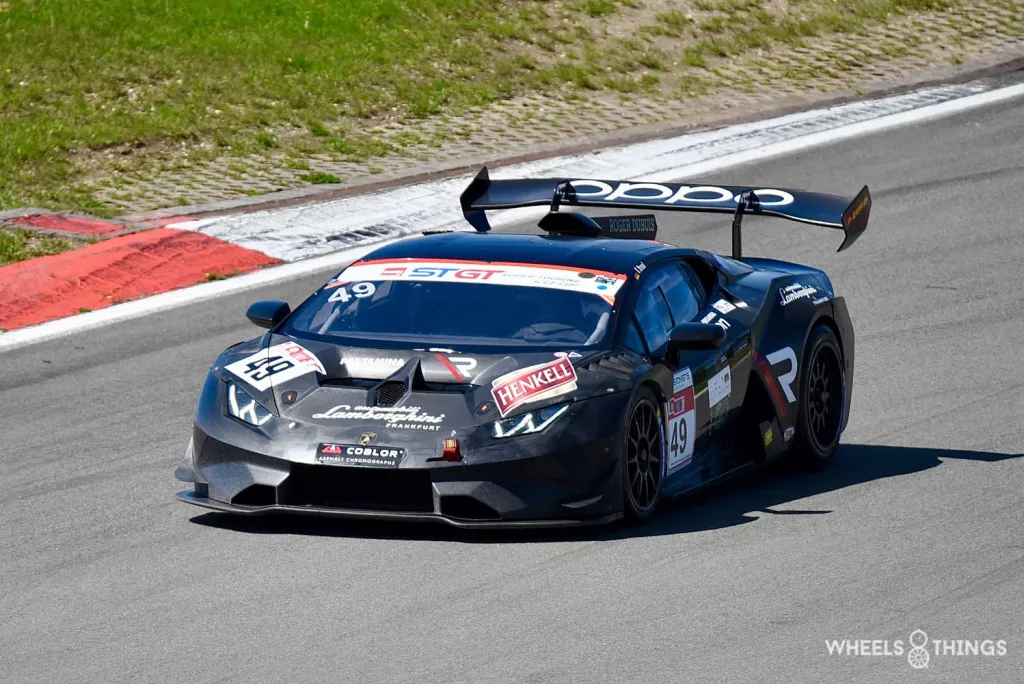
This “rascal” with his “Ferrari Huracan Super Trofeo Evo” finished fourth in both races. How he got a ticket for this series is still a mystery to us.
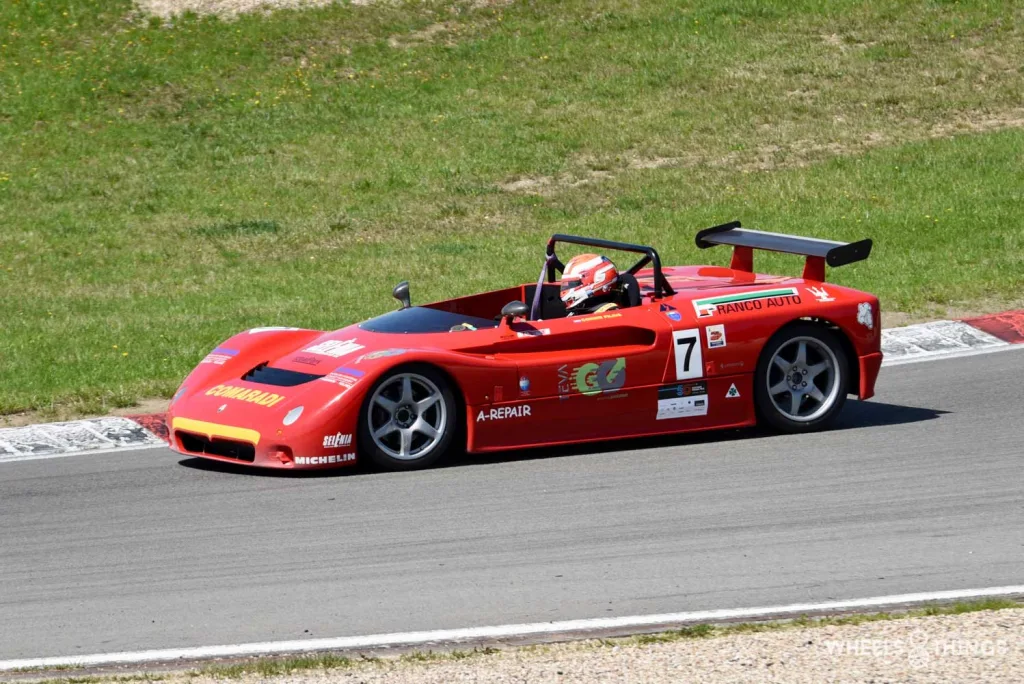
Besides this “slob” and the Ferrari violence, there was the participation of a Maserati Barchetta. This rather rare Maserati was built for a brand cup ( Grandtrofeo Barchetta ). Sixteen examples were built for this purpose and were allowed to participate in this cup in 1992 and 1993. With its modest 2-litre V6 engine, this Barchetta is no match for the cars of its Maranello colleagues.
VINTAGE NURBURGRING
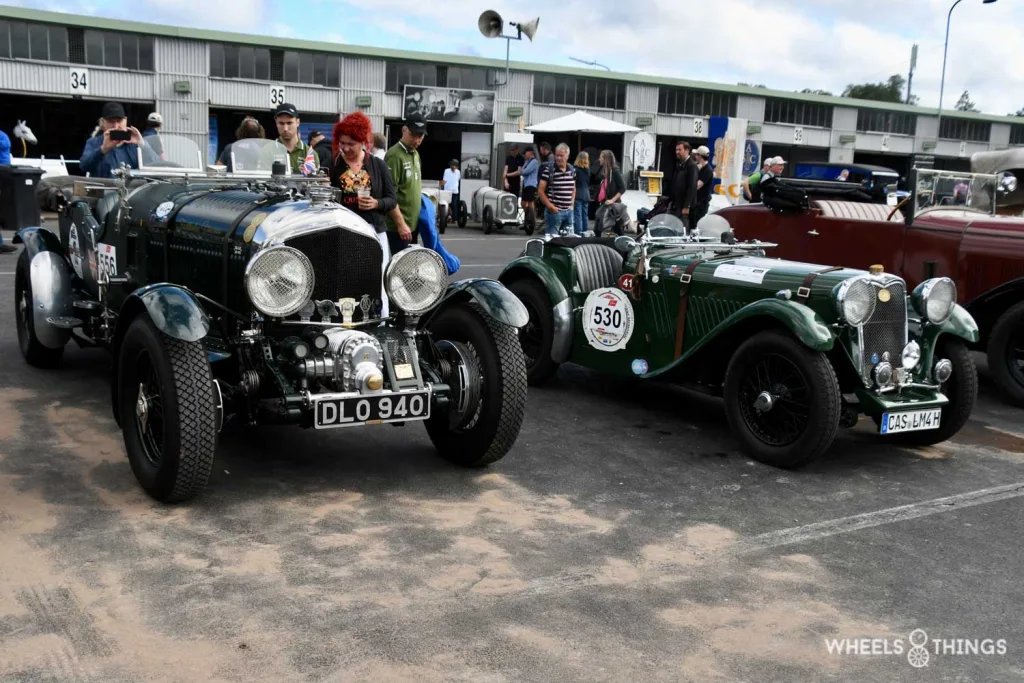
The oldies of this meeting are found every year in the old historic paddock of the Nürburgring. These pre-war models have always been an important class in the OGP organisation.
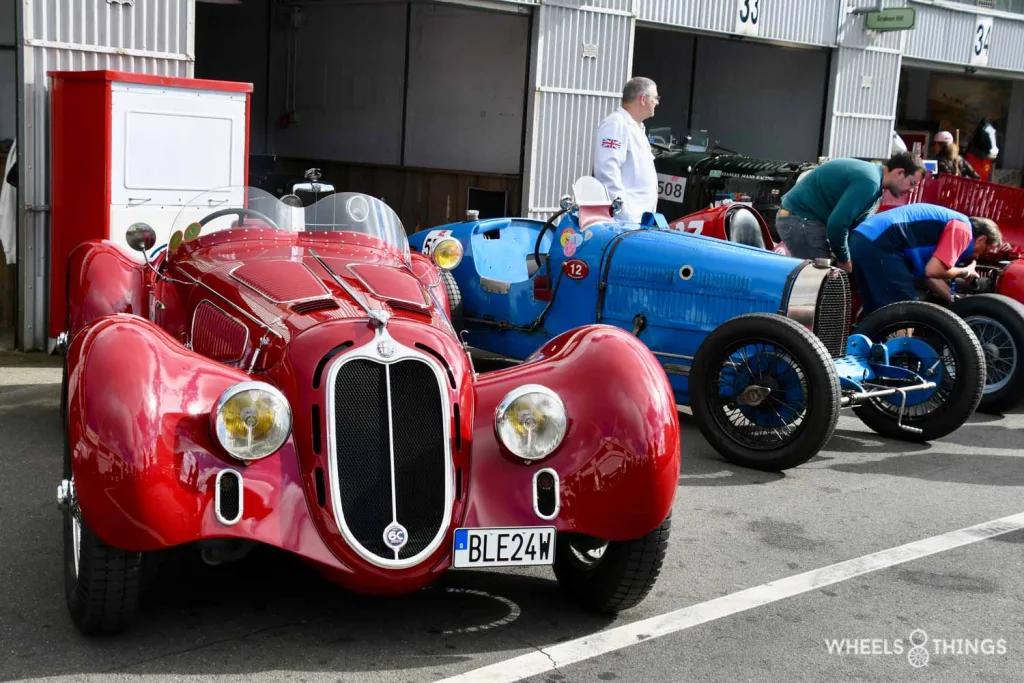
And this time there were really a lot of participants. For the first time, there was no longer a competition involved either. Previously, these “old men” had to perform a regularity ride. That was dropped this time and they could tour to their heart’s content on both the new and old Nürburgring. And yes the Nordschleife is of course where these cars really come into their own.
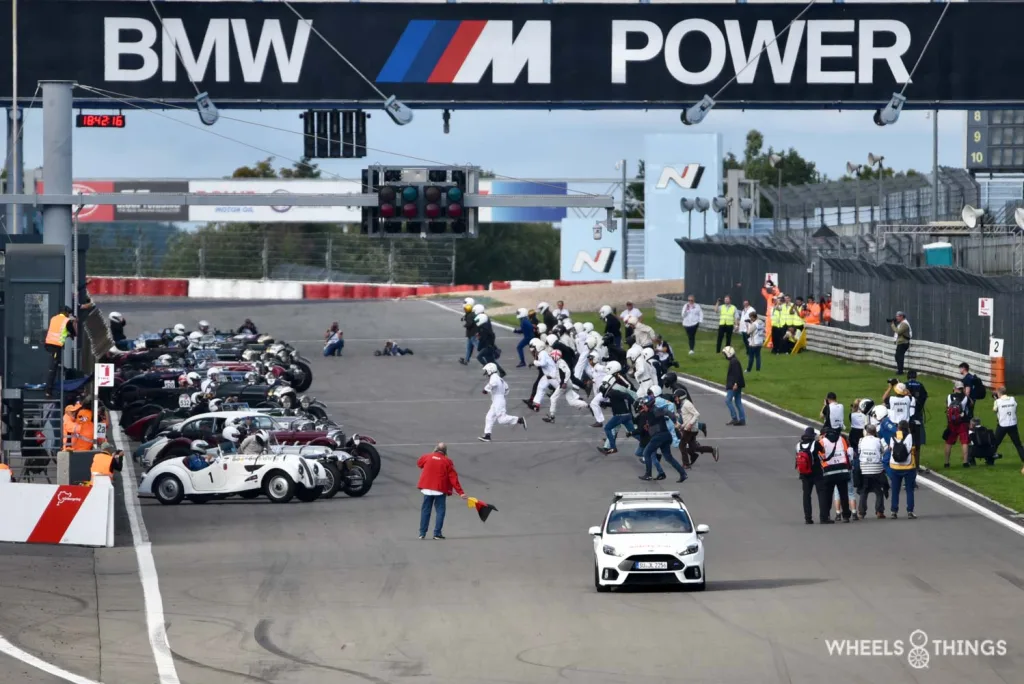
They were also allowed to drive three heats at the new Nürburgring, each of which was preceded by a “Le Mans start” where the drivers had to walk to their cars before they could start. But for safety reasons, this was a show start only. The cars were met by a Safety Car which then guided them to the real start.
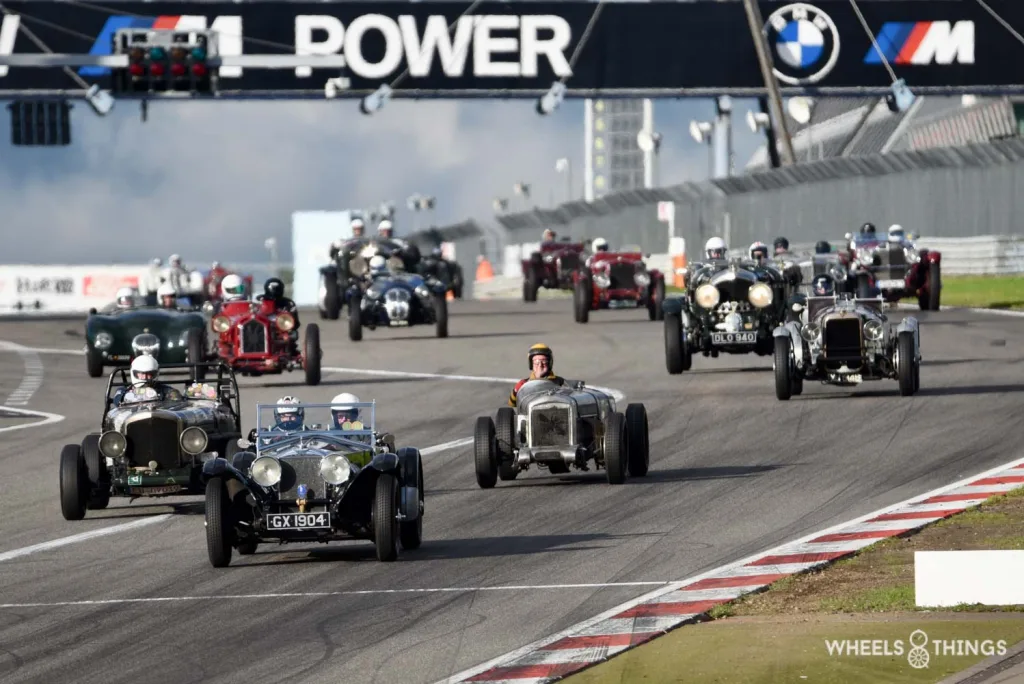
And the “fine fleurs” of the time were almost all present with cars like the BMW 328, Bentley Speed Six or Blower, Alfa Romeo 6C, Lagonda 16/80, Mercedes-Benz SSK or 720 SKL, Veritas BMW RS, Alvis Firefly, MG ND or a Riley 15/16. Several models were even at the start in multiple copies. Of the BMW 328, there were even 5 of the once 464 exeplars built.
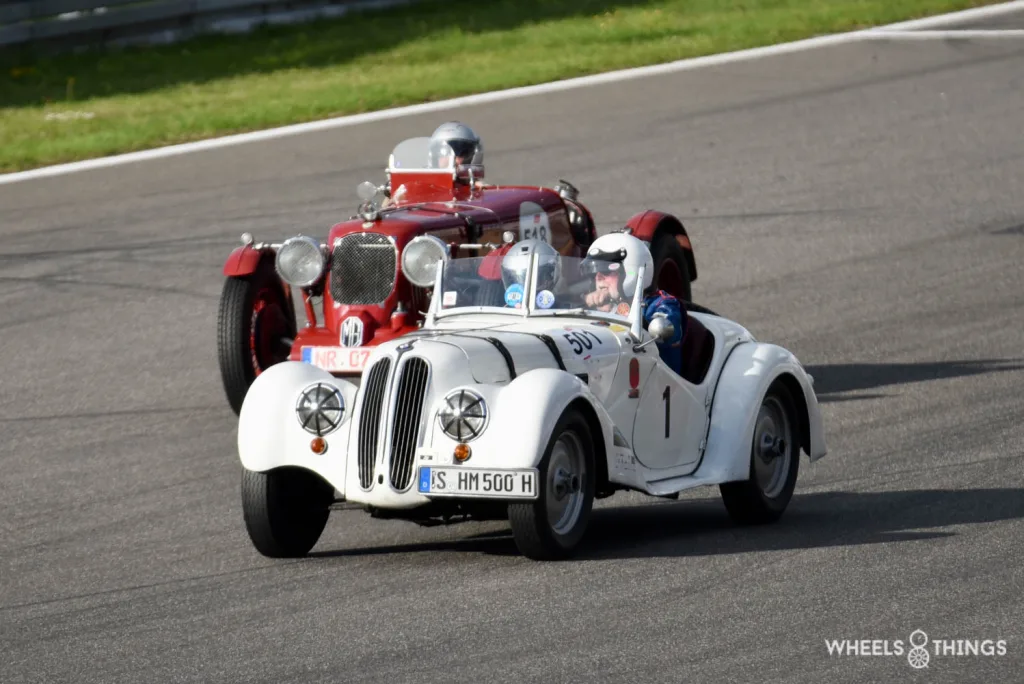
At the head of this field was, of course, the BMW 328 with start number 1 driven by Ulrich Sauer, who, together with his granddaughter, got the mob going. Son Martin also took part in this parade with a similar car.
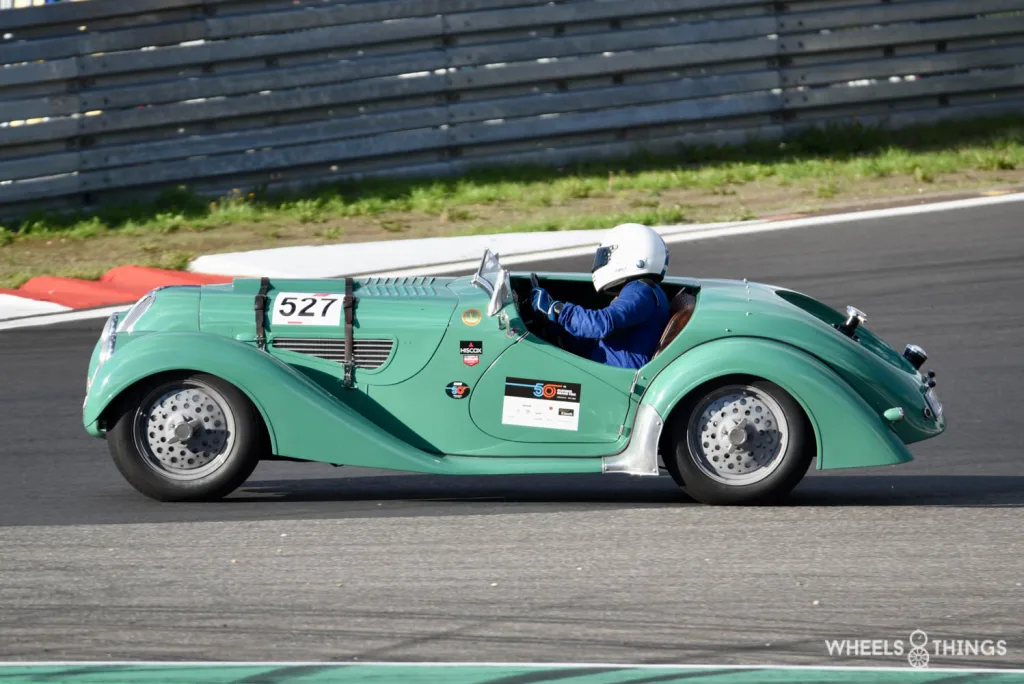
Now surely there were some participants who did it a bit more ferociously like the pilot of this green BMW 328.
DUNLOP GENTLE DRIVERS PRE 1965 TROPHY
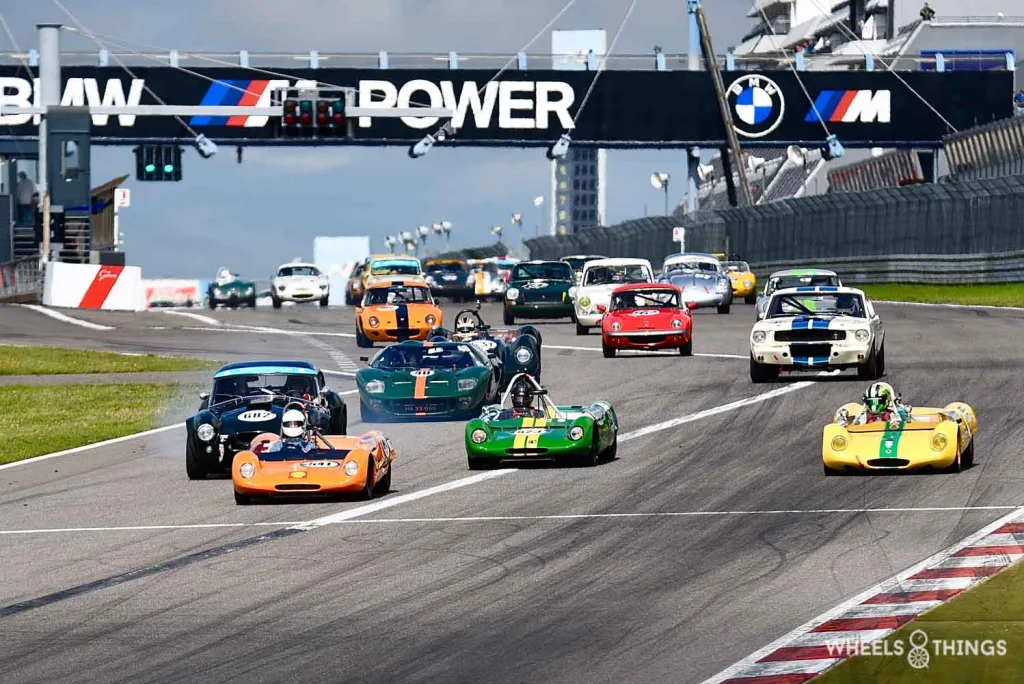
The first of two Dunlop Trophy’s was one for cars up to 1965. We saw a very diverse starting field with proto cars like Lotus 23 or Elva MK VII, GTs like the Porsche 356 and even the very first 911 models, a Shelby Cobra and touring cars like a Chevrolet Camaro, Ford Mustang and even a Volvo P122. With just under 50 participants, this was certainly a very nice series.
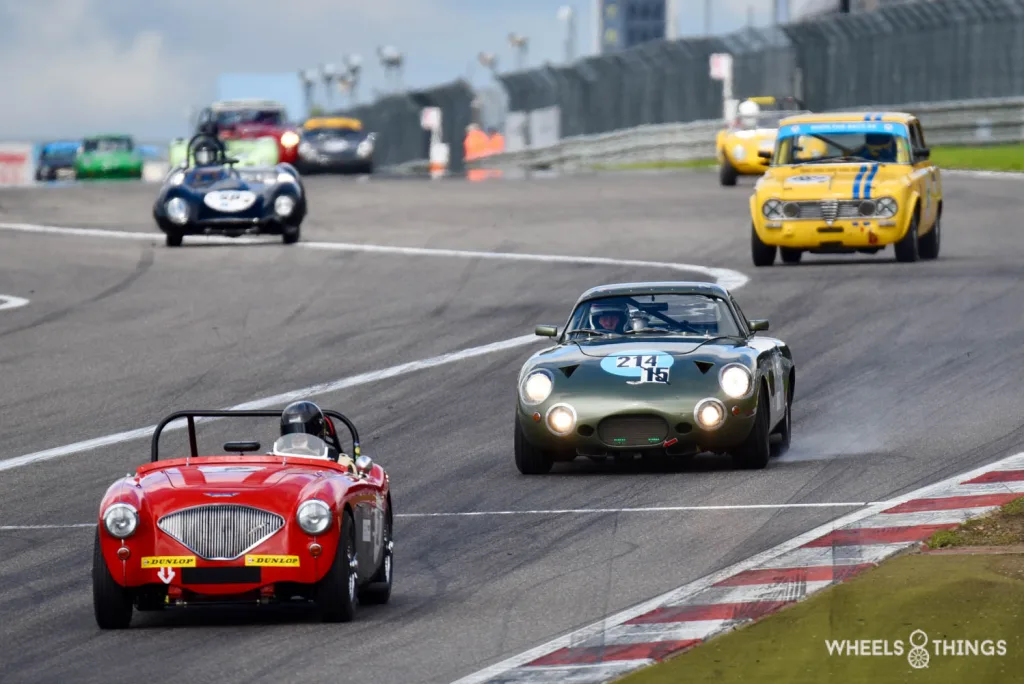
It is obviously the protos that fight for the win and this goes in both motos to Felix Haase’s Lotus 23 ahead of Georg Hallau who is also at the wheel of an identical Lotus.
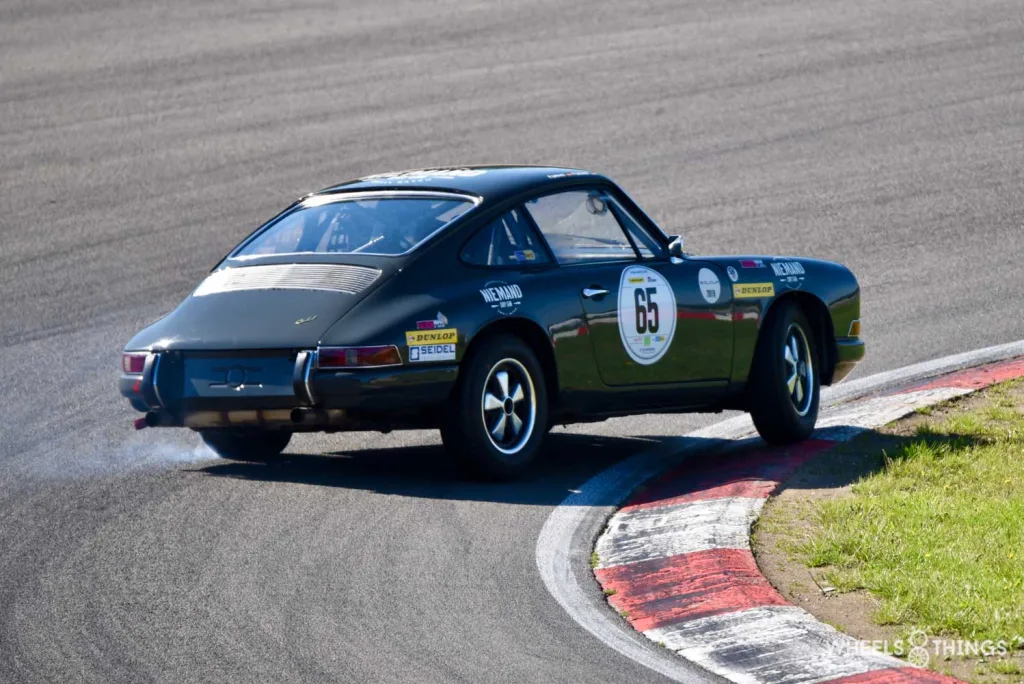
Third place went, also twice, to the Shelby Cobra of the Kolb/Stippler duo. The spectacle was provided in part by the pilot of this Porsche 911 that slid straight through most corners.
DUNLOP FHR HTGT TROPHY
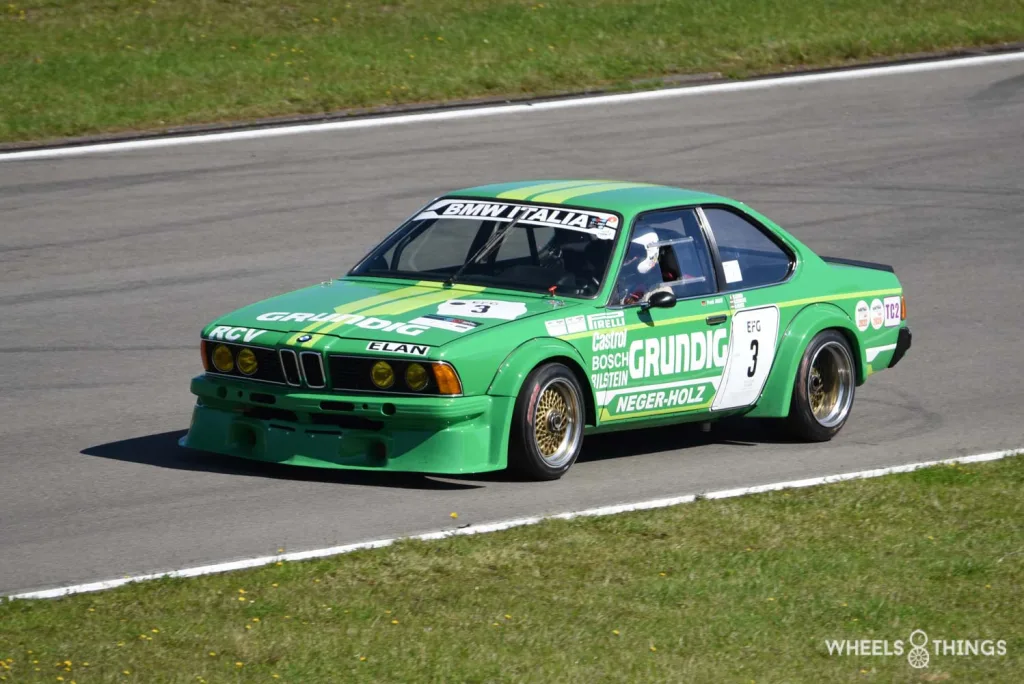
The second Dunlop Trophy has even more participants than the previous one with 60 starters. Here it is the slightly younger colleagues who are allowed to participate with cars up to 1981. Again a very diverse starting field with of course many German cars such as a Porsche 910 and again the 911 or 914/6, BMW 2002, 30CSL, 635CSi and M1 and even an Opel Monza. And there was also opposition from Italy coming from Alfa Romeo with several 1750 GT and an Alfa Sud.
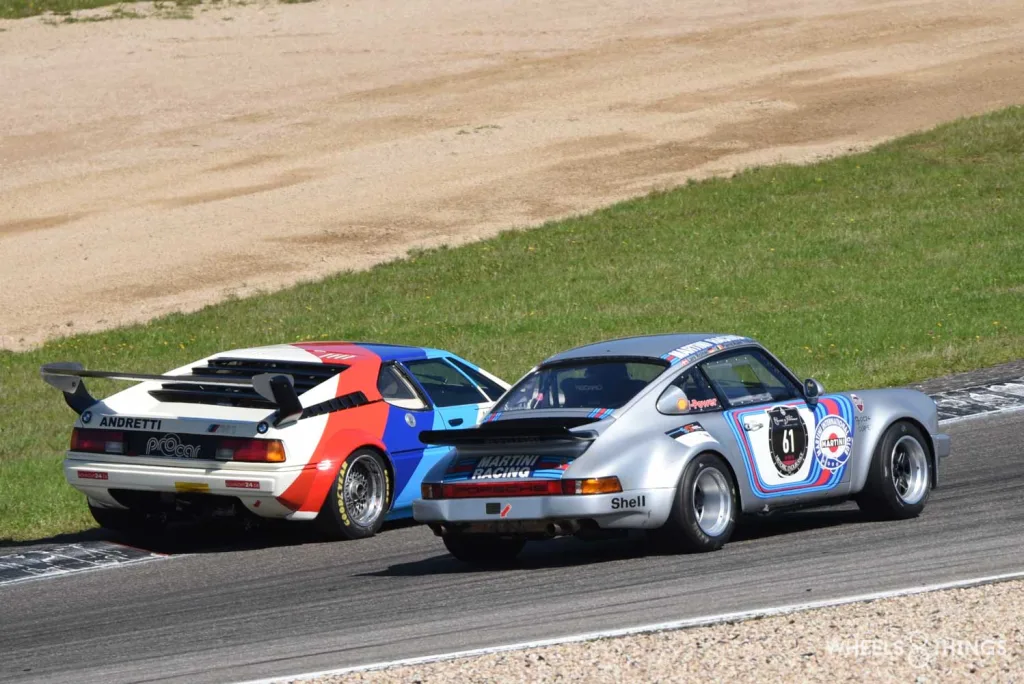
Instead of two half-hour matches, there is only one match at this Trophy. This one does have a duration of 65 minutes.
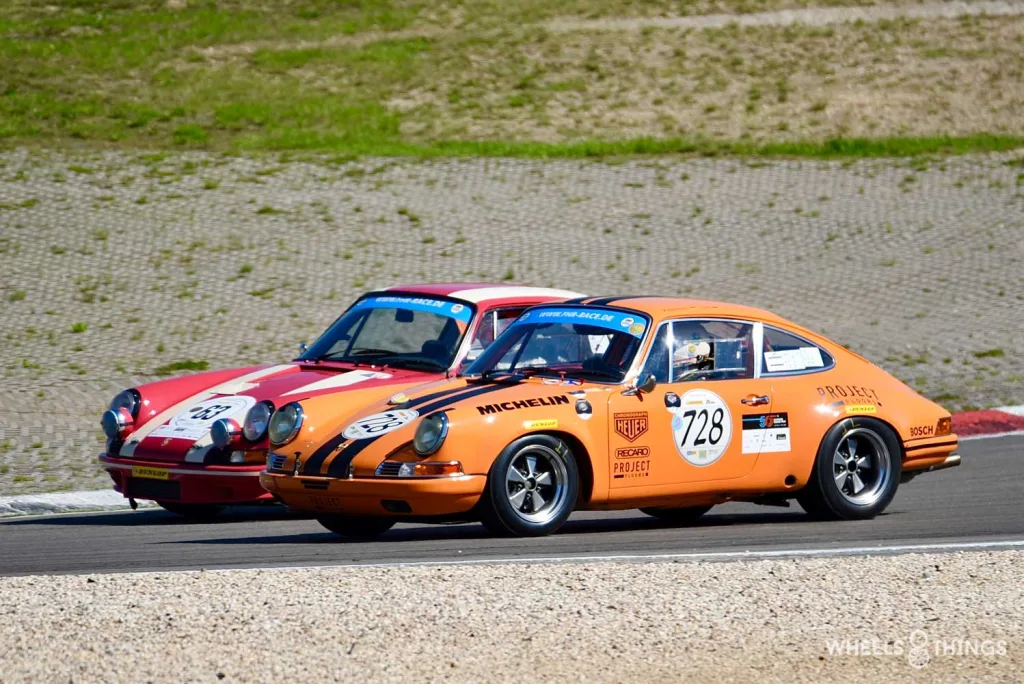
It is also the only one of the weekend that was contested in wet conditions and ends, a bit like F1, with a pack of penalty times for infractions. The full podium is for Porsche with two 911 RS models on P1 and P2. Lars Rolner and Patrick Simon finish 6 seconds ahead of fellow drivers Anette Raus and Pierre-Alain Thibaut.
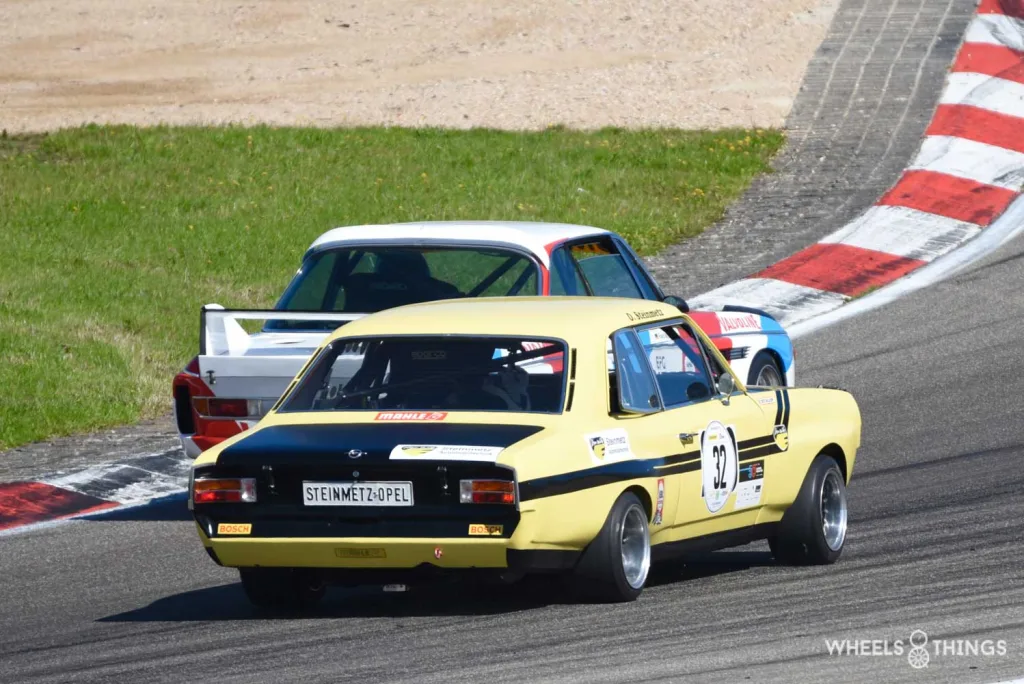
TOURENWAGEN GOLDENE ÄRA
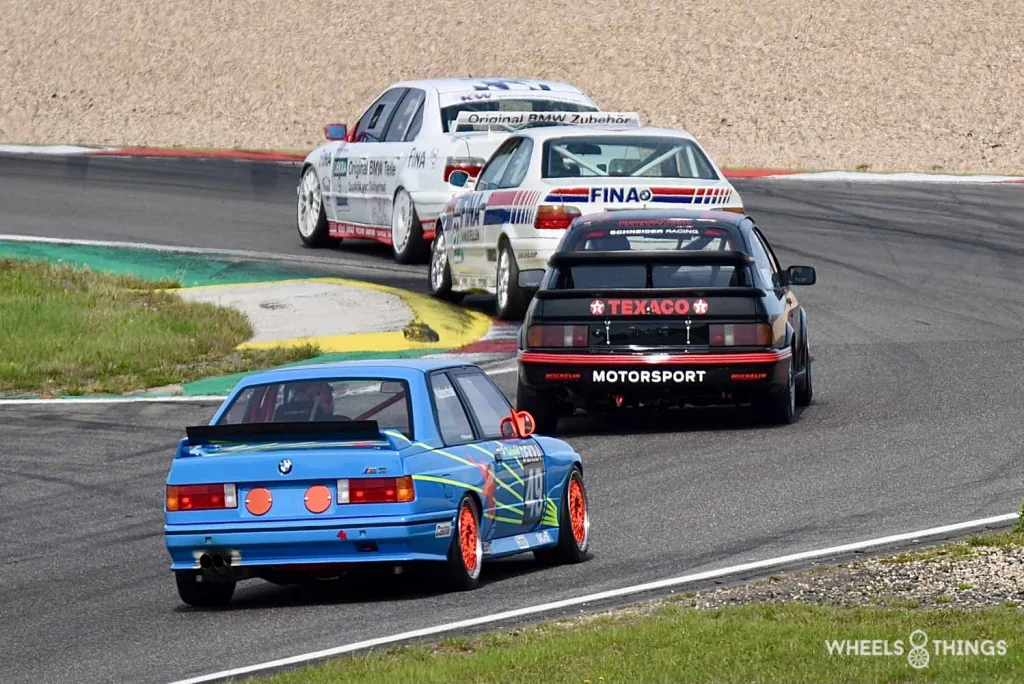
You could already become acquainted with this new series in our report on the Zolder Historic Grand Prix. Of the then small starting field in Zolder, there was none at all here. At 60, it was a complete sell-out.
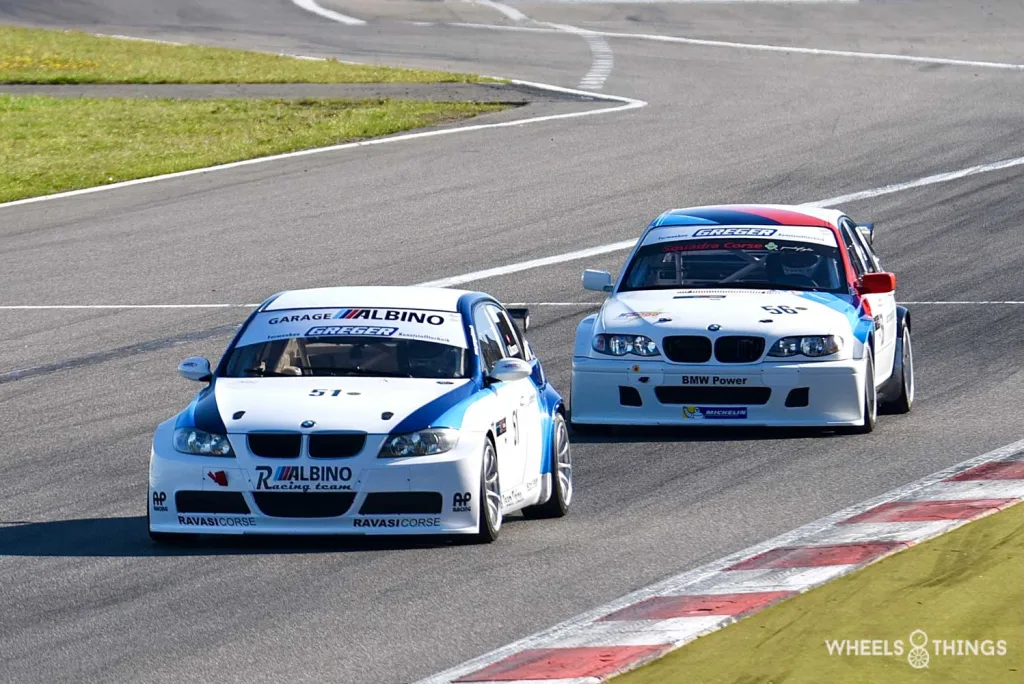
Whereas last year in the DTM Classic, only cars that complied with the then DTM, Group A or Super Tourer regulations were allowed to participate in the DTM Classic, now WTCC cars are also allowed to re-enter.
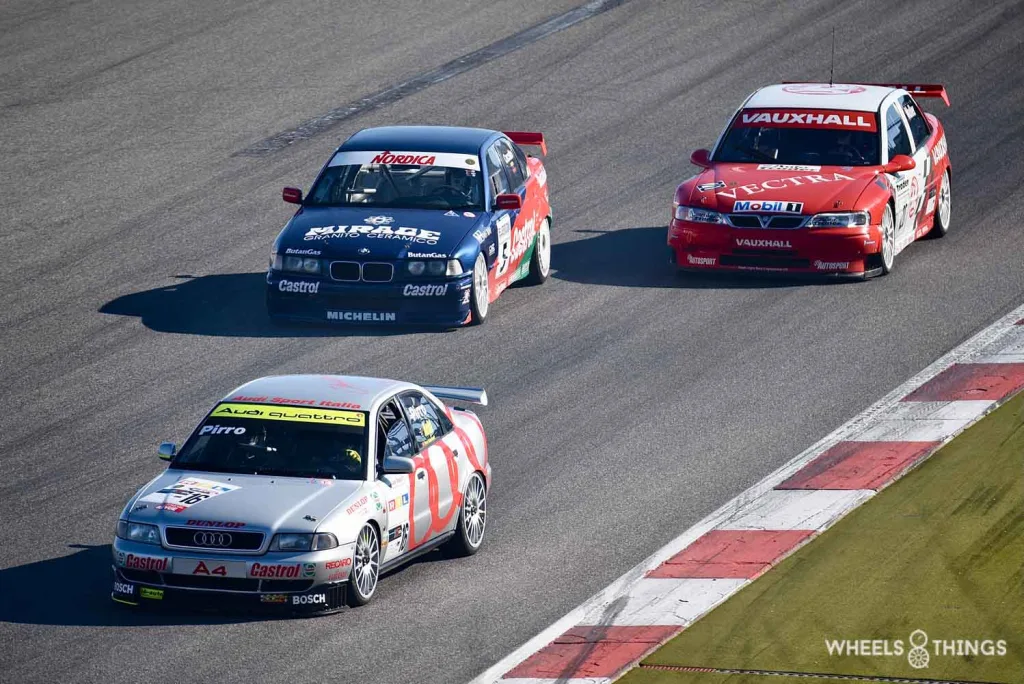
And as always at the OGP, there were fine specimens present. The 1980s and 1990s were certainly heyday for touring car racing. With the European championships, one world championship, the DTM, the BTCC and even our own Belgian Procar championship were proof of this with constructors spending huge budgets.
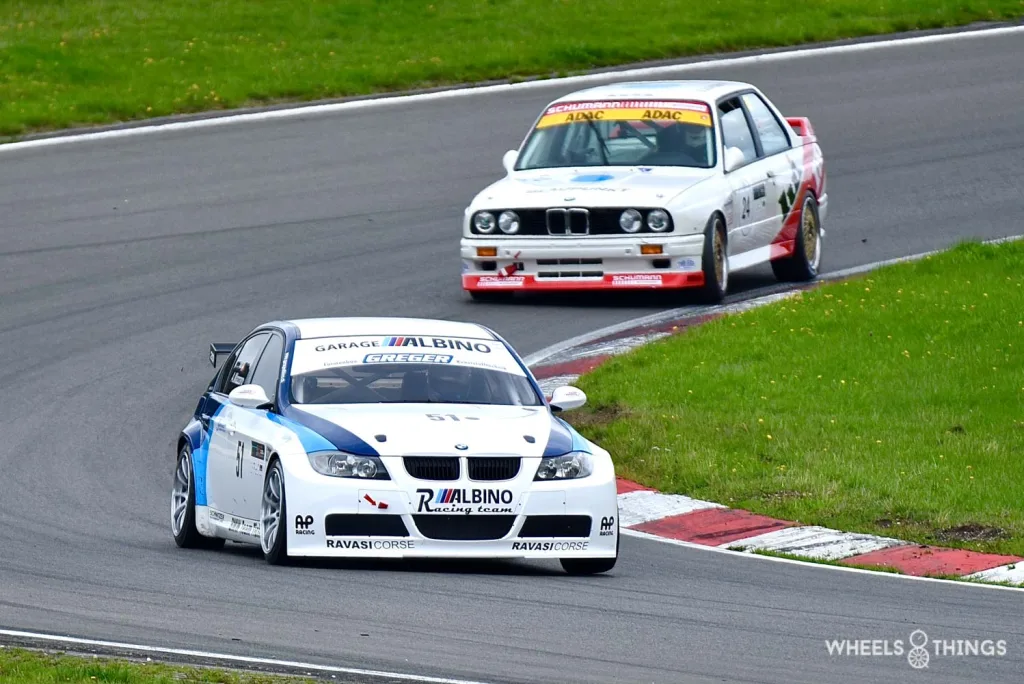
The BMW M3 E30 is without doubt the most successful touring car ever and they were also numerous but also its successors such as the 320i STW, or 320i WTCC and M3 ensured that one-third of the starting field came from Munich.
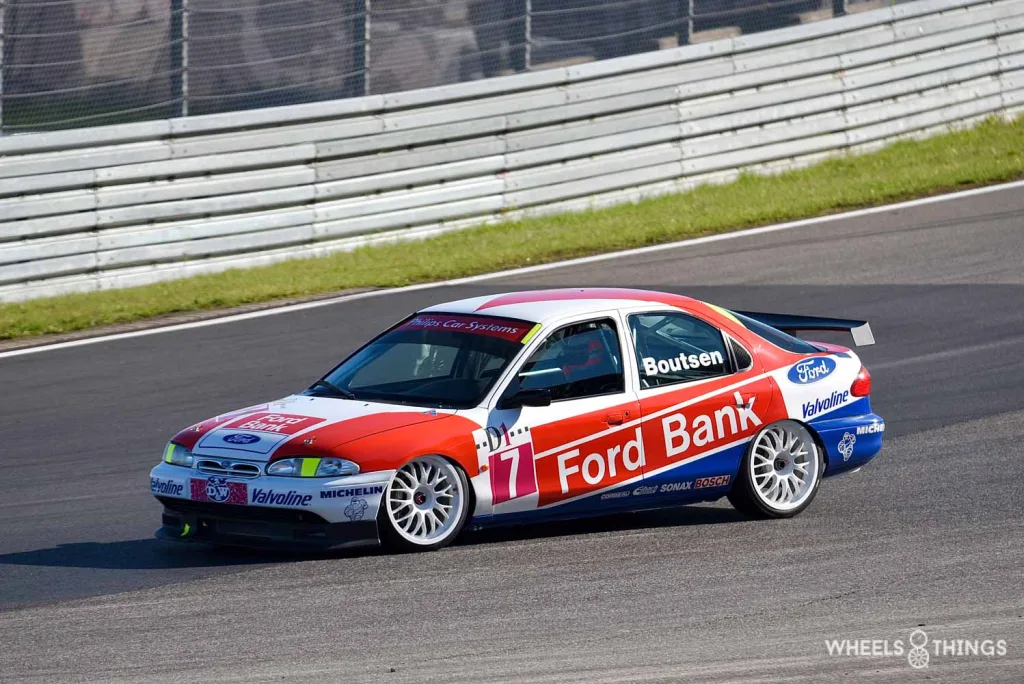
Competition came from Cologne with the Ford Sierra RS 500 Cosworth and the Mondeo STW.
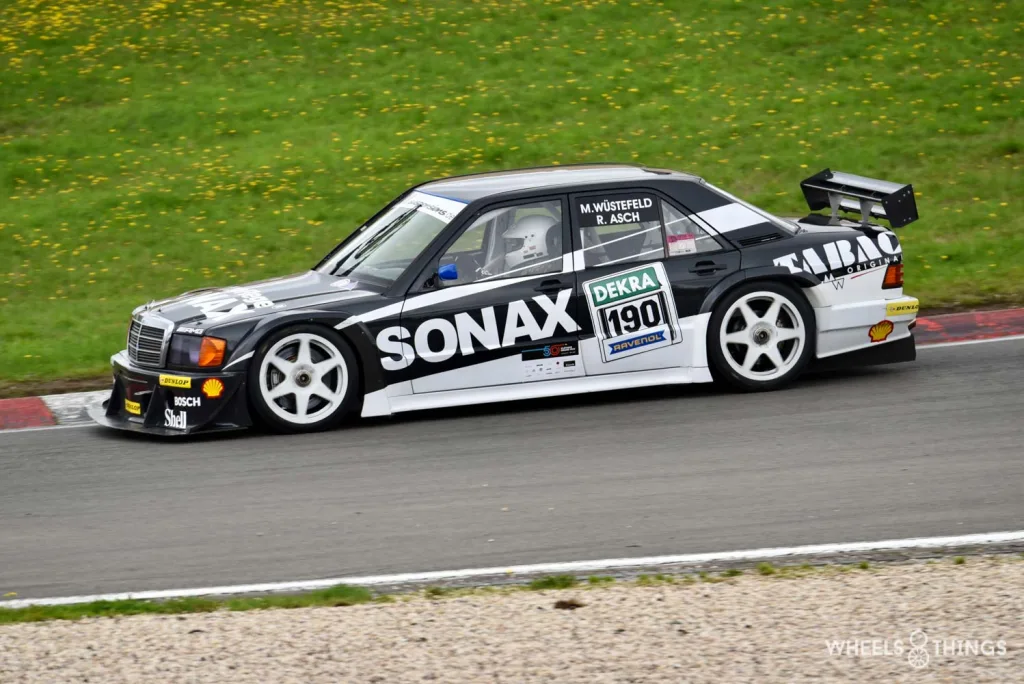
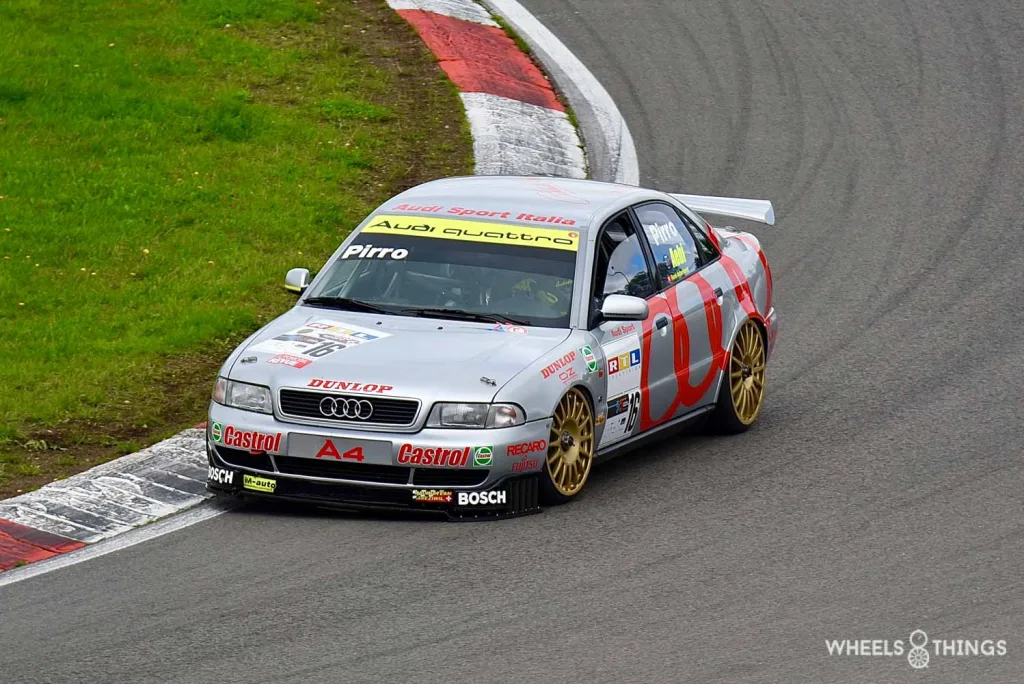
From Stuttgart some Mercedes 190E Evo’s and also from Ingolstadt there were some Audi’s like the 200 turbo and an A4 STW.
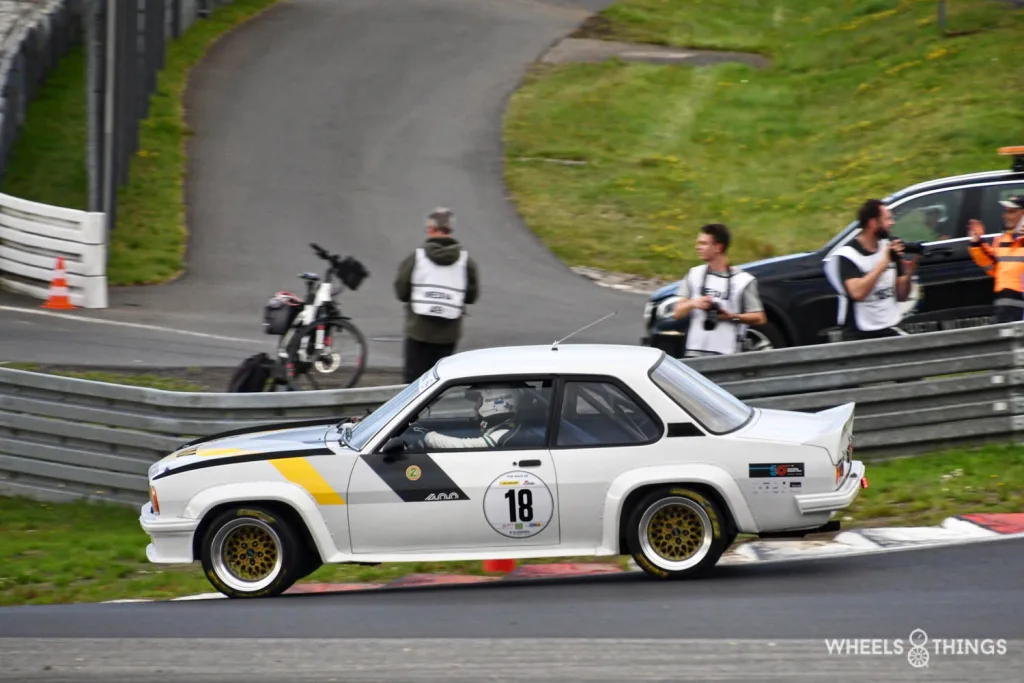
Russelheim also competed with the Opel Ascona 400 models and it was very clear with this one that it was originally developed for the rally wk.
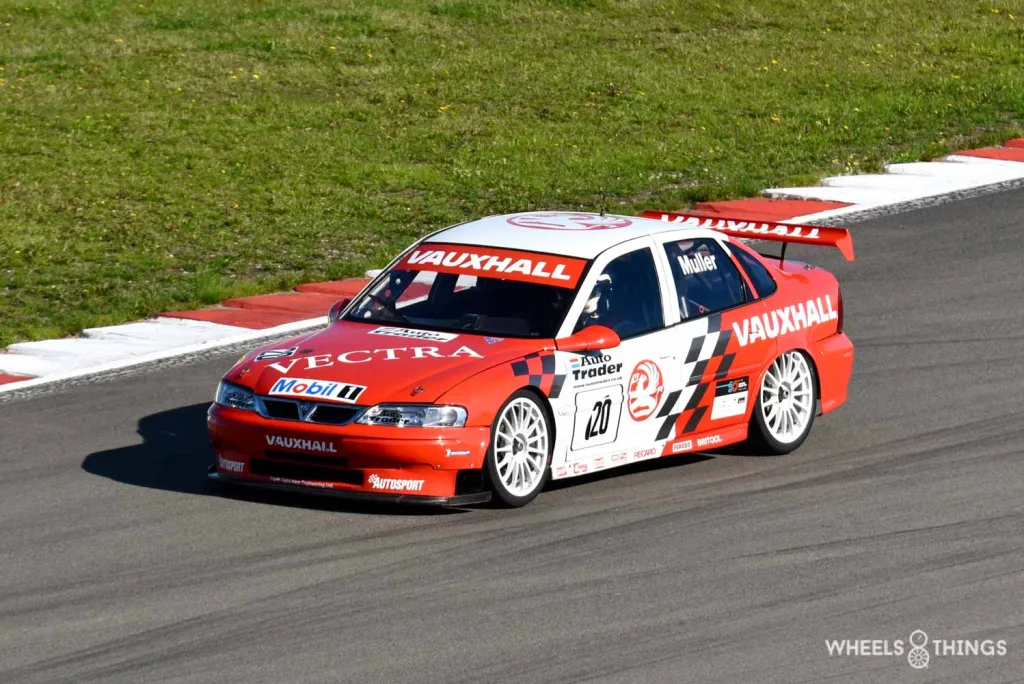
But their STW models of the Astra were also there. Some did have a Vauxhall emblem from the BTCC. And it may say Vauxhall on it but inside it is a 100% Opel.
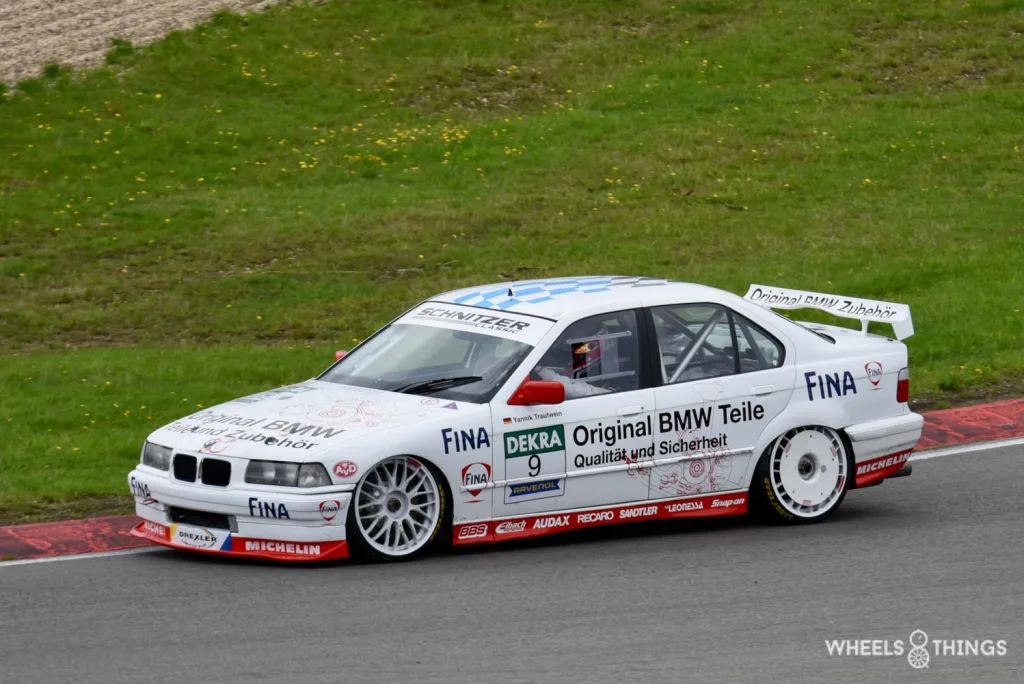
But all these regulars have to give way in qualifying to guest driver Michael Kammermann, who takes pole with his BMW 30CSL. Now, a BMW 30 CSL is more of a competitor for the DRM Revival but so be it. He makes it 77 thousandths ahead of Yannick Trautwein’s Schnitzer BMW 320i, which itself is 3 thousandths faster than ex-DTM driver Roland Asch’s Ford Sierra. Fellow driver Kurt Thiim also takes part with a Volvo 240 turbo but it needs 11 seconds more for one lap of Nürburgring.
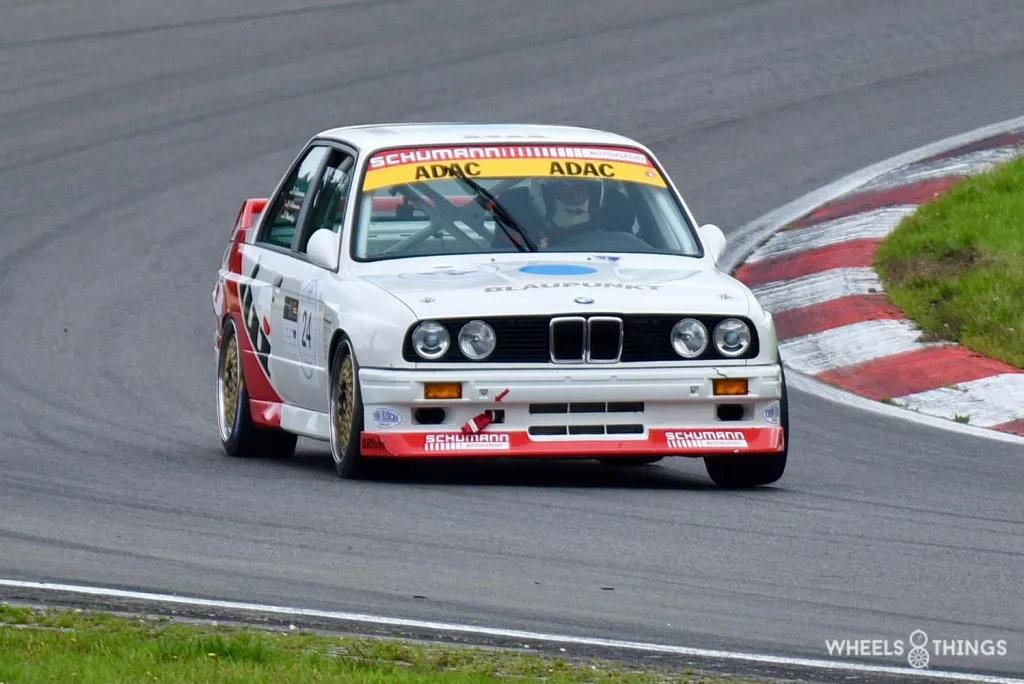
More acquaintances with Olaf Manthey ( Manthey Racing Porsche ) and Kris Nissen with a BMW M3.
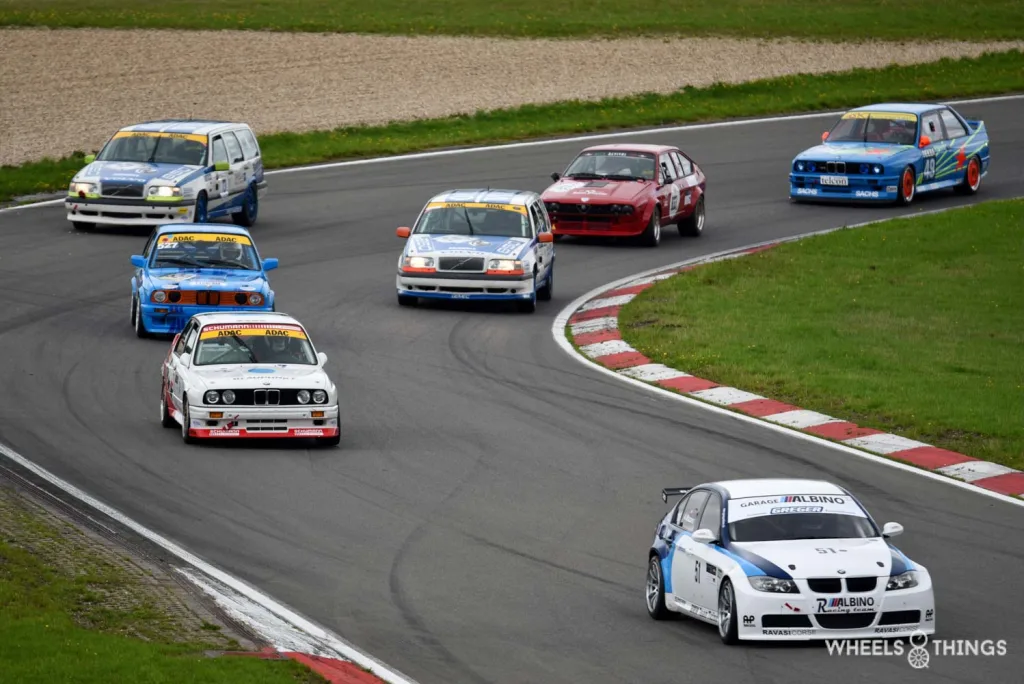
As in last year’s DTM Classic race, this new format also saw fierce competition and not only at the head of the race but also in the almost complete field.
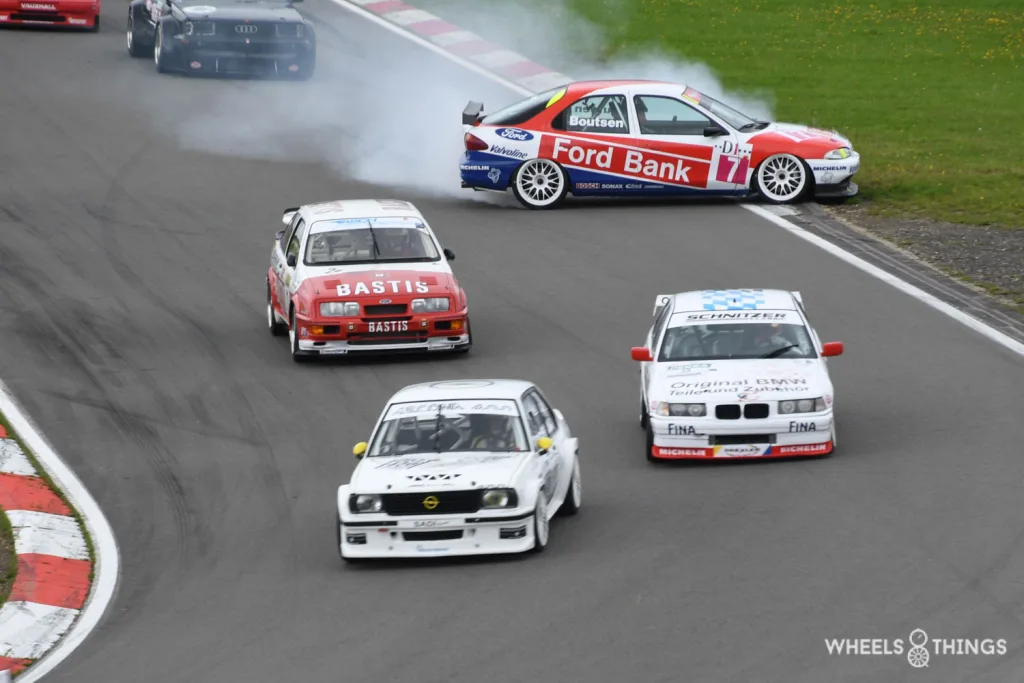
From time to time, then, things did go wrong with some slips as in the case of this ex Thierry Boutsen Eggenberger STW Ford Mondeo.
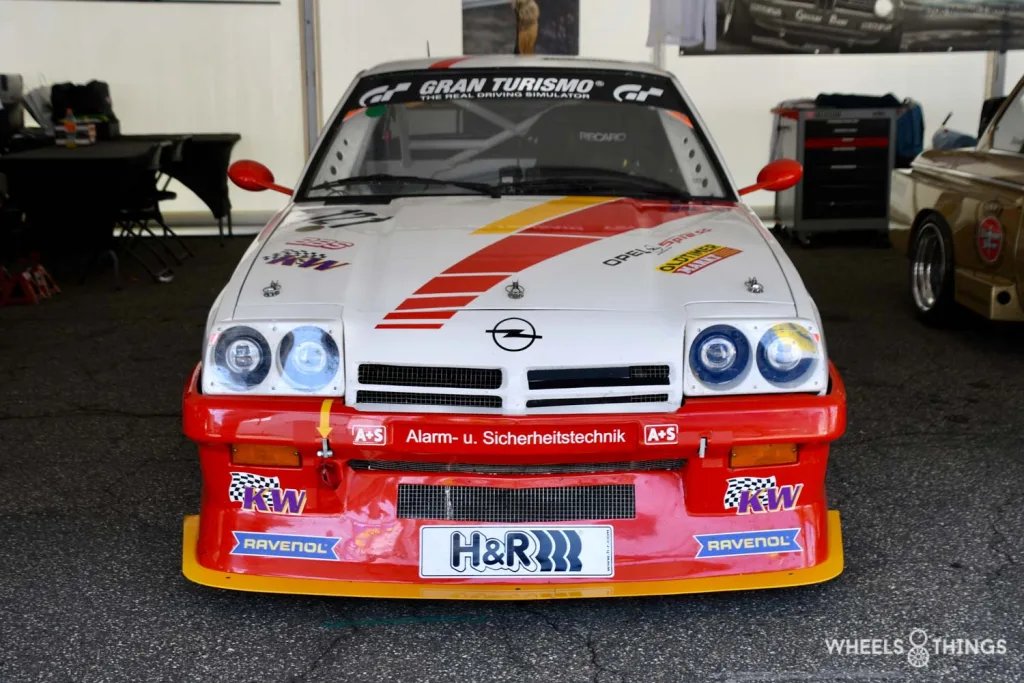
A noted guest in this series was Hans Olaf Beckman’s almost legendary Opel Manta. It is better known as the “Fuchsschwanze Manta” or the Manta with the foxtail. This tail is a typical feature of this Opel and hangs in its permanent place on the radio aerial every year during the only race it normally competes in: the 24h of Nürburgring.
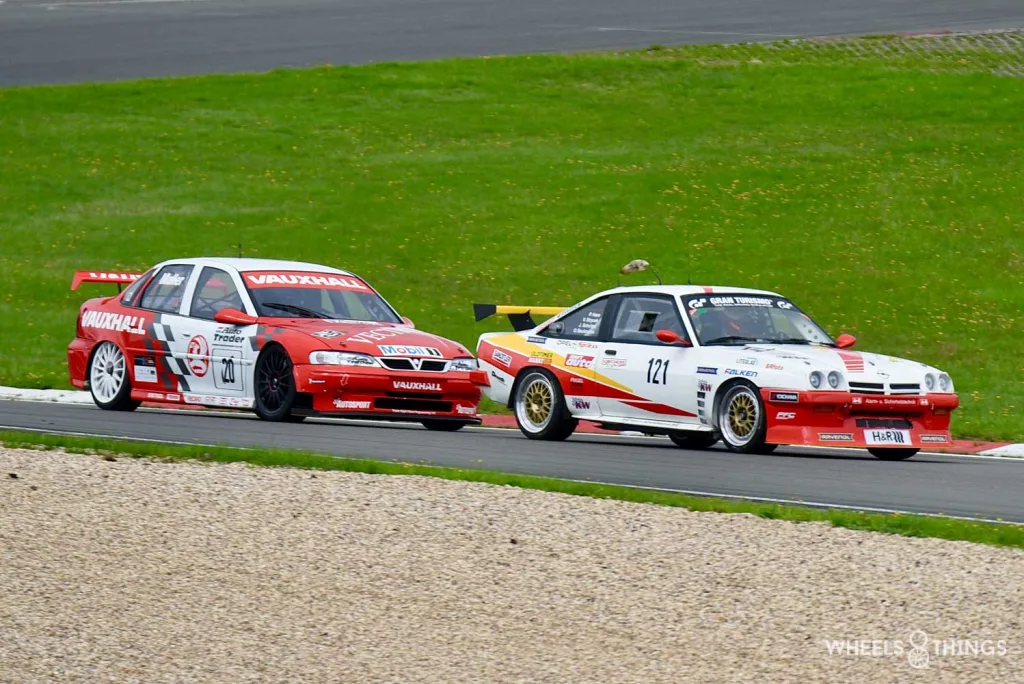
So it was a big surprise that this Manta also participated in this OGP race.
The Manta gained cult status with our eastern neighbours through its participation in the 24-hour marathon on the Nordschleife. It even went so far that when the Opel’s homologation expired and further participation was out of the question, a petition was started among 24h fans. And there are many of them every year and so they were able to convince the organisers to make an exception for this car after all.
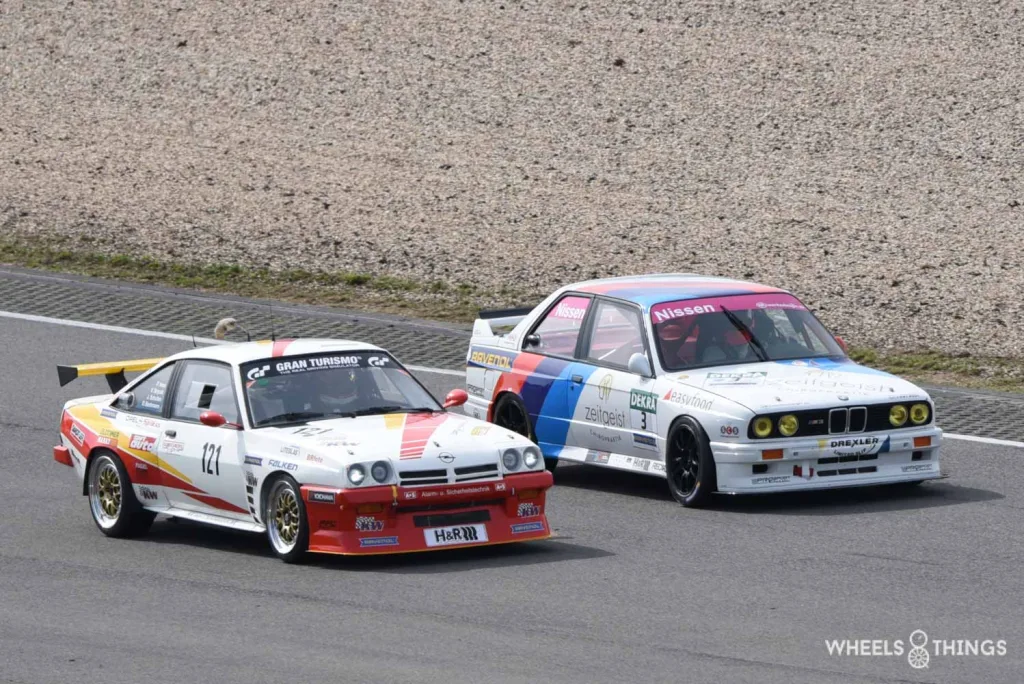
And its status is still rising because after the Manta had largely burned down in the workshop last year, the now elderly Olaf Beckmann rebuilt it. The lithium-ion battery required by the FIA had caught fire. So this problem is not exclusive to electric cars. In an old car with a lithium battery, the risk is almost as high.
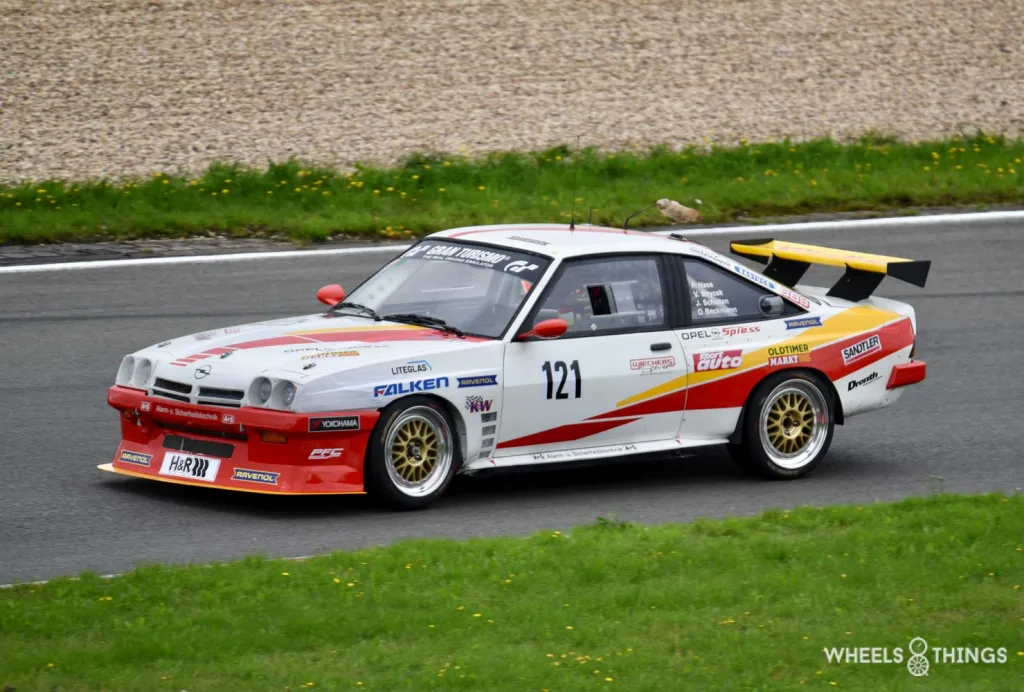
Beckman rode under the Olympic motto: participating is more important than winning and spent almost the entire race in the back. He crossed the finish line more than two laps behind the winner.
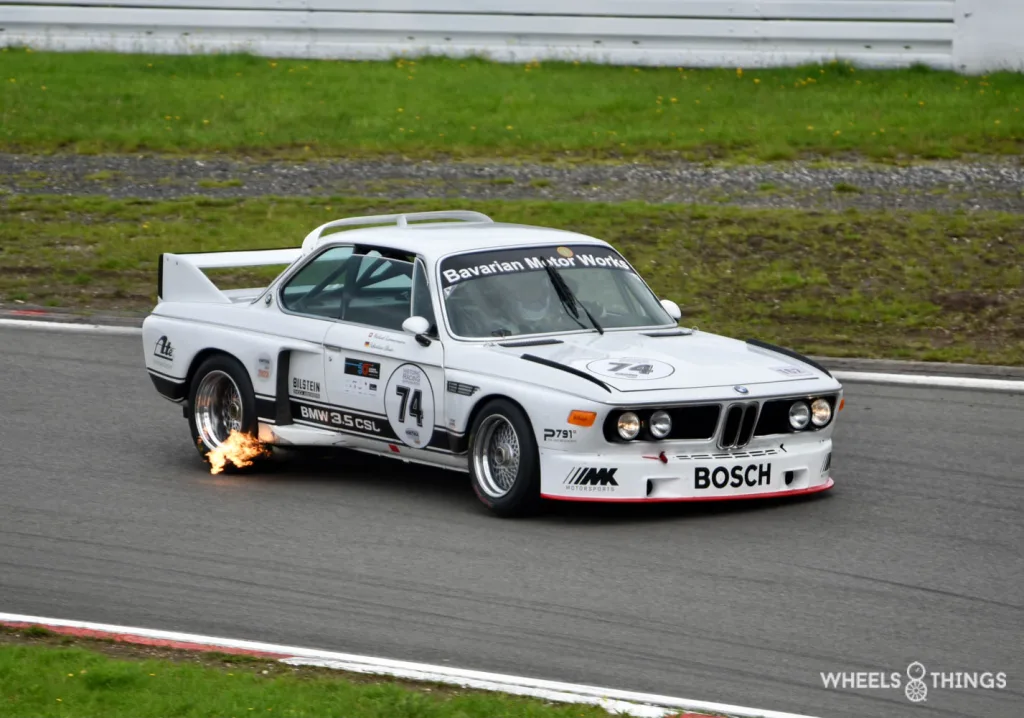
This winner in both races was Michael Kammermann’s fire-breathing BMW 30 CSL.
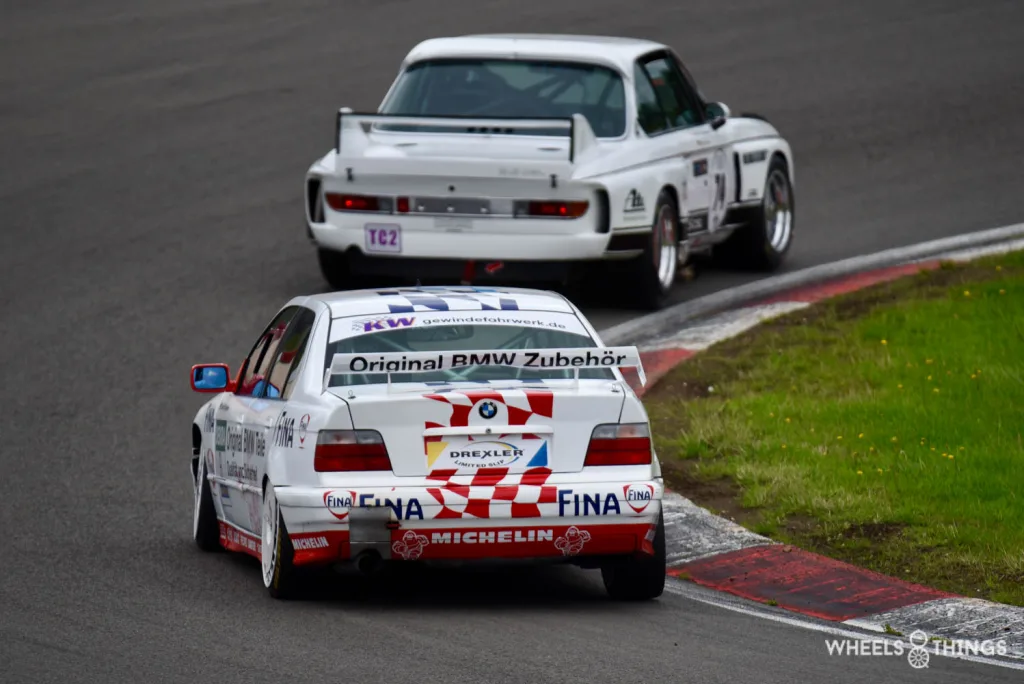
The battle with Schnitzer driver Yannik Trautwein’s fellow BMW 320i STW was at times very intense but den bompa still managed to finish just ahead of the grandson. Third place was twice for Paul Mensley’s Ford Sierra Cosworth RS 500.
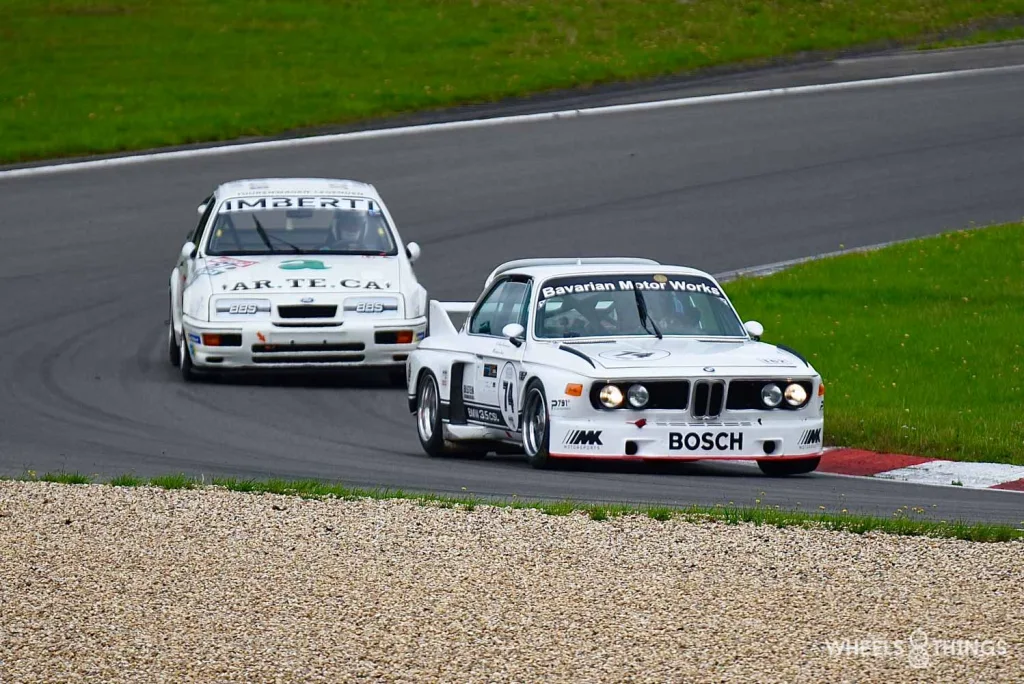
Might seem a bit boring with the same podium twice but it certainly wasn’t. In the first race Mensley had had to fight his way all the way through the field to the front and in the second race he was on P2 two corners before the end. A perhaps slightly late executed braking manoeuvre for P1 went a little wrong and the Ford ended up in the grass. Trautwein then took advantage of this to move back up a place.
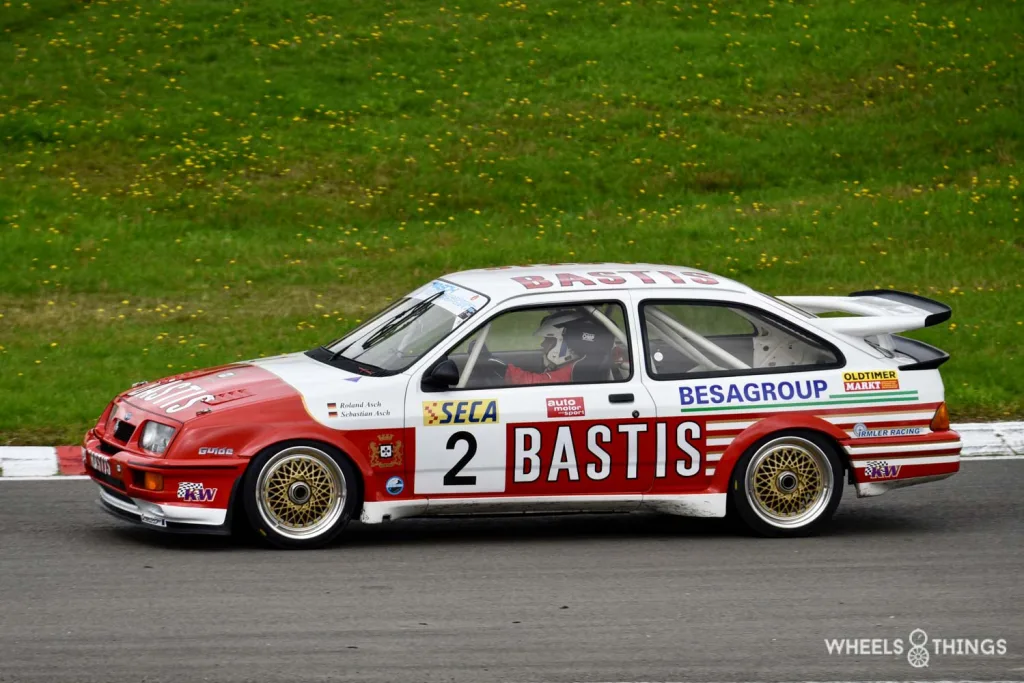
The 50th edition of the OGP had both highs and lows. The top races with their typical German series were fantastic. Both the DRM and the Golden Ära Tourenwagen were definitely the highlights of the weekend. And during these races, the grandstands were therefore packed with mostly German motorsport fans.
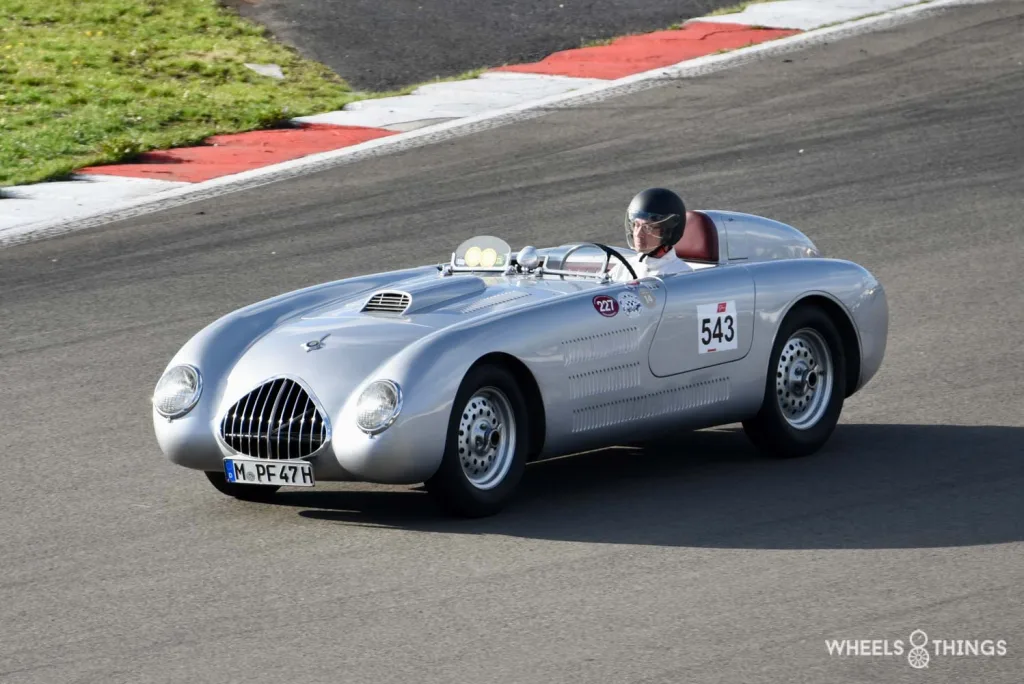
But both Dunlop Trophies and the pre-war series were also tops.
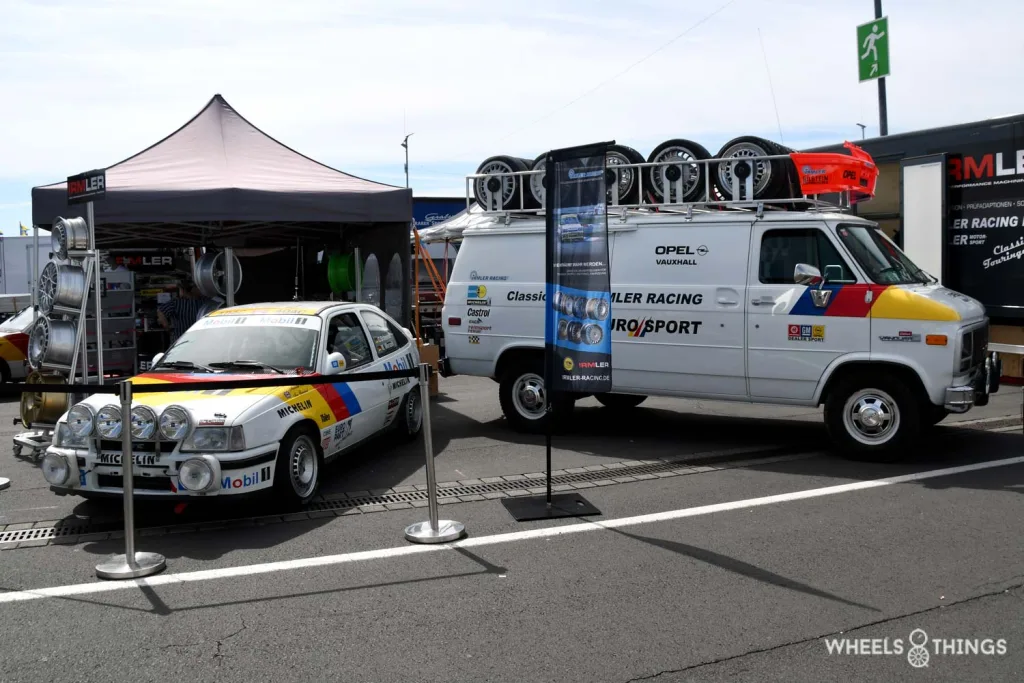
Then again, the Formula 2 race ( with only 8 participants ) and the Formula 1 demo were the disappointments. The long-established Masters F1 race is definitely a miss in this programme. The Canam and Sportscar race was also only faintly occupied after last year’s top edition. The general atmosphere in the paddock was also significantly less this edition and we had expected a bit more for this 50th anniversary.
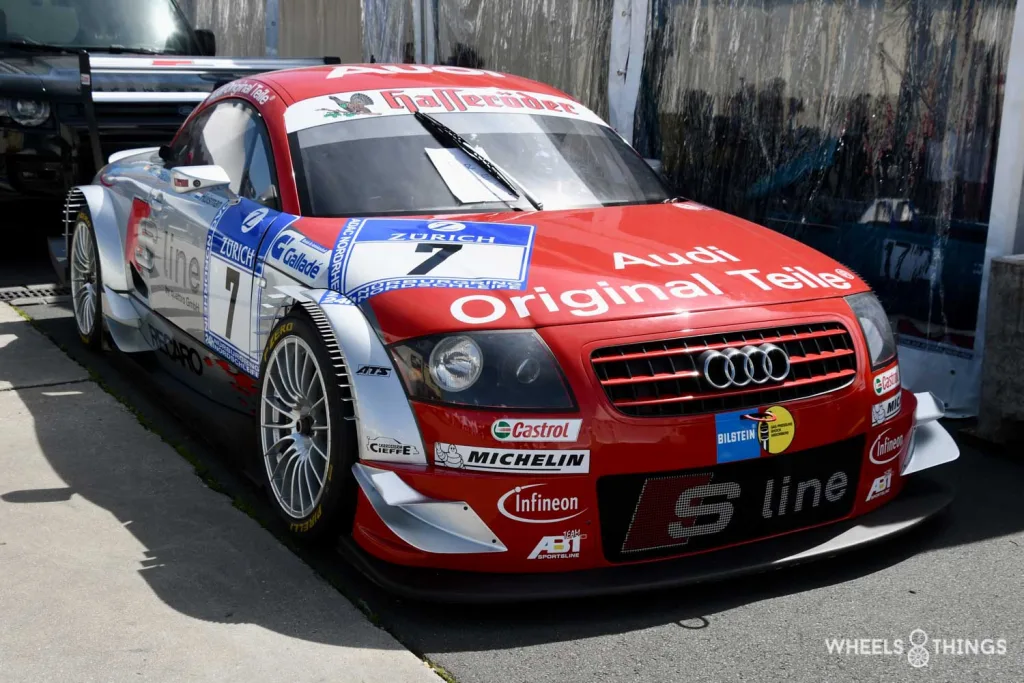
But the Nürburgring remains a mythical place to visit and if you are a fan of German touring cars, this OGP is definitely worth a visit. However, the organisers will have to think hard about how to improve in the future so that the entrance fee charged is commensurate with the spectacle on offer.







